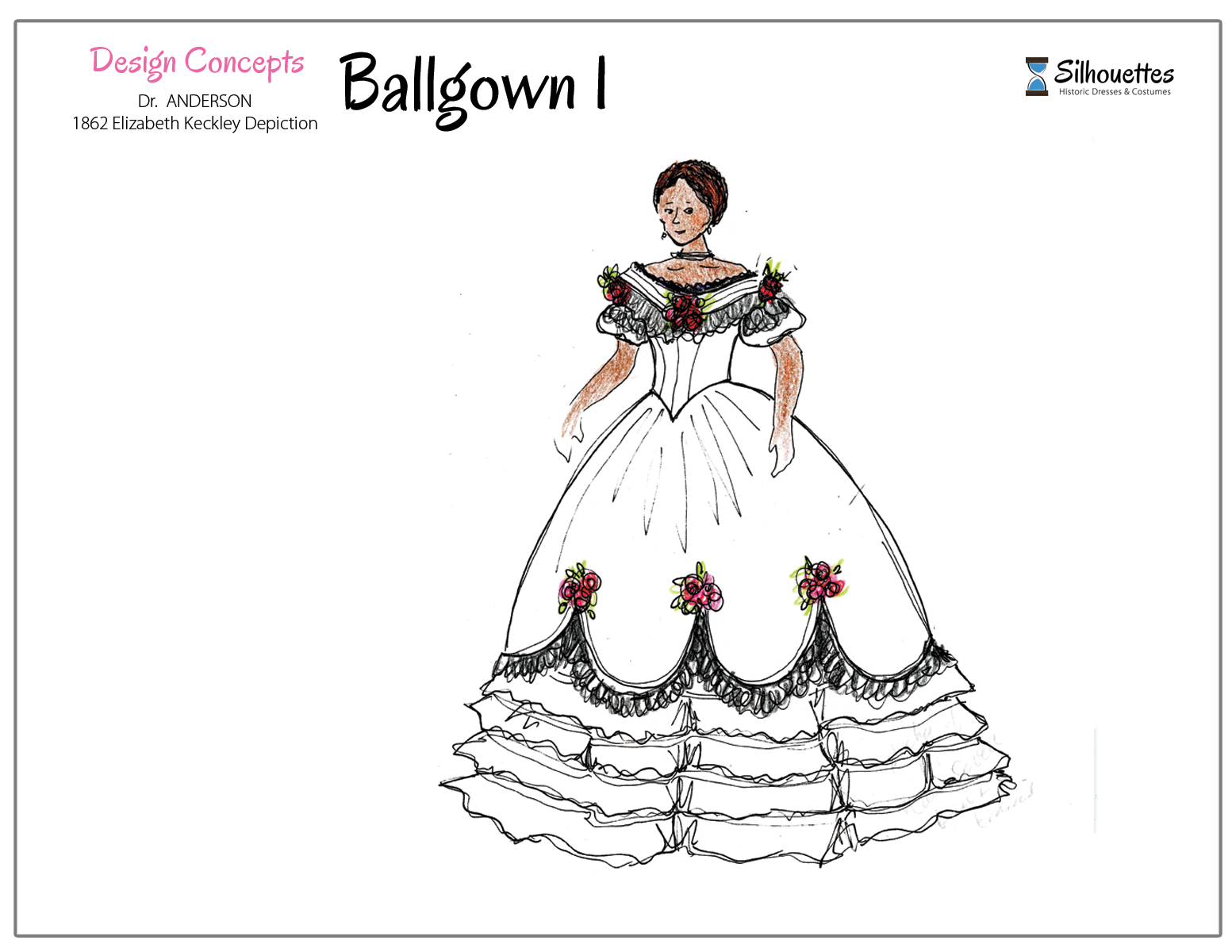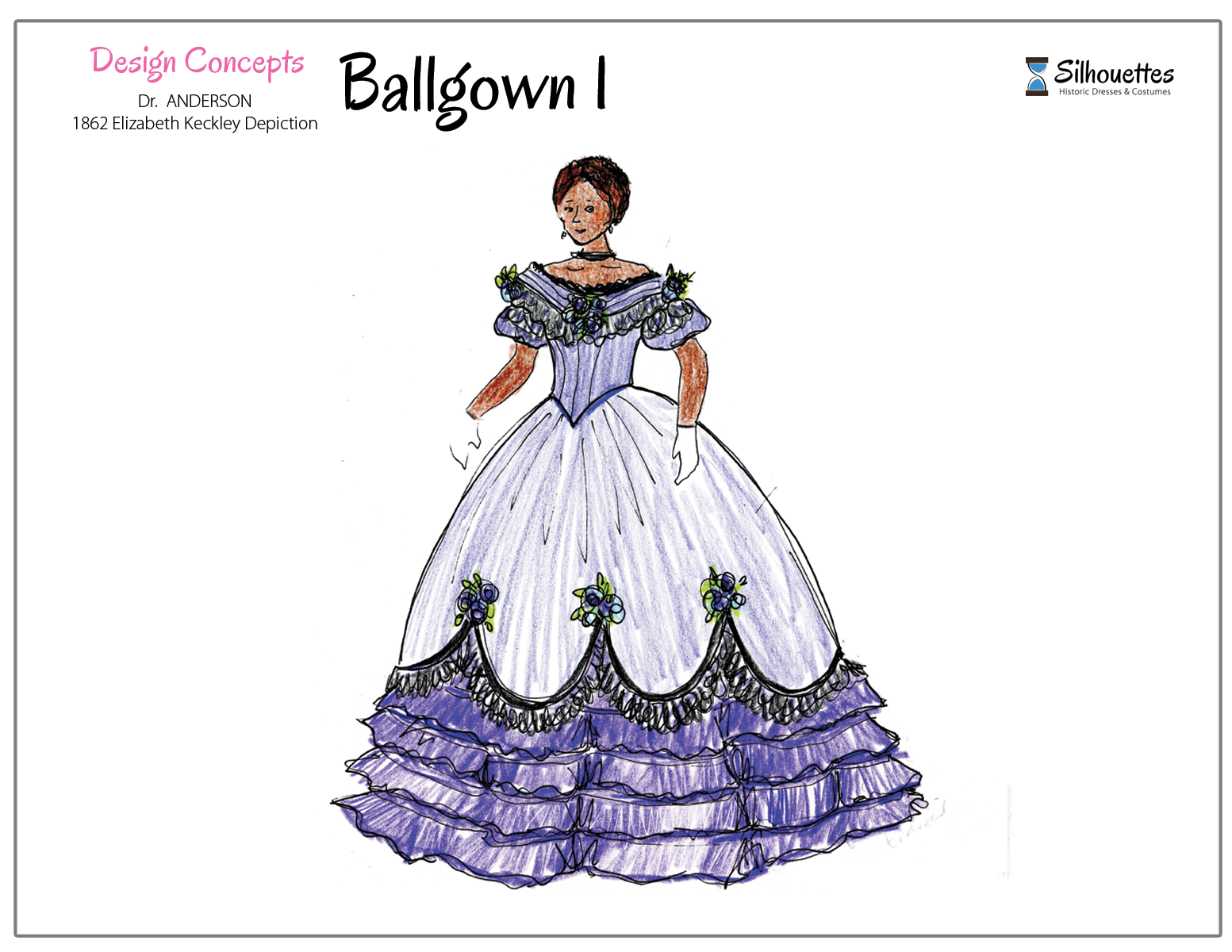
Real People in sketches by Artist of the Time
These were drawn of what people really wore, and are the best reference for the real women being considered for depiction:
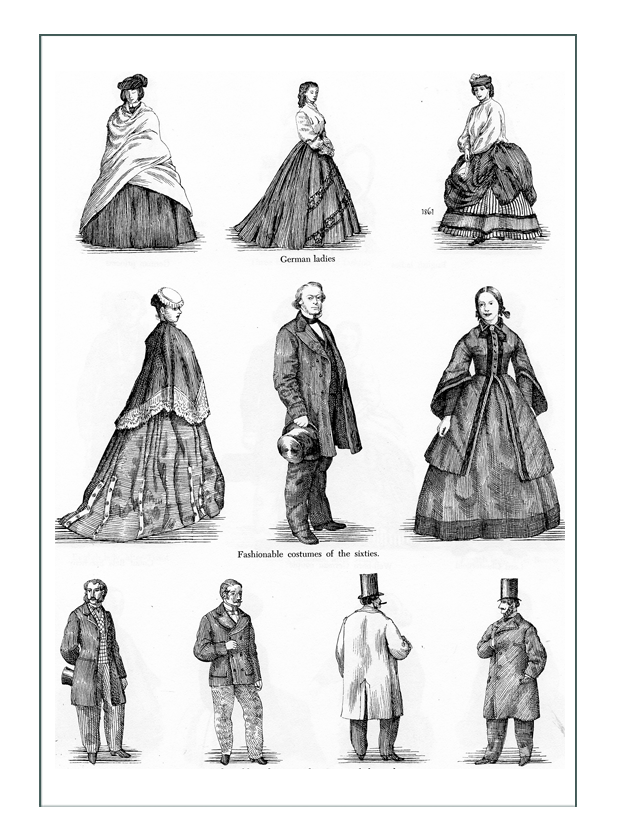
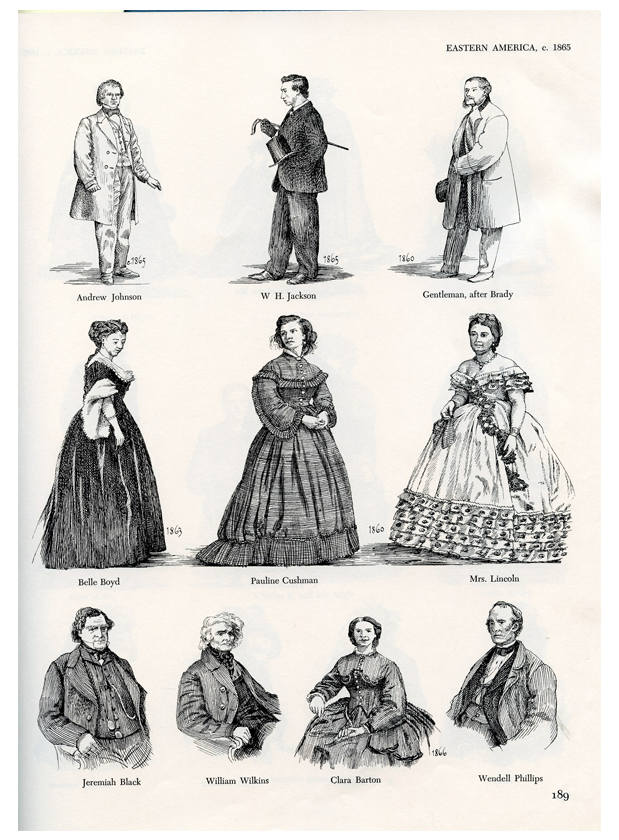
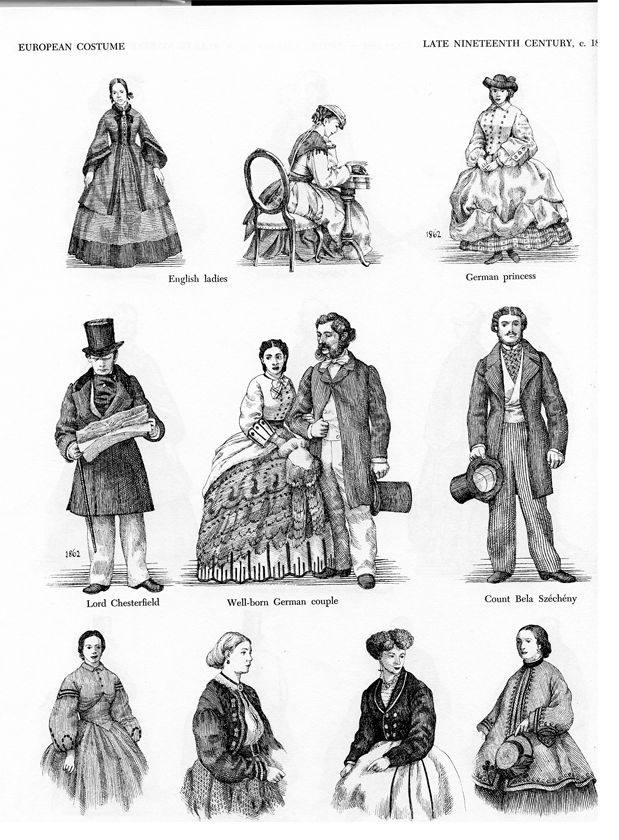

1862 Specific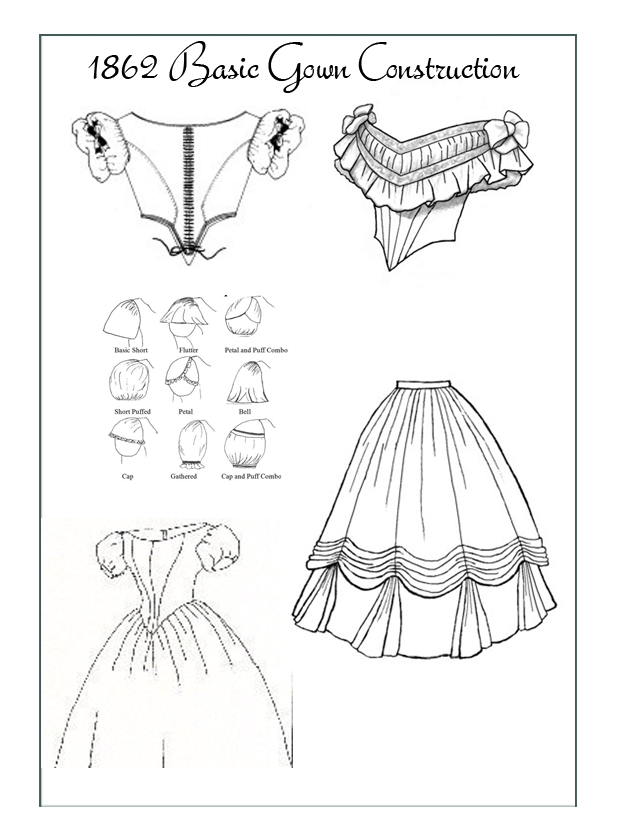
From a straight construction viewpoint, every woman’s garment, be it evening or day wear, looks the same for this time. To get it even more exact, we select the year 1862 because it is very easy to define. At this time the crinoline hoop was at its peak while it was still symmetrical, and before it became ovoid like it would by 1865.
It was still clearly the Mid-Victorian era, as the factors leading to Late Victorian were being developed (science of dyes, weaving, printing processes with the rise of fashion houses, the at home sewing machine, and a change in social attitudes towards clothing towards acceptance of mass production notably), but were not quite there yet. In 1862, we still have the clear and defined lines and silhouette of the Mid Victorian era, without confusion of bustles or crinolettes; or with the former flounces and layers.
What we see consistent are the lines of the bodice, simple and the same day or night: a wide “bertha” with shoulder seams over the shoulders, well fitted bodice, pointed center, 2 pieces, and specific seaming. The only look different because of options in decoration and about 12 types of upper arm sleeve shapes. Essentially they were all much the same for day wear or evening wear. Notable Real Women of the Day
Notable Real Women of the Day
The country had grown, and there were many types of women n many locations with many occupations. Key people though in the political, social, and economical worlds at the time stood out, and influenced fashion. Notably, as per the previous page describing the history of the fashion of the day there were European and American women influencing fashion.
Suffragette Elizabeth Stanton, for instance, was a fan of the Reform movement which aimed to remove corsets. Following are a few real women worth noting for their fashion influence – either bringing it “up” to the ideals of teh day, or “down” for straight function. These generally indicate High Fashion of the day, or court or formal wear at least:
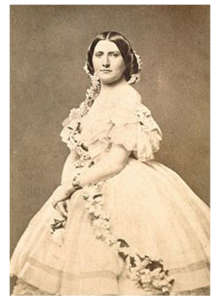
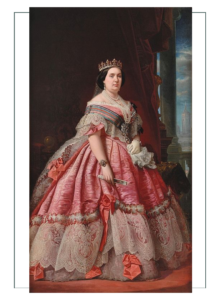
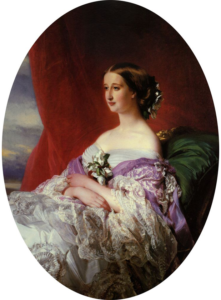
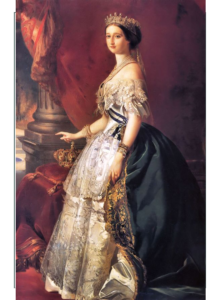
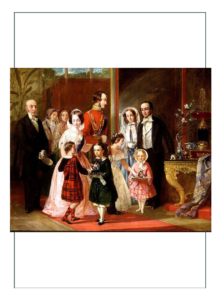
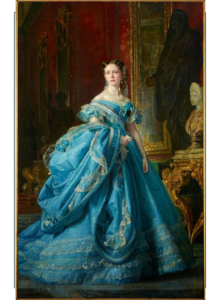
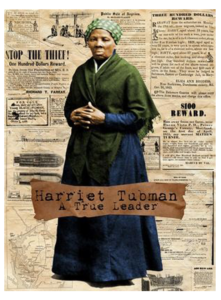
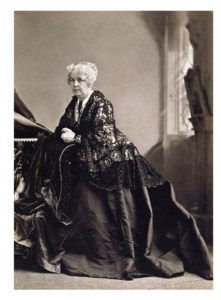
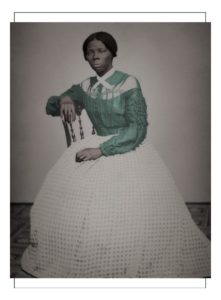
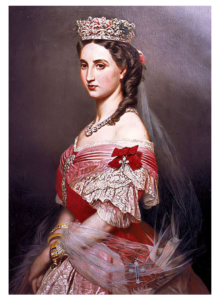
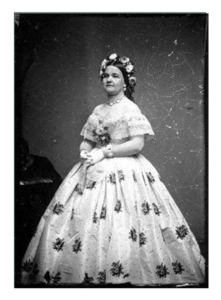
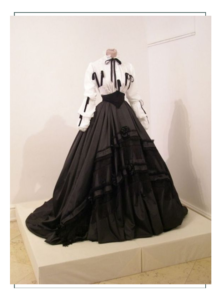
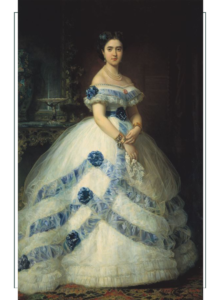
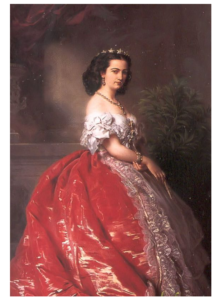
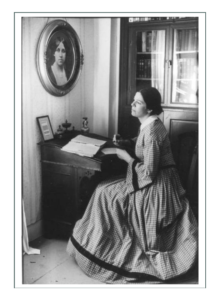
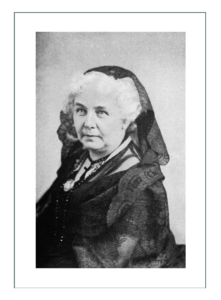
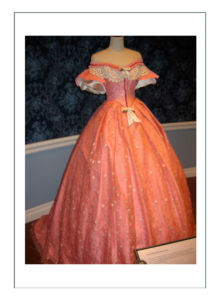
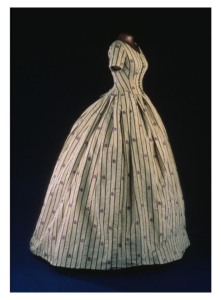
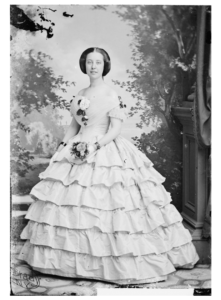
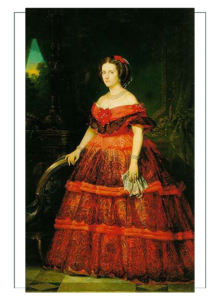

We have selected from the whole world of garments in museums, those which fit the character and the tastes of our customer. Note the similarities in design, shape, color, tailoring, notions, details, and how closely even day wear resembles the “standard” we outlined at the top of this page regarding waist, skirt, fabric, colors, and shape.

A very select collection of examples that are similar to the ballgowns she first liked. Included are possible ways to cover the exposed neckline for modesty.
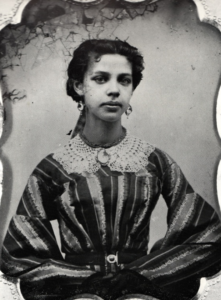
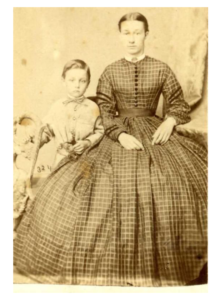
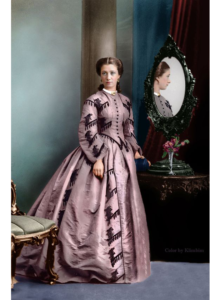
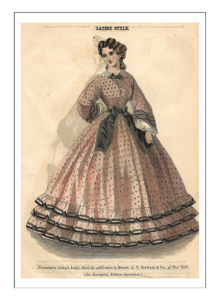
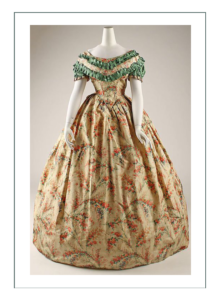
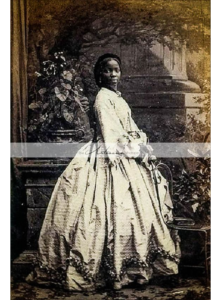
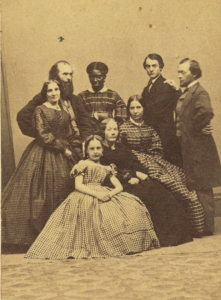
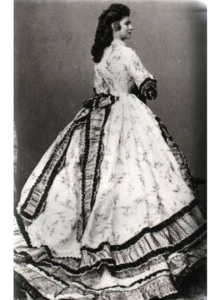
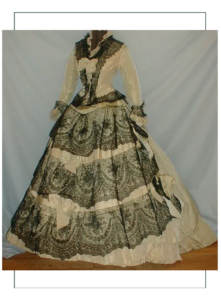
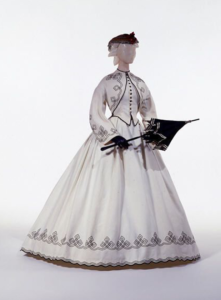
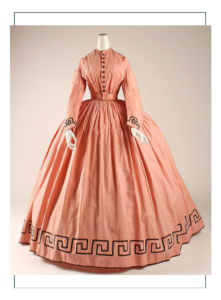
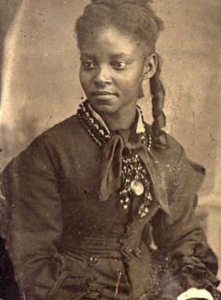
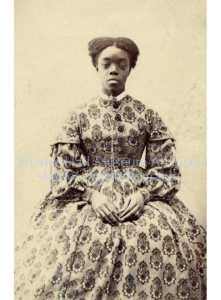
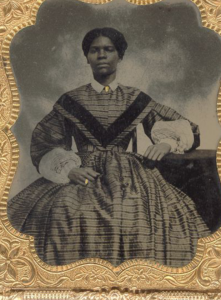
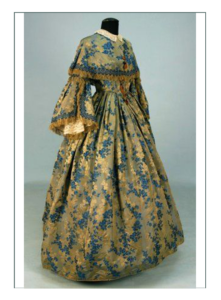
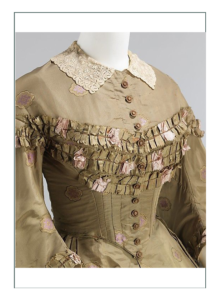
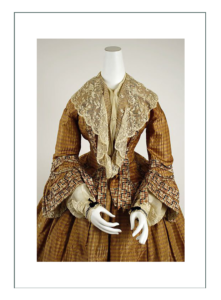

1855-1865
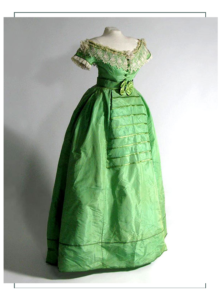
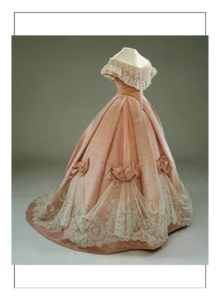
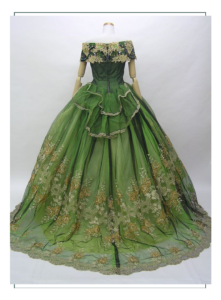
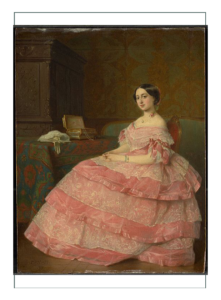
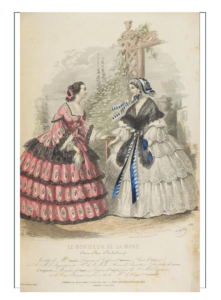
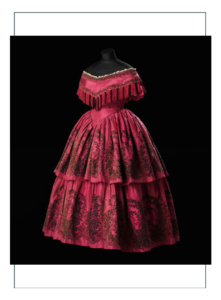
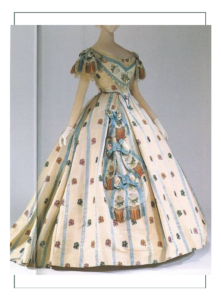
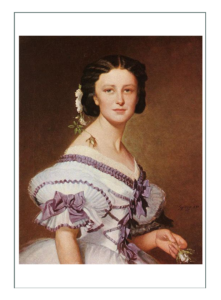
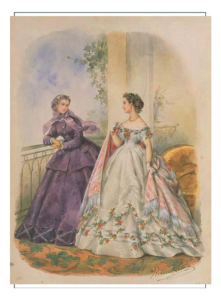
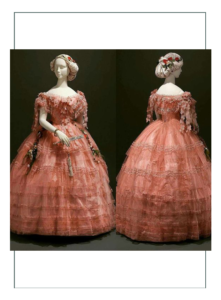
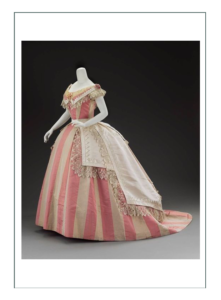
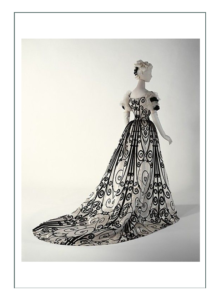
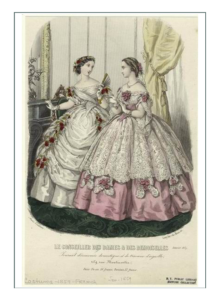
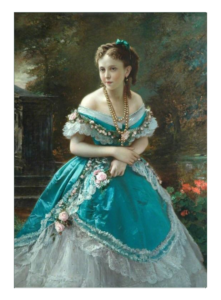
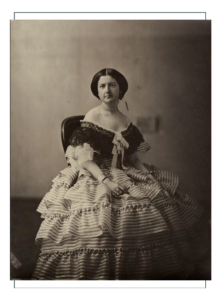
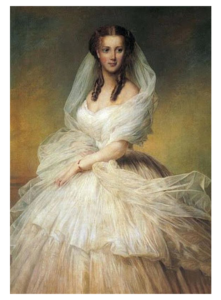
1862 Specific
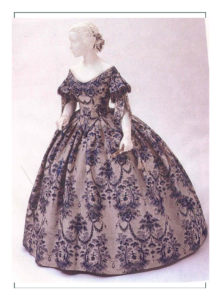
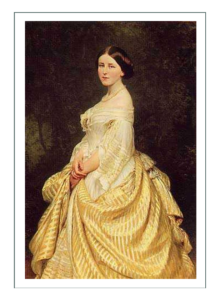
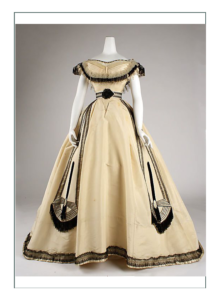
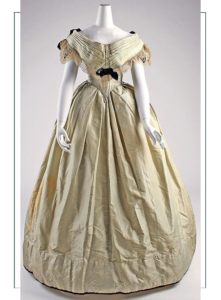
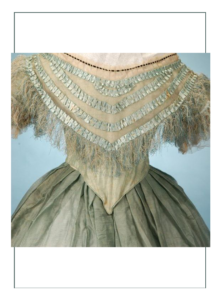
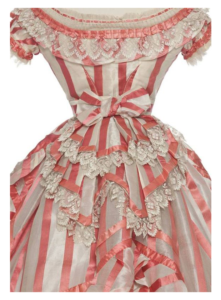
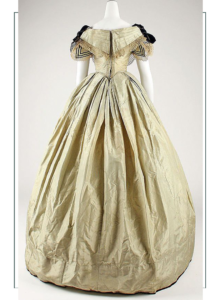
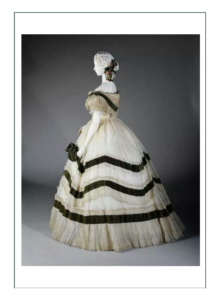
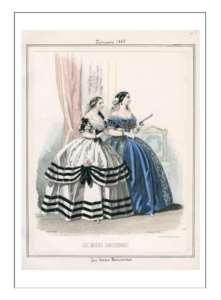
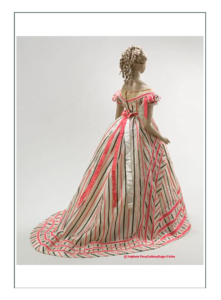



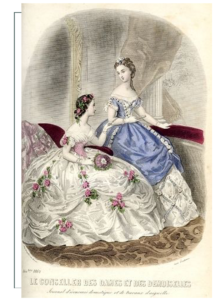
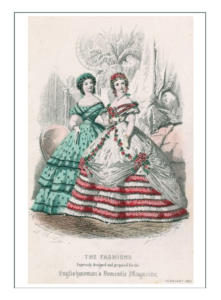
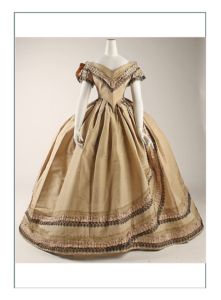
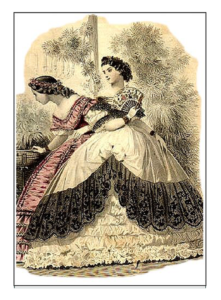
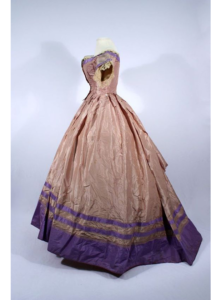
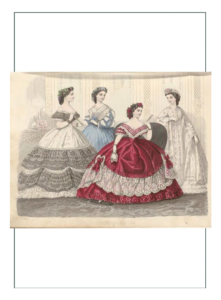
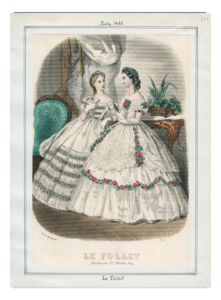
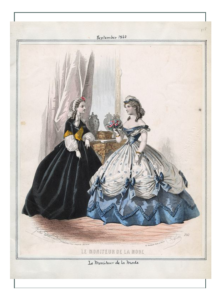
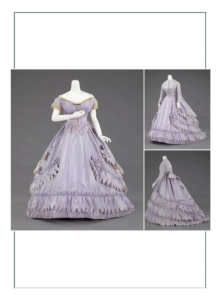
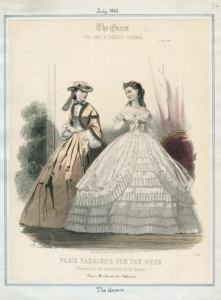
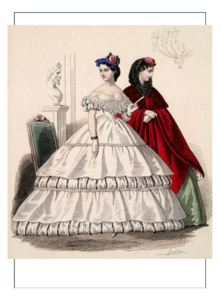
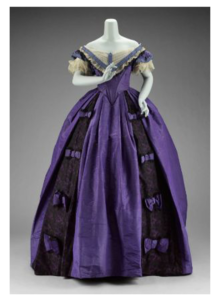
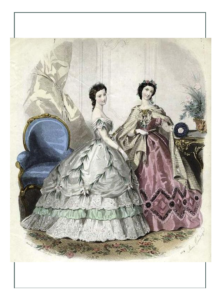

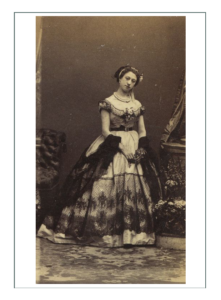
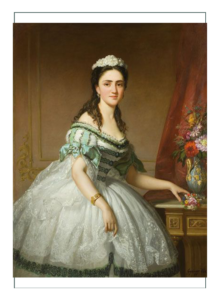
 WE are going to limit discussion on undergarments as there are extensive research sections on two other ensembles: 1866 and 1868. Click on the dates to see the documentation. Instead, we show examples of the most typical that would have been worn with daily or evening apparel in 1862. Notable of course is the crinoline hoop; in 1865 it was at its largest ovoid shape. We choose the 1862 symmetrical but 165″ circumference for this project.
WE are going to limit discussion on undergarments as there are extensive research sections on two other ensembles: 1866 and 1868. Click on the dates to see the documentation. Instead, we show examples of the most typical that would have been worn with daily or evening apparel in 1862. Notable of course is the crinoline hoop; in 1865 it was at its largest ovoid shape. We choose the 1862 symmetrical but 165″ circumference for this project.
Corsets
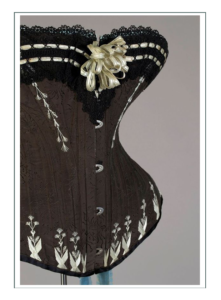
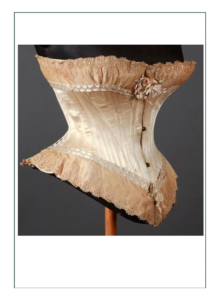
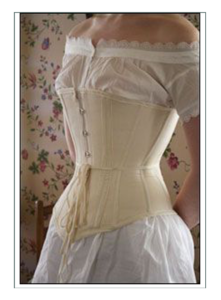
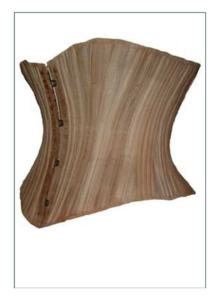
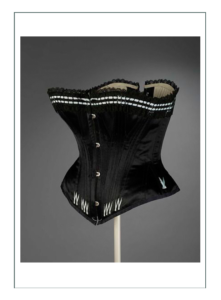
Chemises
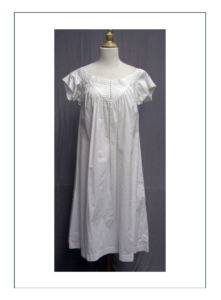
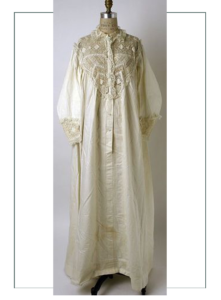
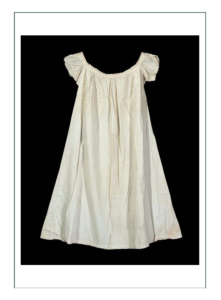
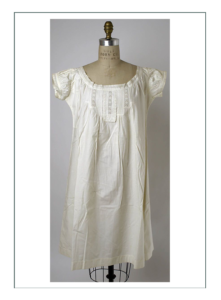
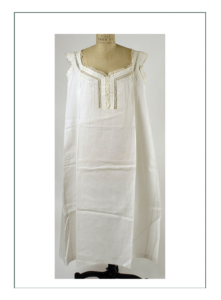
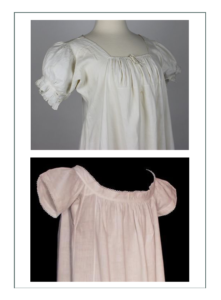
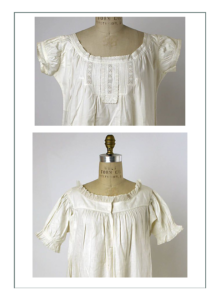
Drawers
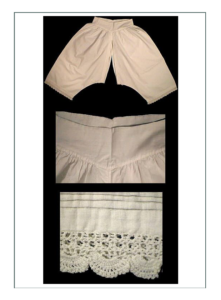
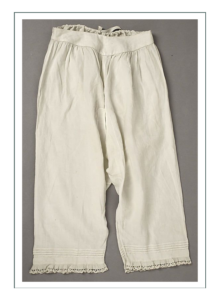
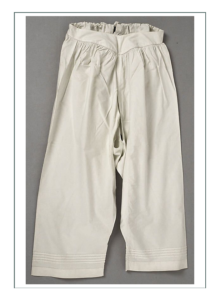
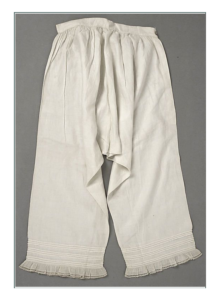
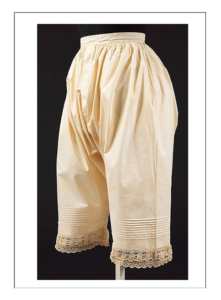
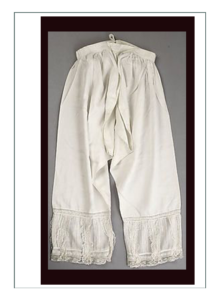
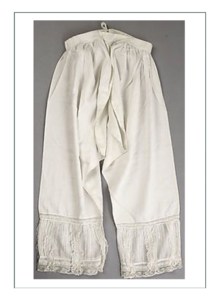
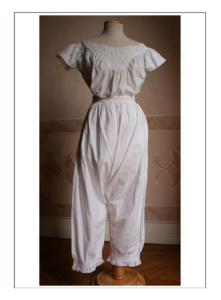
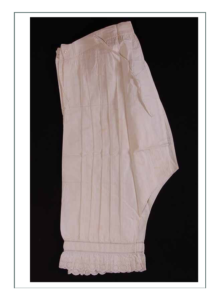
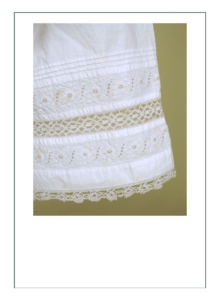
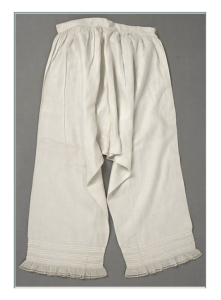
Petticoats
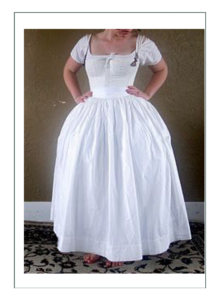
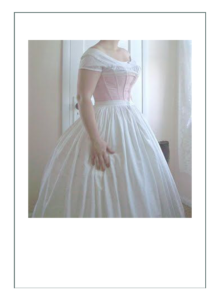
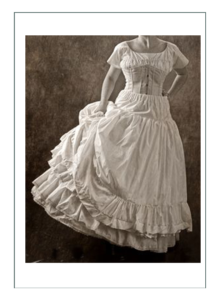
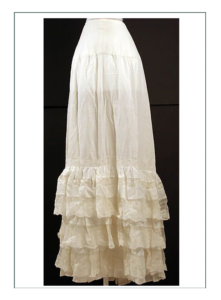
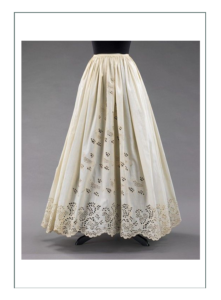
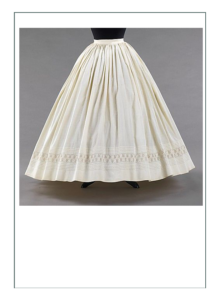
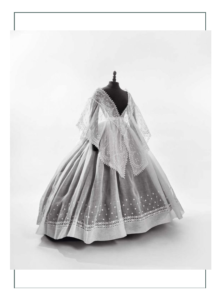
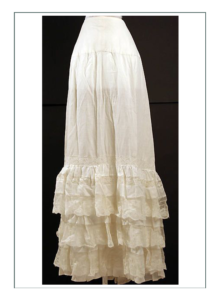
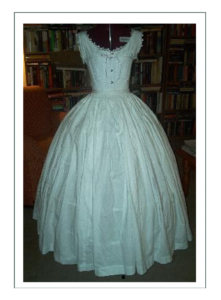
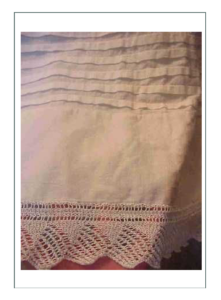
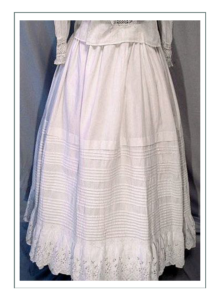
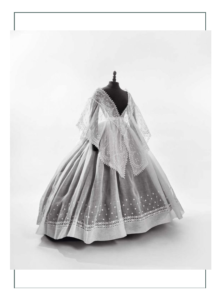
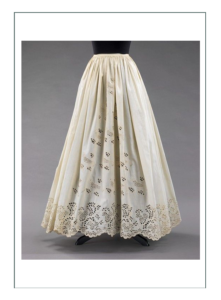
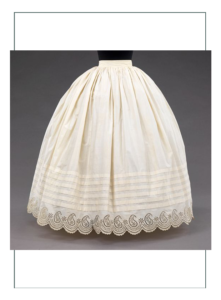
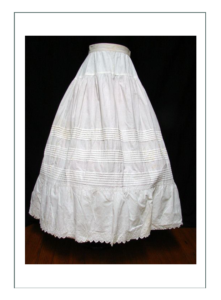
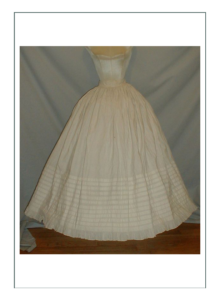
Crinoline Hoops
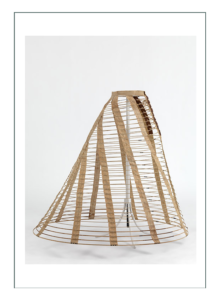
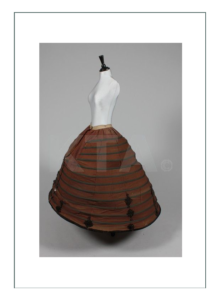

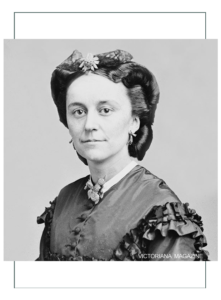
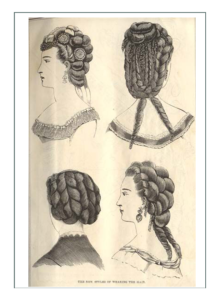
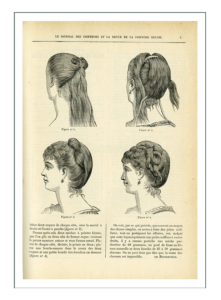
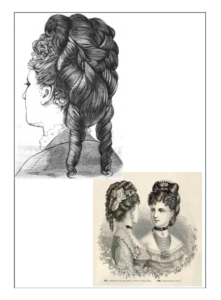
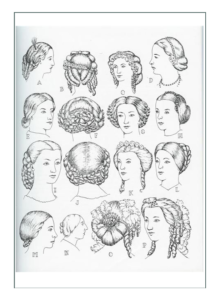
Jewelry
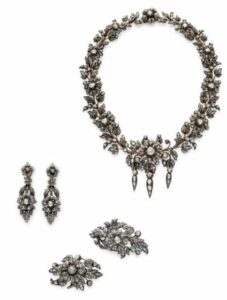
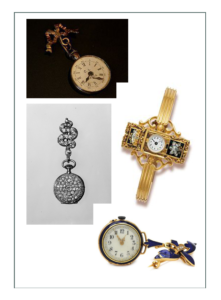
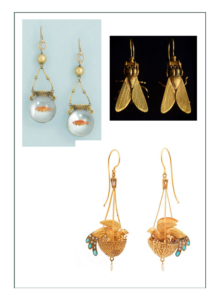
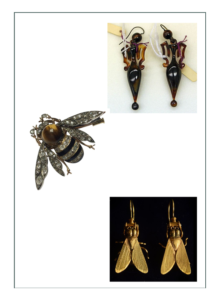
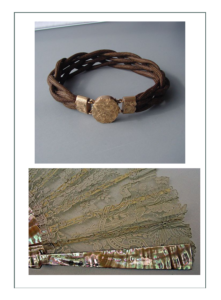
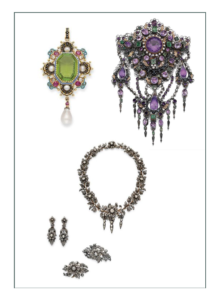
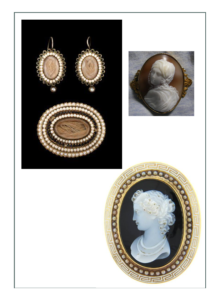
Footwear – Shoes and Boots
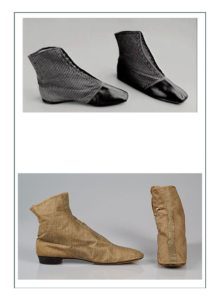
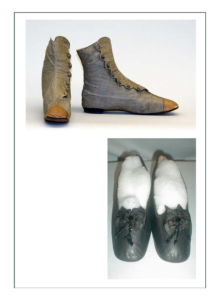
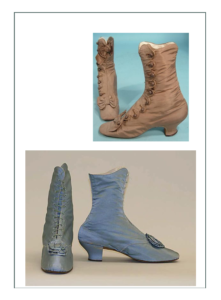
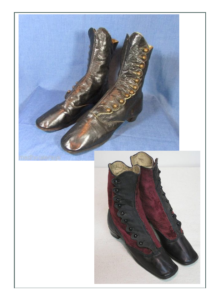
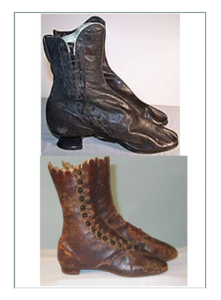
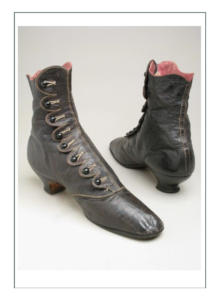

This will be an 1862 project. It was in the deepest part of the war when the characters she is most interested in portraying were very involved in and out of the war effort. It is also a very clear fashion era that is easy to explain, because all the garments were based on the same construction, with only decoration and color changes.
After discussion with Dr. Anderson, we have selected based on her depiction, character, location, and personal preferences, along with evaluation of what would be appropriate for this character, the following key extant examples in photos, portraits, and real garments from which to draw inspiration for this custom design.
- The first thing she needs to do is pick whether it will be a day or evening dress.
- Second is her color scheme.
From there we will finetune the design, using the basics we know already of undergarments, structures, key features for 1862.
 We put these “spreadsheets” together so Dr. Anderson could print them as attachments. These group the examples above for easier comparison. We refer to these when discussing options:
We put these “spreadsheets” together so Dr. Anderson could print them as attachments. These group the examples above for easier comparison. We refer to these when discussing options:










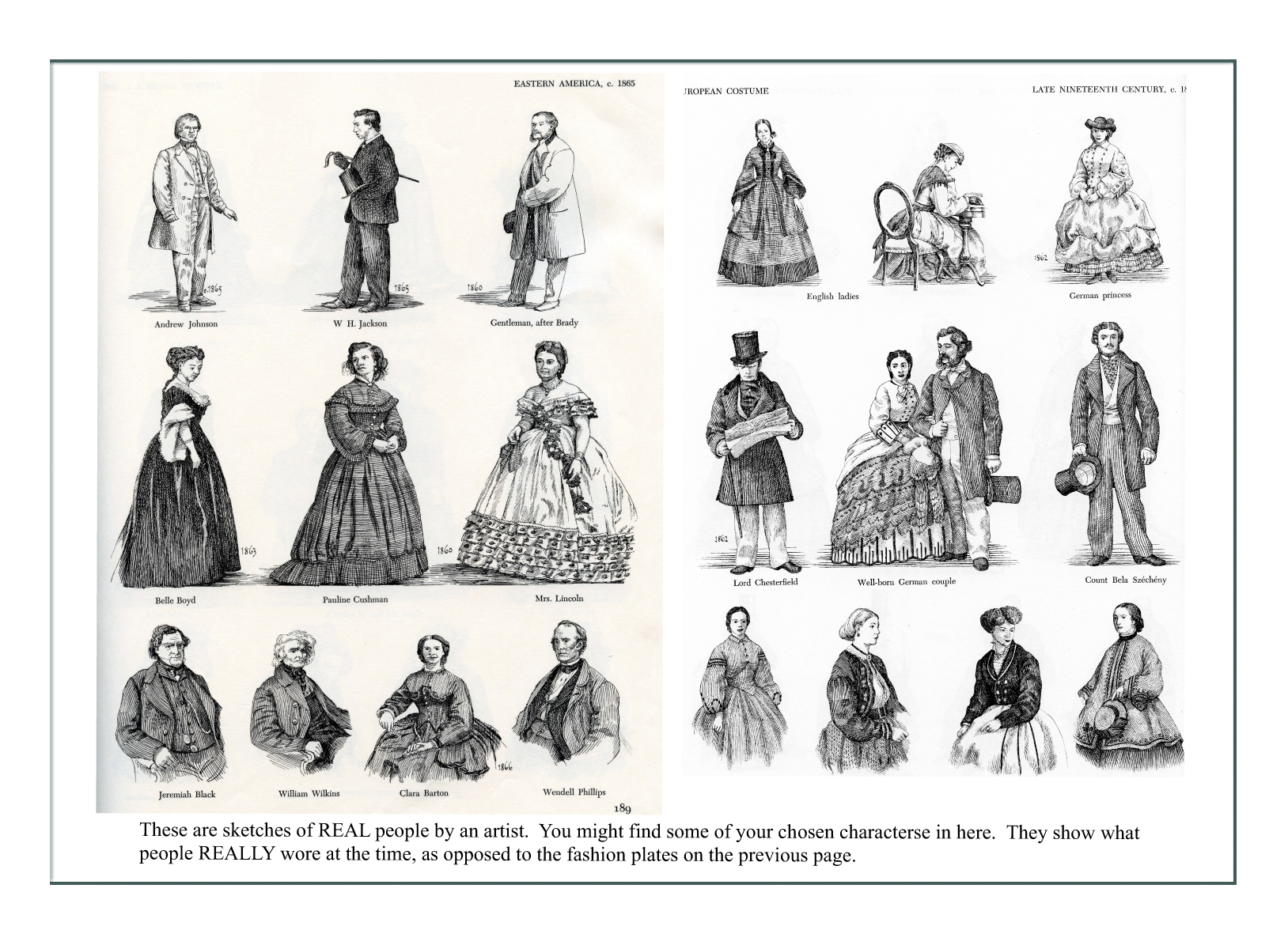
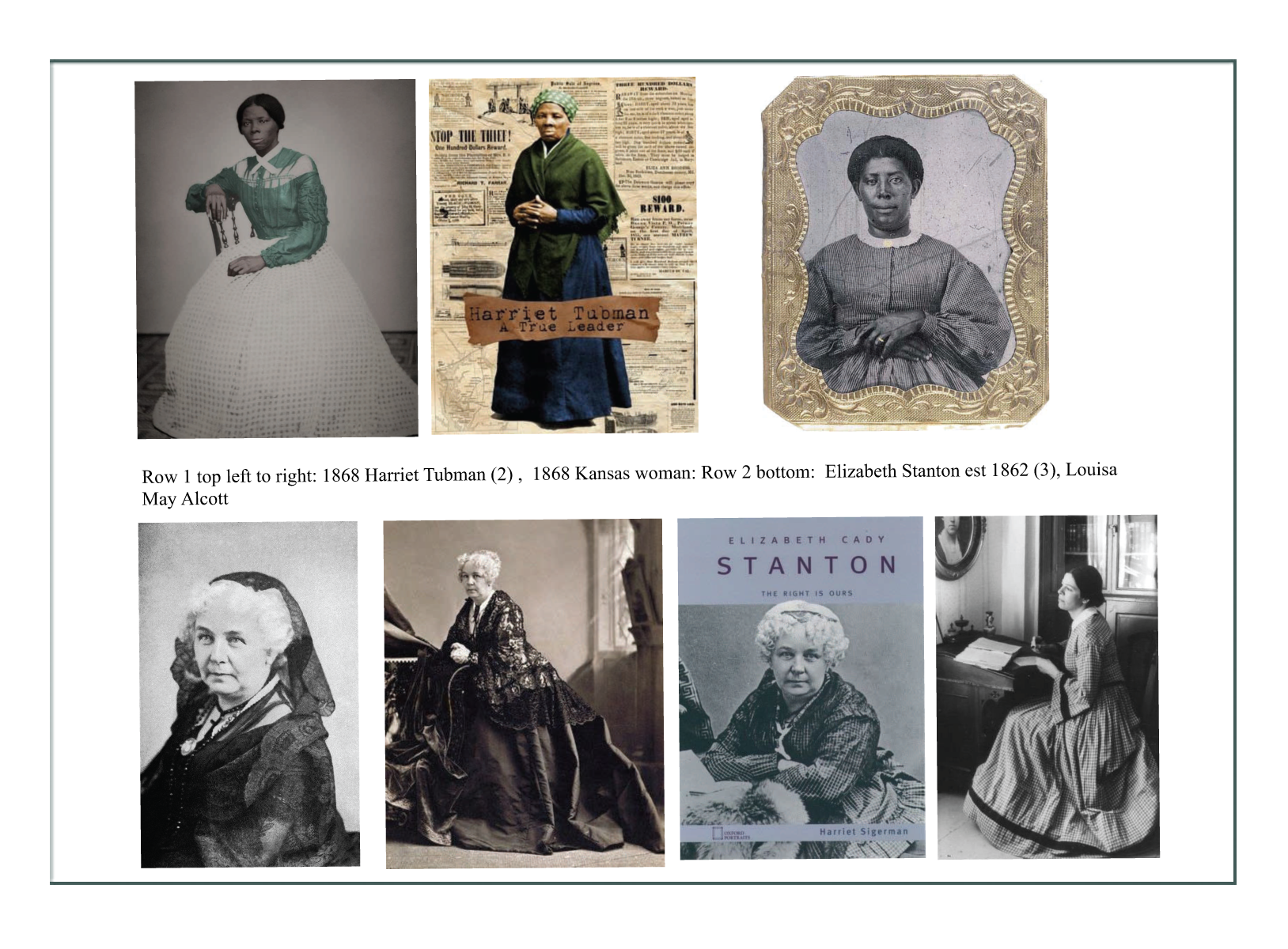
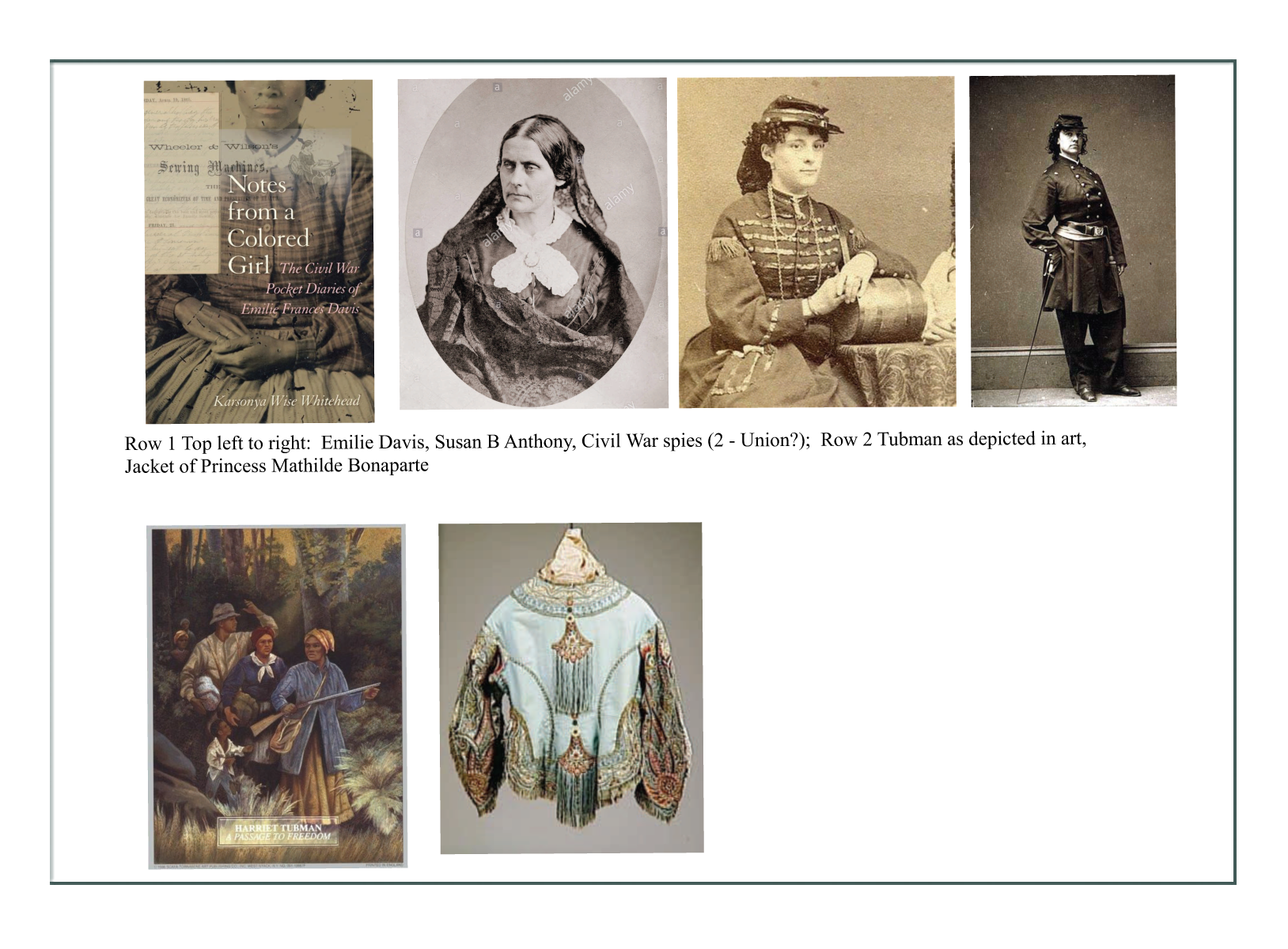

Ballgowns
Initial Ideas for Ball gowns including compilation using favorites from above:
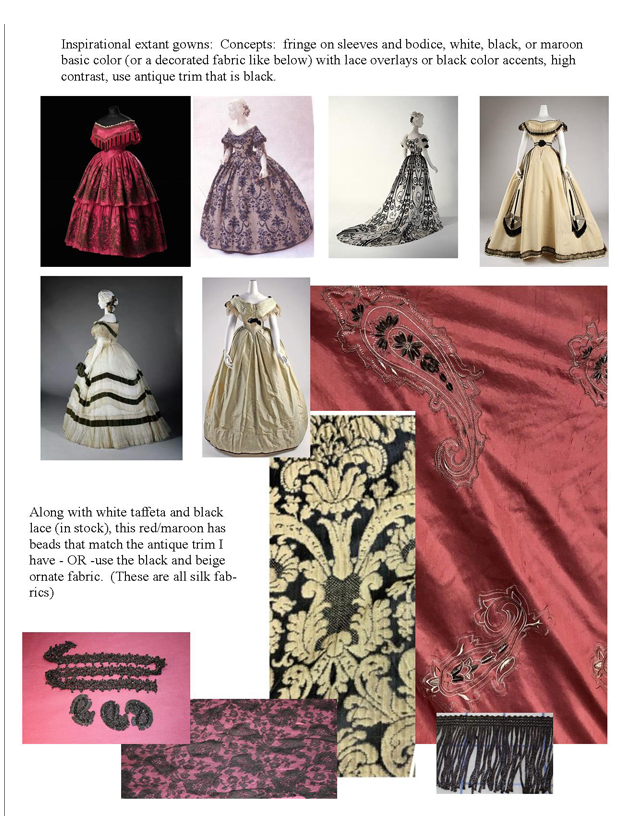
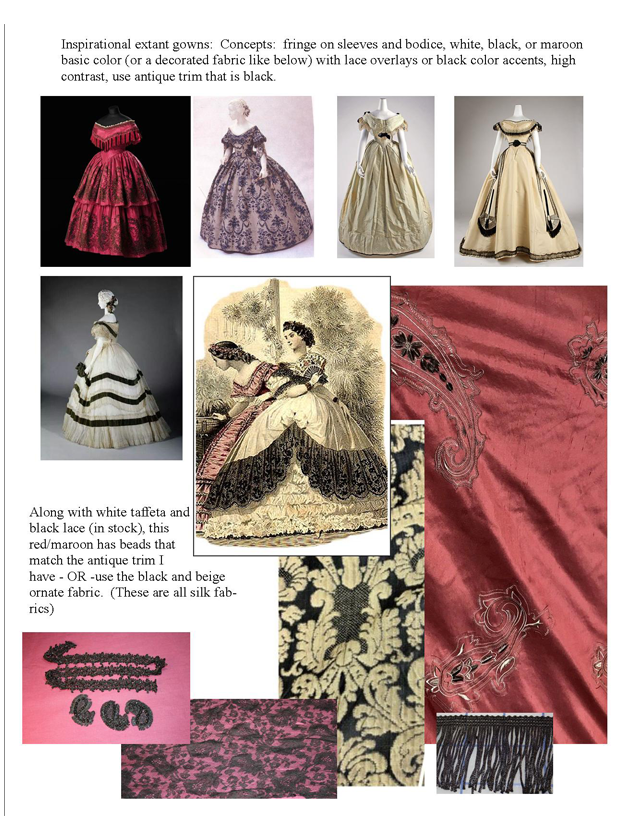
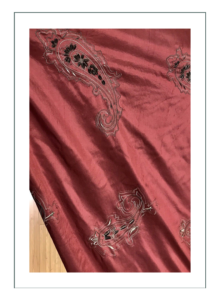
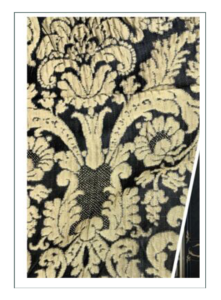
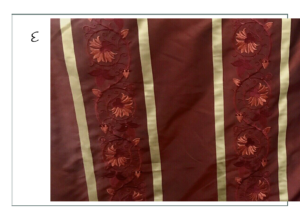
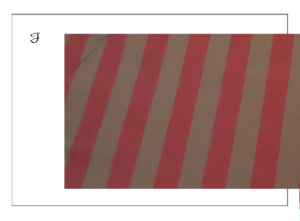
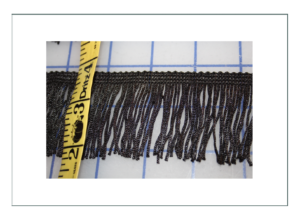
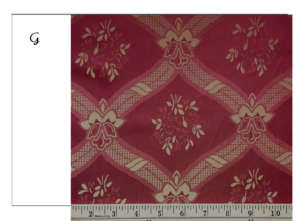
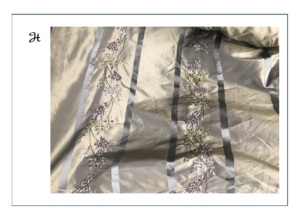
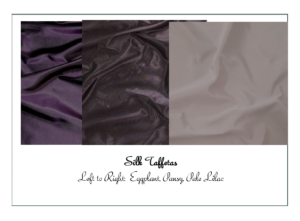
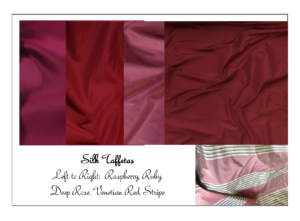
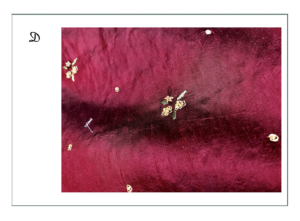
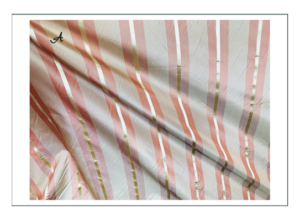
Day Dresses
Favorite examples for a high middle class such as Mrs. Lincoln’s Dressmaker currently under consideration with possible fabrics (checks and stripes!):







Fabrics for Daydresses

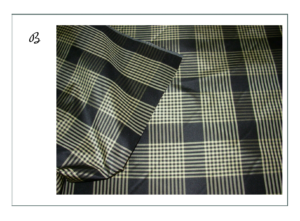
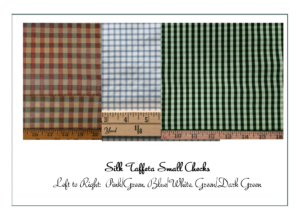
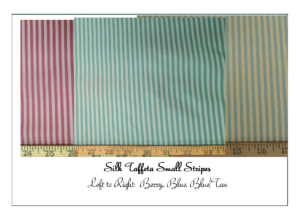
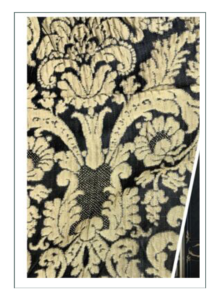


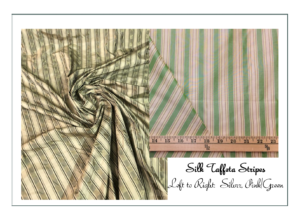
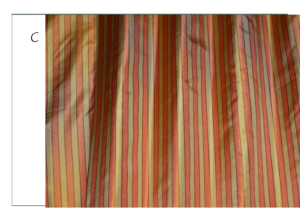
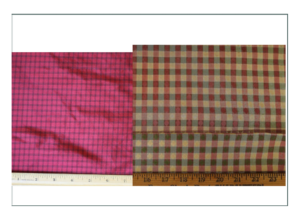
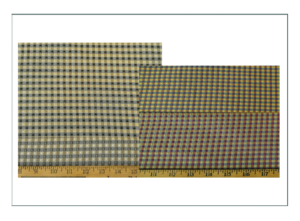
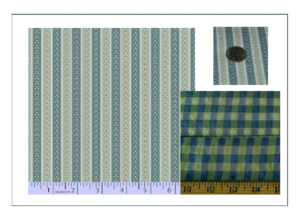

A Day Dress Then
At this point Dr. Anderson decided to portray Elizabeth Keckley, First Lady and wife of Abraham Lincoln the President’s dressmaker. This narrowed down design decisions really fast. Mrs. Keckley did not go to the ball, or at least not as an invitee.
Yes, she was there, as biographies and fiction describe the relationship between the two women. We know she dressed Mrs. Lincoln before events. We know she was on hand to help in case of wardrobe challenges. We also know she sneaked out and went home whenever the opportunity arose, mostly because before a big even she had multiple deadlines for her many clients and went without sleep for day son end.
Therefore, this must be a day dress, but not just any day dress. Like all dressmakers in history, the woman in private dressed for comfort and ease in sewing long hours. When meeting clients or participating in events, she had to play the part of the lady – complete in the latest fashion, but as they say in today’s job interview “just one step below her employer”.
- What this means for Design
- This meant she would have:
- the same fashionable silhouette she gave her clients
- the same attention to detail with quality in construction technique
- the best fabric and notions she could afford, which probably would be somewhat low in value since her bio says she had to wait for payment until after delivery for a commission. Just like today, prepayment barely covered the cost of materials, and the designer had to put in long hours in consultation, travel to meetings, design, and planning, before getting any money.
- this kept the dressmaker somewhat poor.
We can assume then she might have one or two fine dresses to go to events, and that was IT. It would be the best she could manage on small income, and squeezing in between her other projects for customers, as well as taking care of life in getting preparing food, etc. Mrs. Keckley reportedly lived in the house of a family at this time, which would allow her to time to not meet all her daily needs, but the life of a woman, a single woman, would be full 24 hours a day.
It might have been that someone else made her garments for her!

Real Historical Women and Garments
We look first at the only photos we have of Mrs. Keckley herself. They have been colorized based on interpretation of black and white photos to determine these two ensembles were purple and gray, or both possibly a mauve or light purple. In the Lincoln museum, we see her in gray silk taffeta with black or dark navy blue trim.
Mrs. Keckley
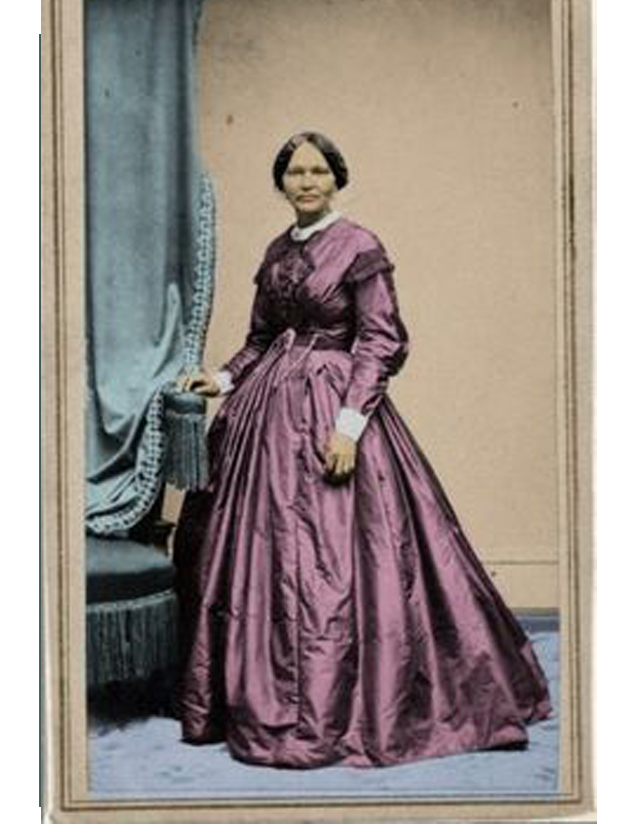
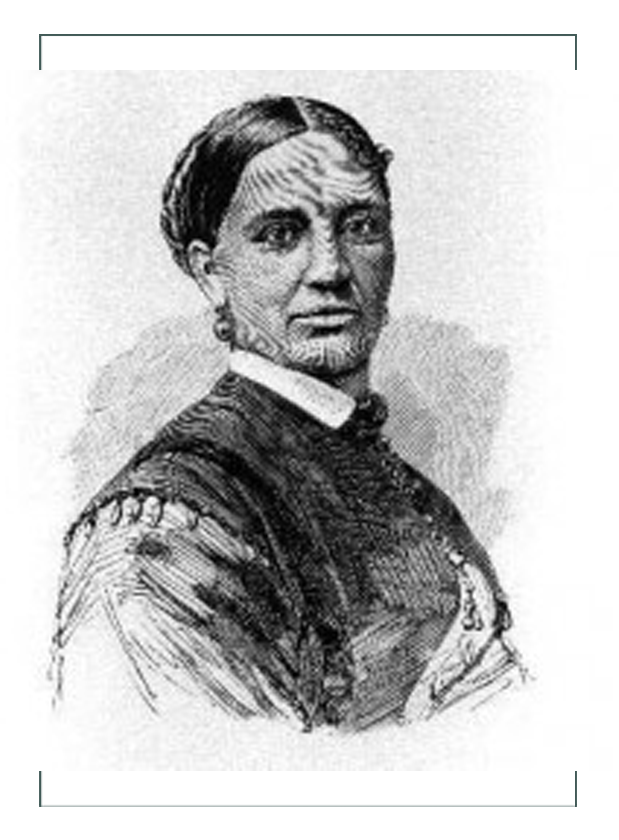
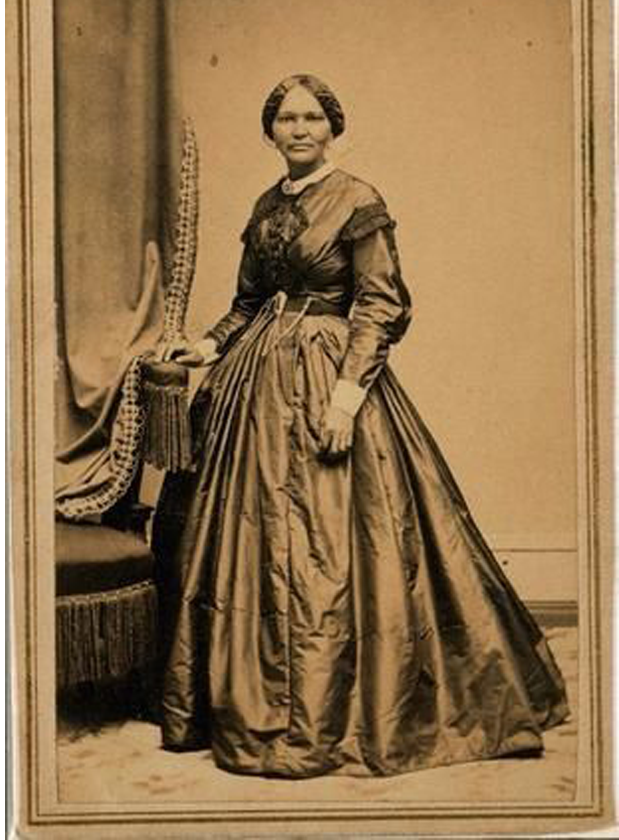
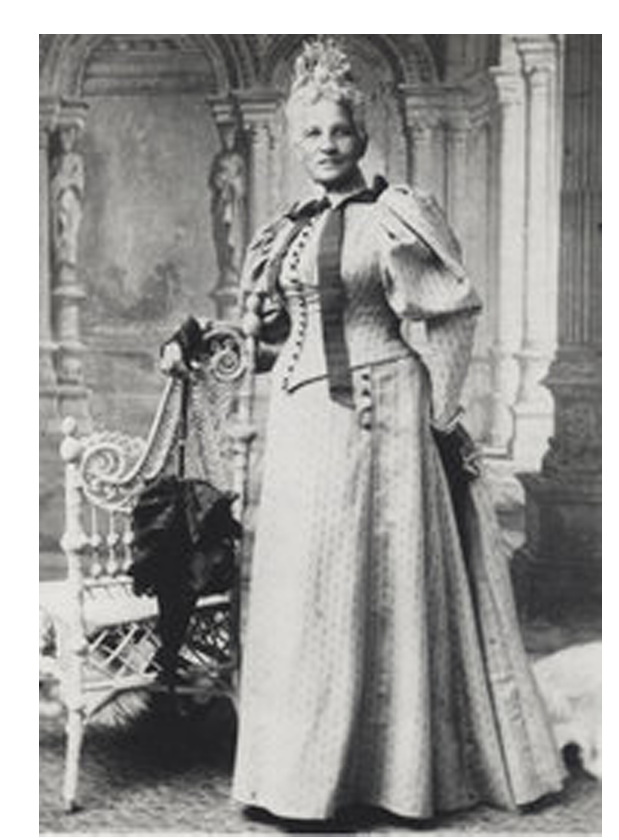
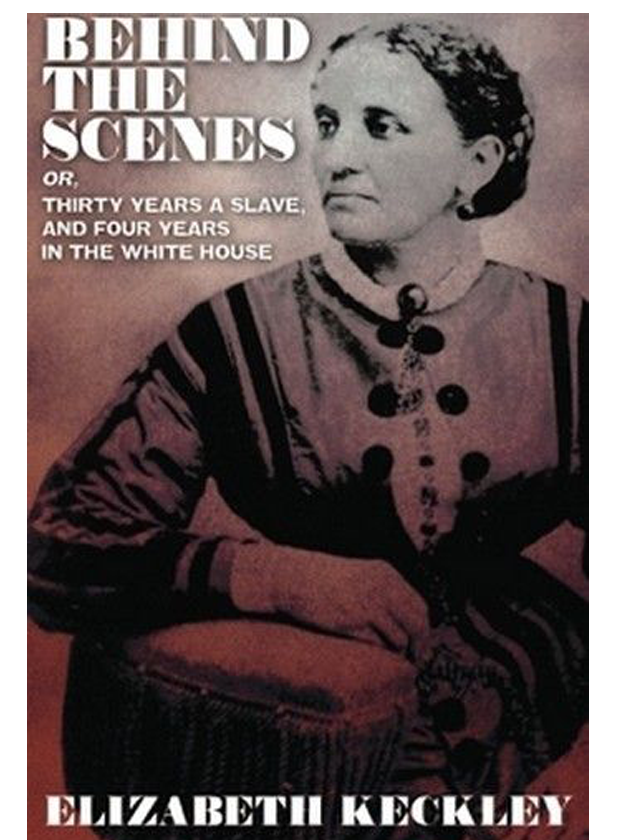
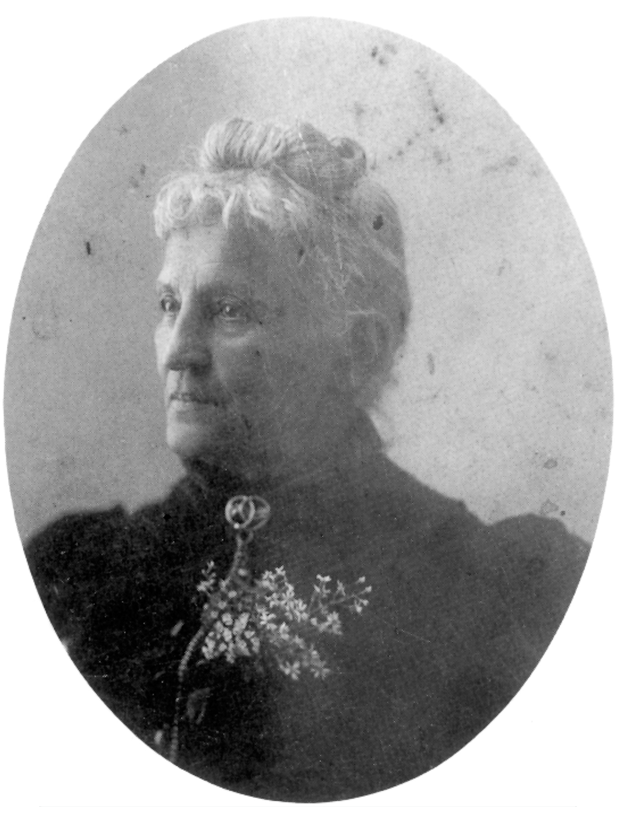
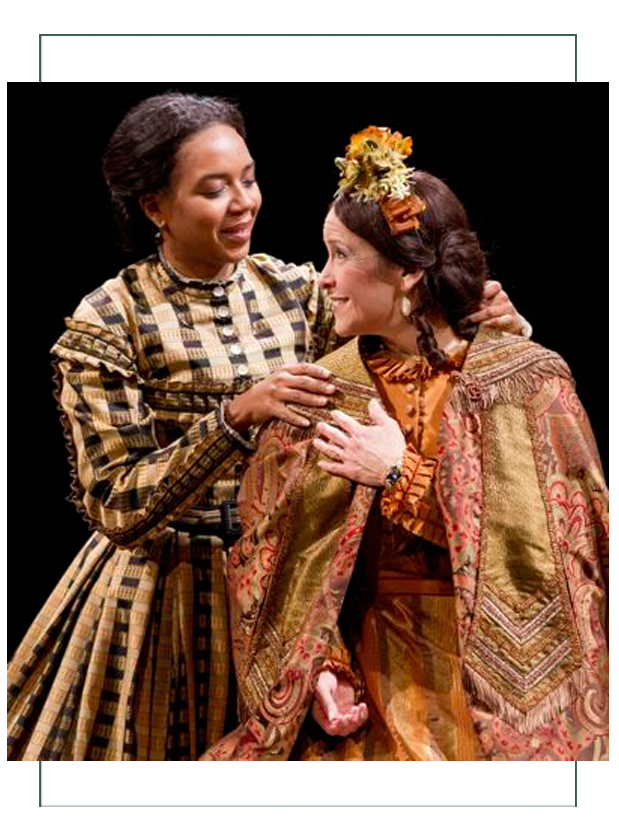
From these we see a focus on the line of the garment – EXCEPT – she’s not wearing a crinoline! It was the time of the largest crinoline ever, yet she’s only wearing a petticoat. That is most likely because it was not PRACTICAL for a dressmaker who lived in a small house who had to find her way to the White House, and into a room to dress a woman in large skirts – to wear them herself.
This is perplexing though, since she is obviously knowledgable about high fashion, and capable of producing it. These are formal portraits that she posed for, and one assumes a person dresses up in their finest for a formal portait. If that is the case, she should have been wearing a crinoline. Her skirt is a bit too long, as if made for a hoop, and it is the ovoid shape of 1865. Perhaps she was caught offguard and told “we must have a picture of you”, and was just there working, so this was her work ensemble.
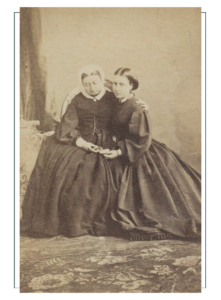
Time of War & Mourning
We must remember it was the middle of a war though, and materials, fabrics, and hoop boning was probably hard to come by. The South where the hoop was widely worn was being decimated by this time, and perhaps there was not access to “proper undergarments.
The other issue is to wonder exactly HOW Mrs. Keckley learned what high fashion was. Prince Albert died in 1861, and Queen Victoria, fashion leader of the world went into mourning from that day for the rest of her life. Victoria wore the fashionable silhouette, but in black crepe or silk. She began the whole mourning industry with its dictates at the time.
This meant fashion would defer back to Eugenie of France who was working with the fashion houses and was advising Victoria anyway. Eugenie was young and influential at the time, and she was the one who brought the crinoline such favor around the world.
It is most likely Mrs. Lincoln used every possible means to collect information on the fashion of France from every resource available – and at the time she got it. She might though have been behind the times due to war embargoes and limited communications to the White House.
Most likely, Mrs. Lincoln was a bit out of date despite her efforts.
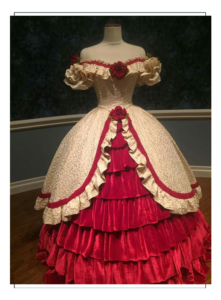
Home Made Hand Made
Upon inspection of the Mary Todd Lincoln garments, we see one very outstanding feature. They are obviously homemade. Not just hand made, although the sewing machine was in homes in Europe by 1861, but HOMEMADE. Seams are not sharp, edges are somewhat fudged, trims are cheap and used sparingly, and the level of craftsmanship compared to what was coming out of Europe (and what we are capable of at this time with our equipment and availability and technology) was rather poor.
Sorry to historians to sound arrogant now, but these were garments made by someone through trial and error; asked to copy something a customer saw to the best of her ability with limited resources, and to make it personal and special.

Examples of Keckley’s Work
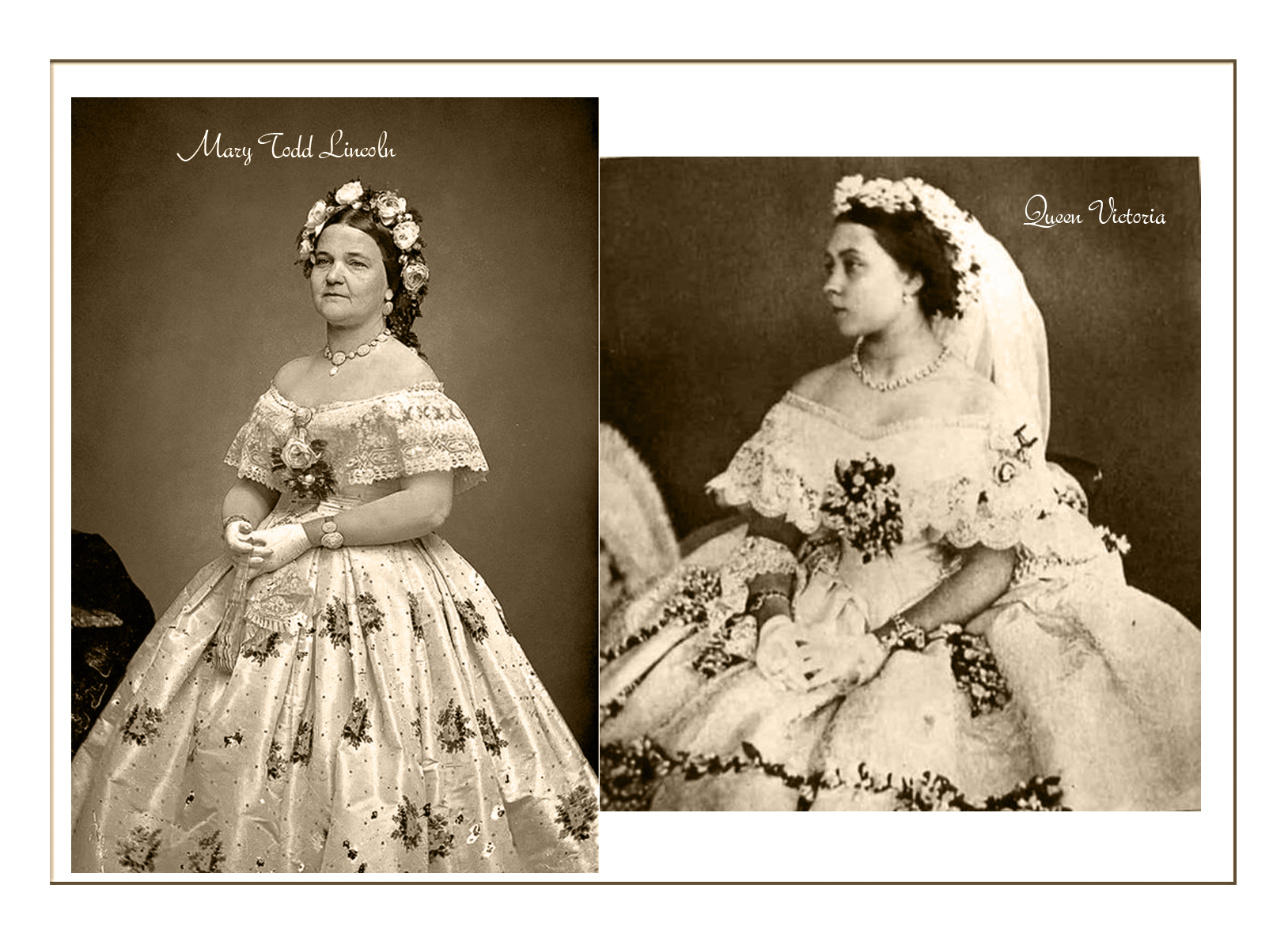
Here are as many examples of Mrs. Keckley’s work that we could find, include the above that she herself wears. What we find in common for all of them is:
- They seem to have been made in a hurry
- Materials are not very costly, especially trims, laces, and notions (compared to the Europeans)
- They all kind of look the same; trying to make the waist small and the shoulders large to create the ideal “hourglass” silhouette of the day out of a chubby and shortwaisted woman
- You can almost feel the struggle between Mrs. Lincoln asking for “more more more” lace, flowers, fluff, and frills, and Mrs. Keckel (whom in her own garments shows an almost austere and highly structured and tailored preference) who is pulling back the frills and “fluff”.
- The results are florals and laces in key spots, with fabrics that have a broad field of solid color.
- The real key to her design is always a high contrasting trim or line, almost always some sort of a straight line in the trim, around the neckline, over the hip, or somewhere that makes and angle or sharpness in contrast to so much puffiness.
We reserve judgement on quality of design or construction, but after years of studying the fashion sources such as the Worth Fashion House in Paris and others at this same time, we feel these garments are definitely a homemade best interpretation of high fashion at the time.
Kudos to Mrs. Keckel for finding a way. It’s just too bad Mrs. Lincoln didn’t send her to Paris to study with the pros for a while.
Mary Todd Lincoln’s Dresses
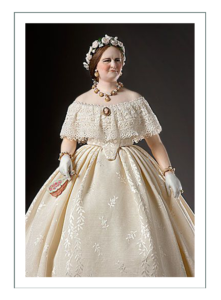
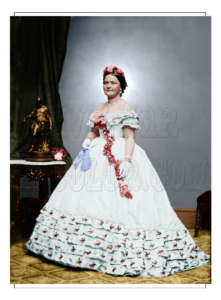
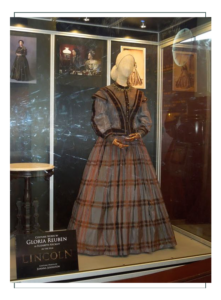
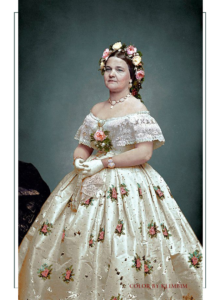
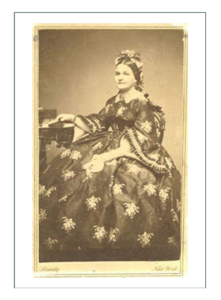
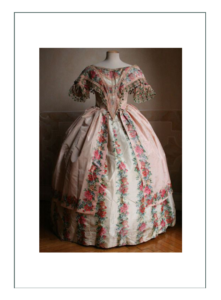
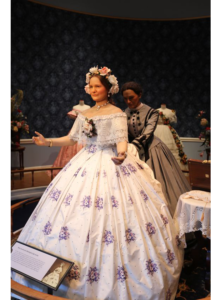
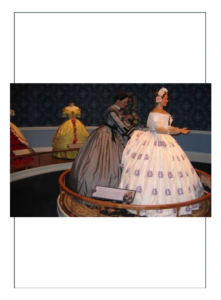
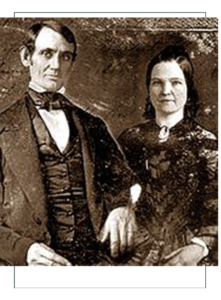
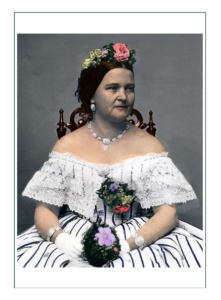
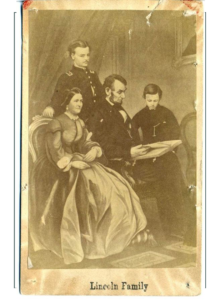

Checks, Stripes, and Solids
After studying the Lincoln dresses, all we have of Mrs. Keckel, and trends at the time (see the “Fashion Page”), we have selected these extant garments and photos of real women to represent possible designs for the Mrs. Keckel ensemble. These are consistent with the Keckel design features for Mrs. Lincoln. What these all have in common are:
- Small patterns, narrow lines
- Simple lines of the dress
- Tailored and minimal ornament or trim; mostly highlighting construction features such as sleeve or cuff areas
- Full crinoline skirts
- Pleating at waist
- Waist line of the day
- 2 piece: bodice and skirt
- High neck, buttoned with optional collar
- Nice buttons
- Belts optional
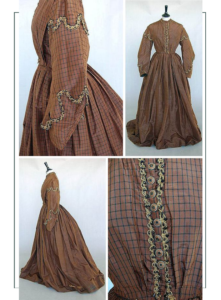
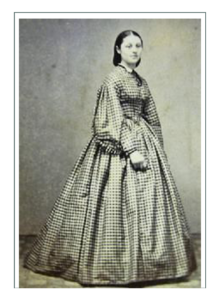
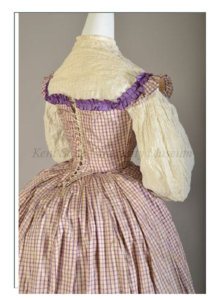
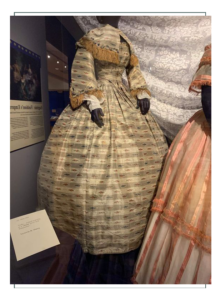
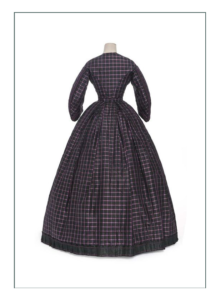
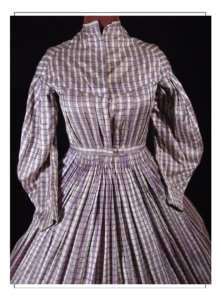
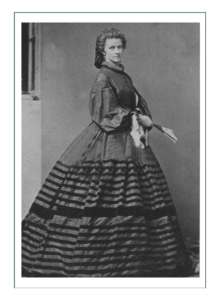
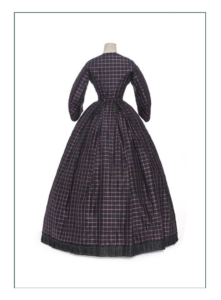
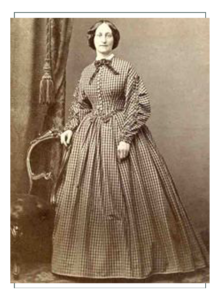
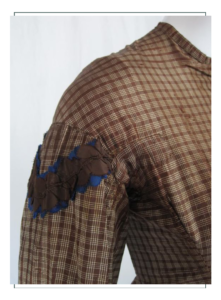
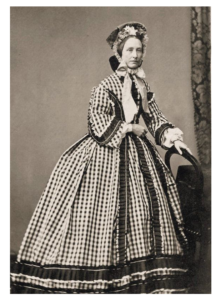
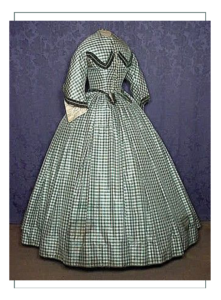
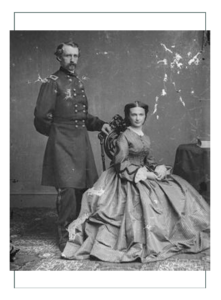
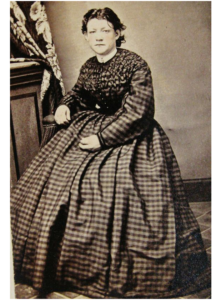
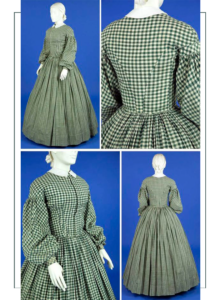
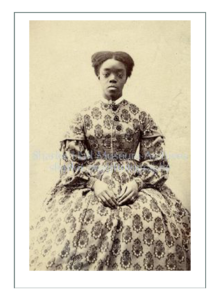
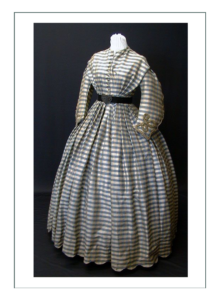
Prime example of Mrs. Keckley’s own Tastes
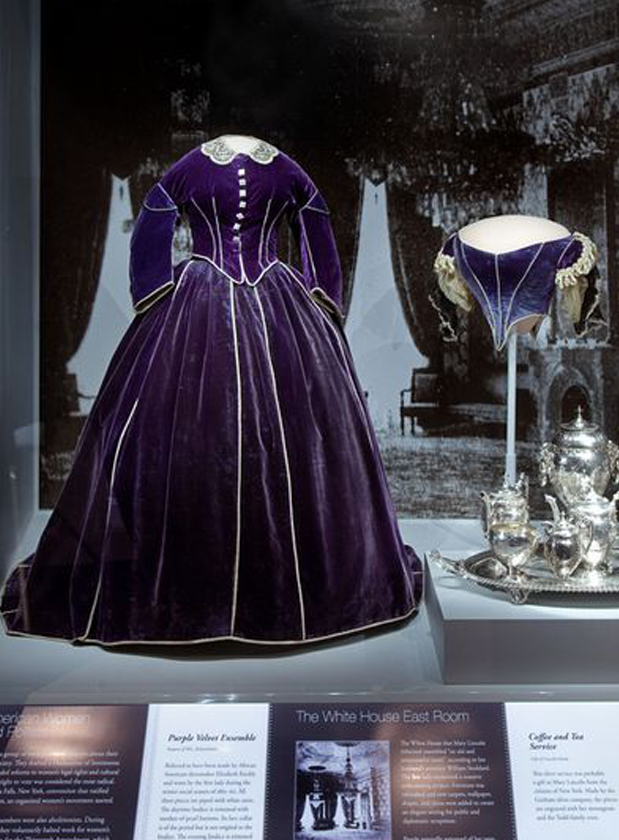
We can speculate on what Mrs. Keckley’s personal tastes vs. her client’s were all day, but this dress for Mrs. Lincoln, probably the most notable to historians along with the floral ensemble above, seems to stray so far from her usual designs, that we can only assume Mrs. Lincoln finally said “do whatever you want” for this one.
It has the solid color with linear trim, sharp and angular high contrast trim, rich fabric, and lack of froufrou or lace and fuss that seems to be the tug and pull of her work for Mrs. Lincoln.
It is from this we can draw a simple design for Mrs. Keckley’s day dress. In this summary, we find we are not too far off the Spielberg movie design – although we’ve come about it in our own way! Interestingly, after seeing their design, and coming to the conclusion to follow the features of the purple dress above, we found this Queen Victoria day dress after the fact. It would be nice to combine the concepts.
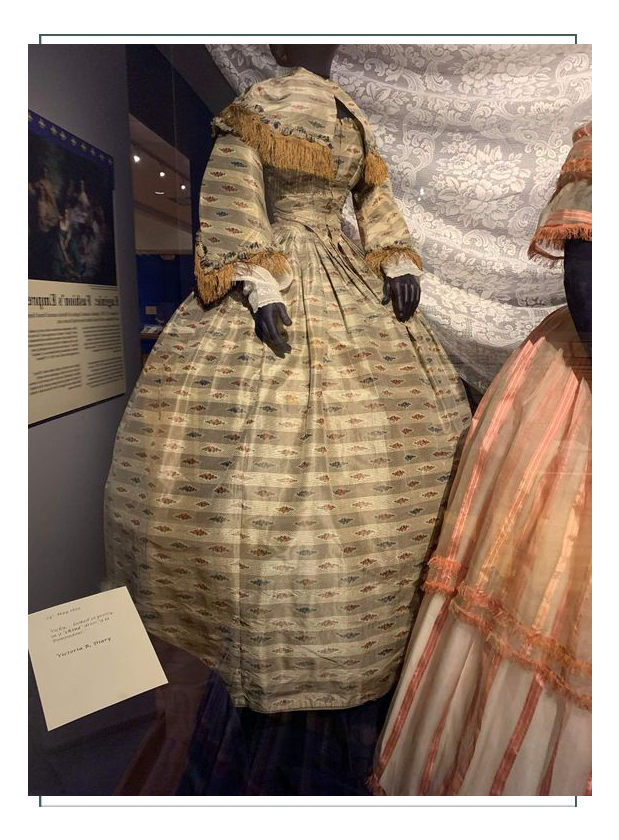

What we Need for Accurate Portrayal
- Tailored
- High contrast trim or ornament that features construction details (shoulder, waist, sleeve, cuff)
- Predominant color; solid preferred
- Silk taffeta – rich in color and texture
- Well fitted
- Somewhat humble like a servant would wear rather than a great lady
What we Want for Personal Tastes and Functional Needs
- Wear a hoop so only 1 petticoat needed
- Small print or design so Dr. Anderson is not overpowered by design
- Tailored to suit taste
- Make waist small
- Cover the neck
- Rich in detail
- Fits with existing corset
- Color that she likes and that looks good on her
- Color different than the other ensembles we’ve made for her
- Cost down by finding least costly fabric
- Use trims and threads in stock to keep costs down

Given the research above, and research on the Fashion History and Historical Context pages, we select these key real photos and extant garments to draw inspiration from. This will be followed by designer’s choice of fabrics that meets the criteria just above:
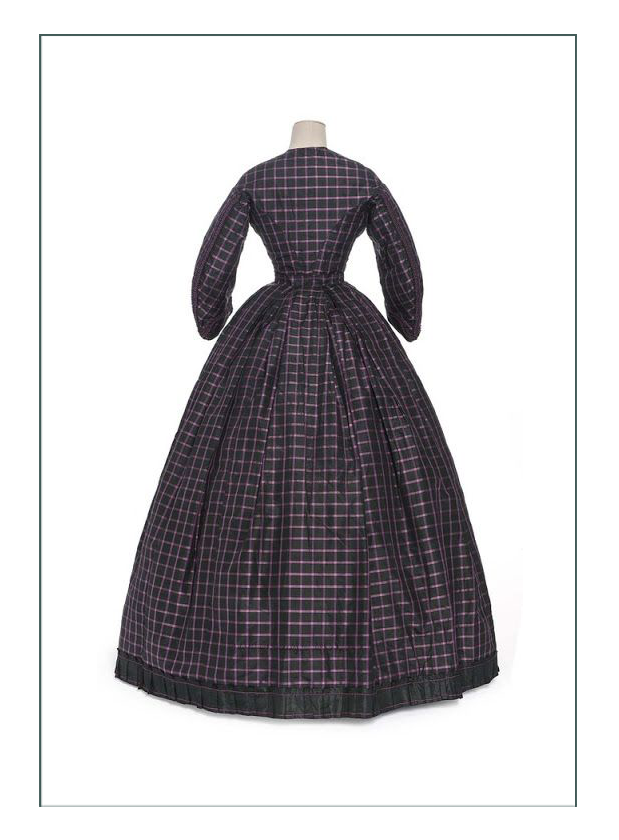
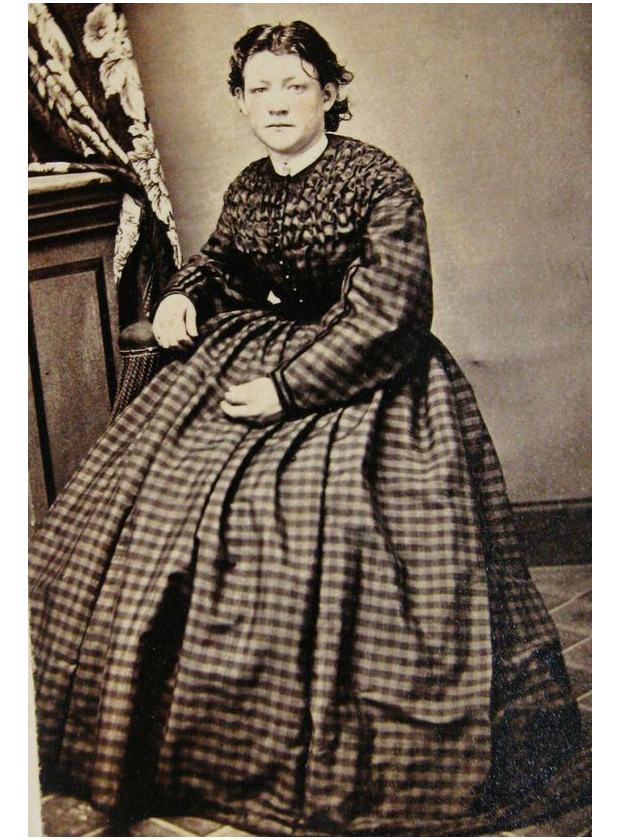

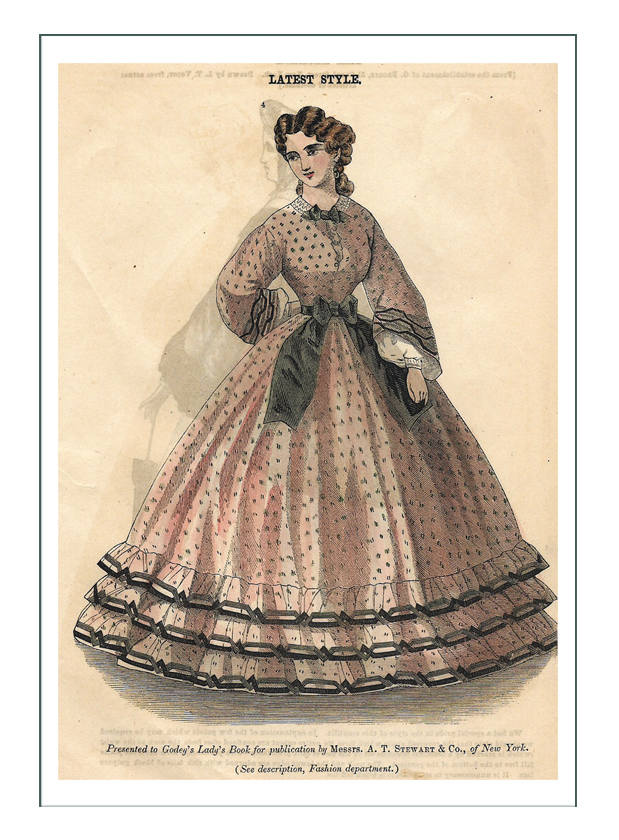
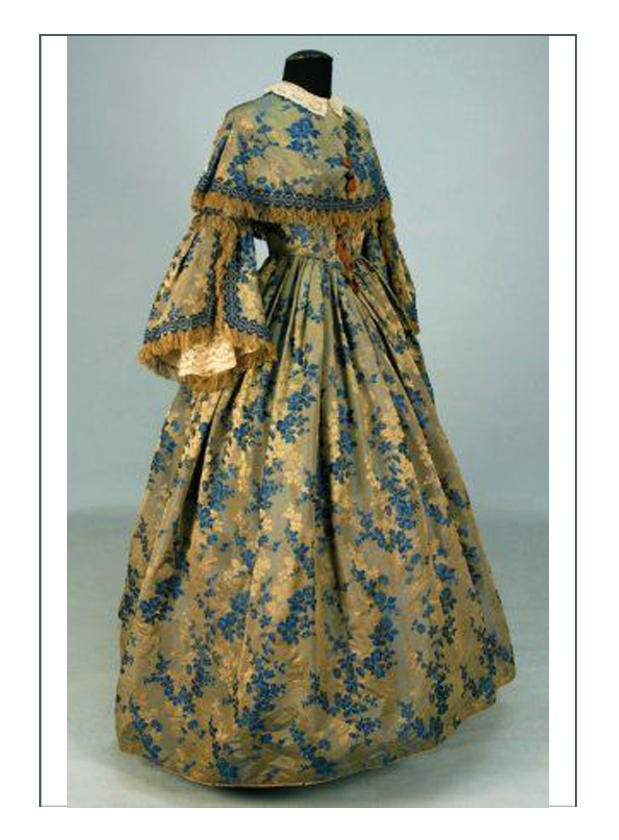
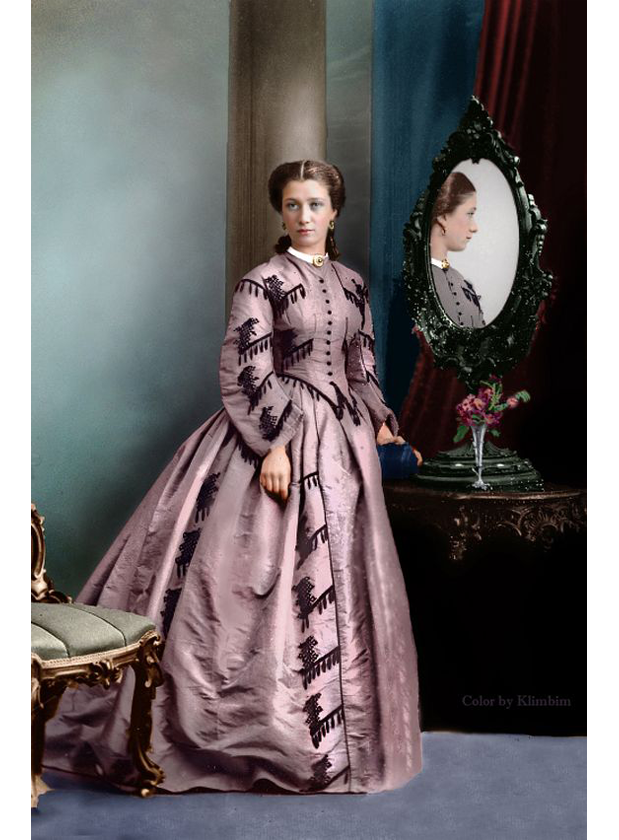
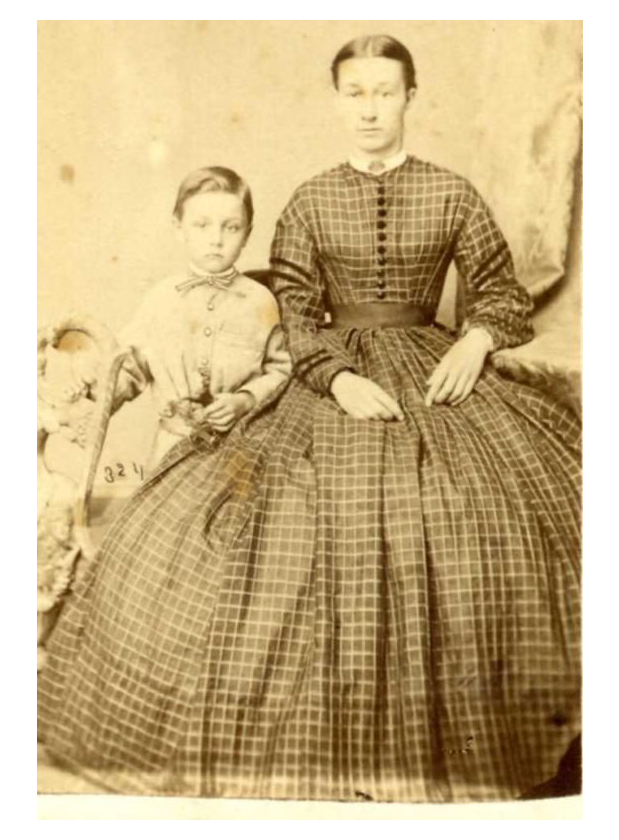
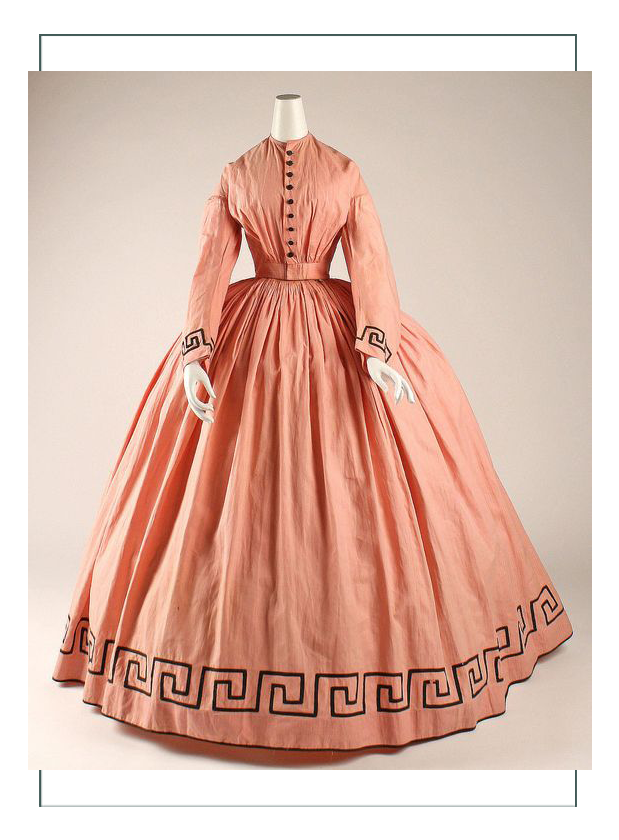
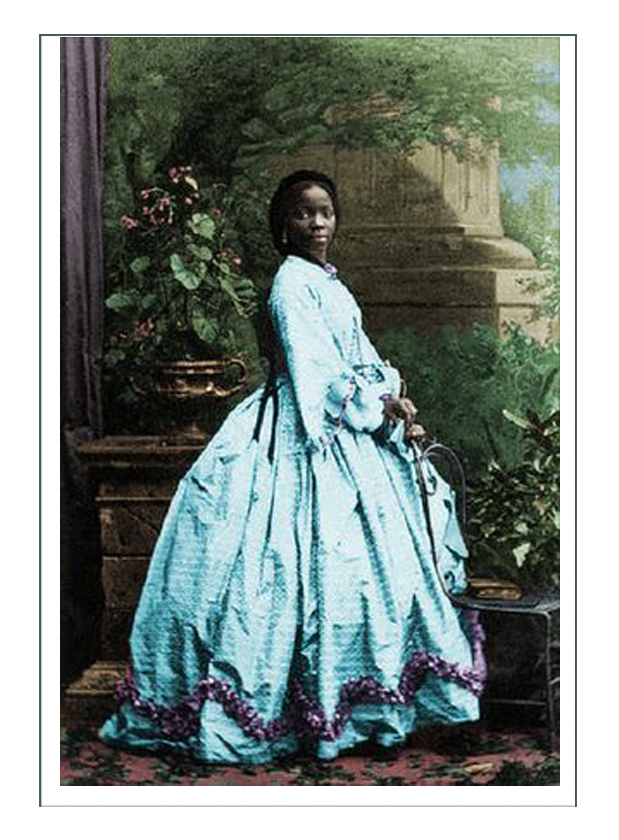
AND THE FABRICS AGAIN
These are designer favorites from among what is available. Except the blue stripe which is cotton, they are all silk taffeta:
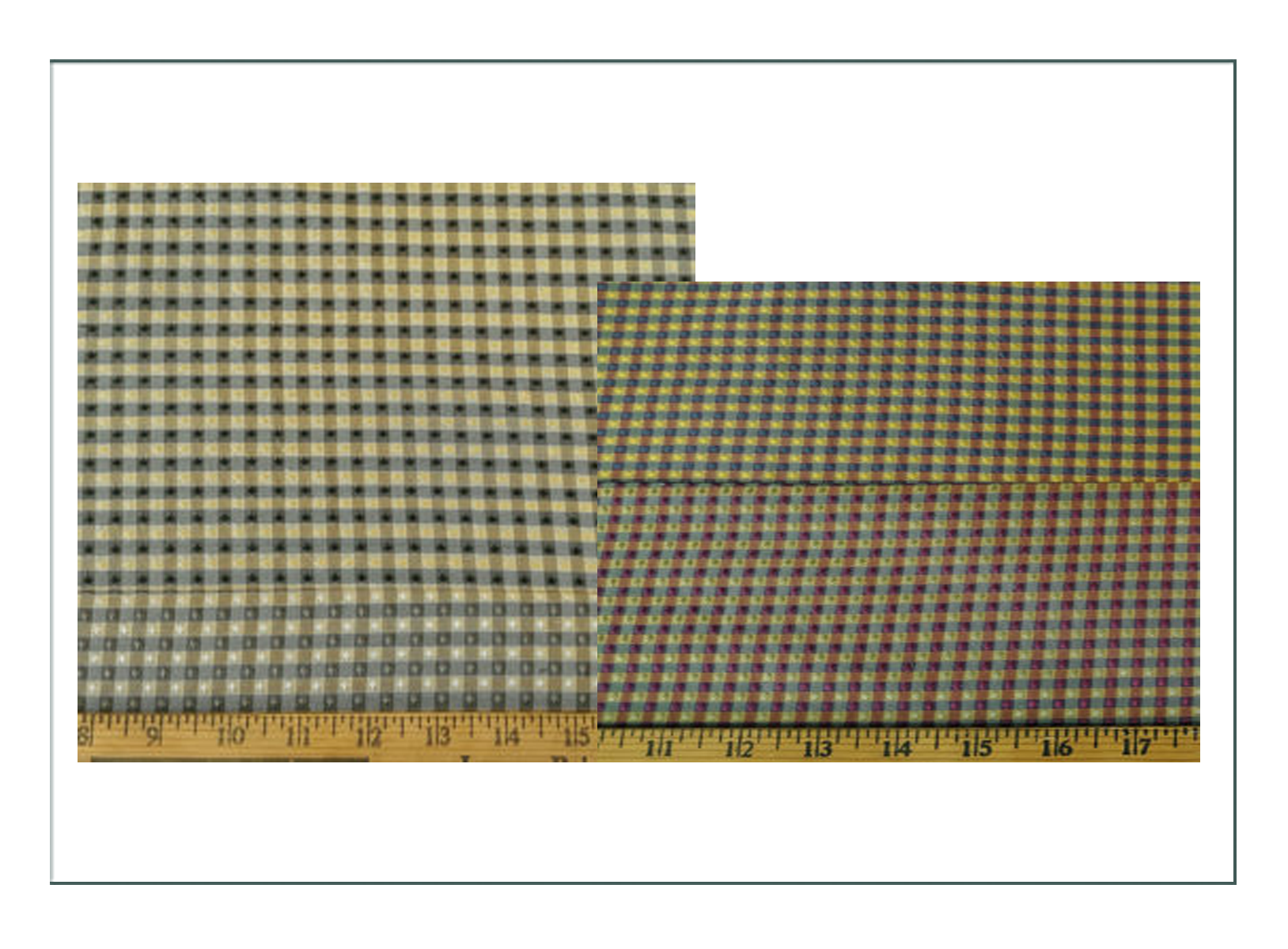
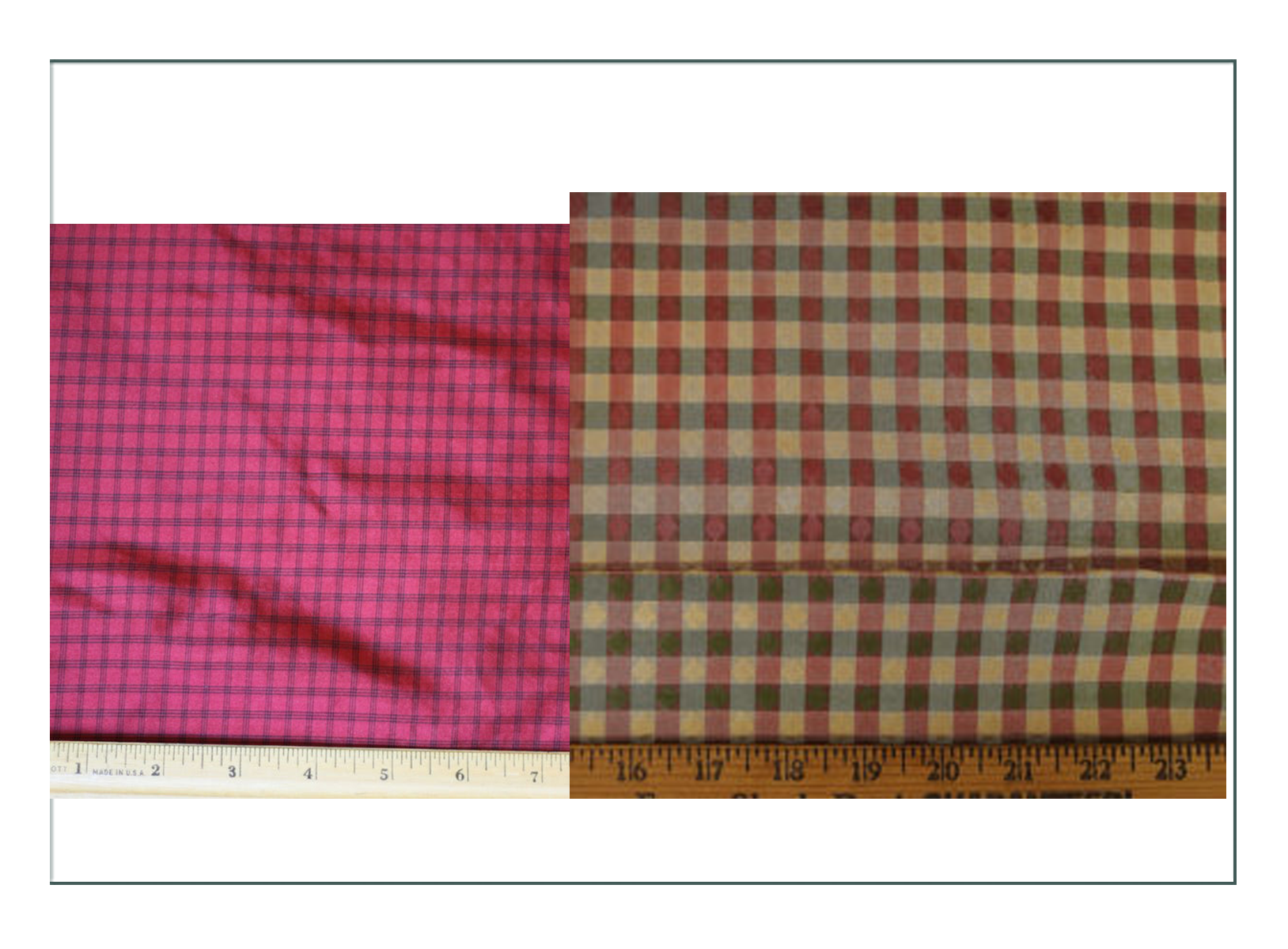
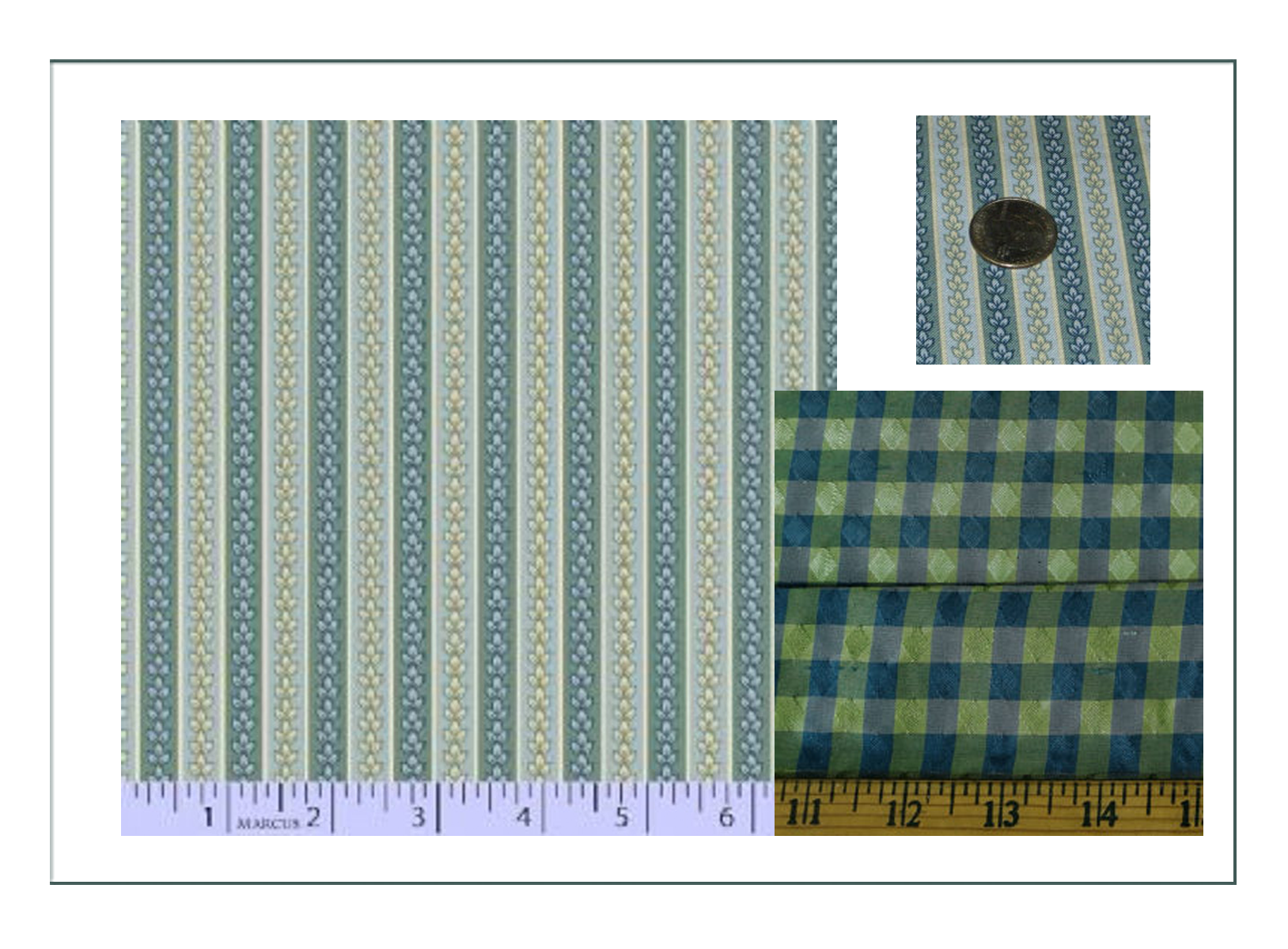
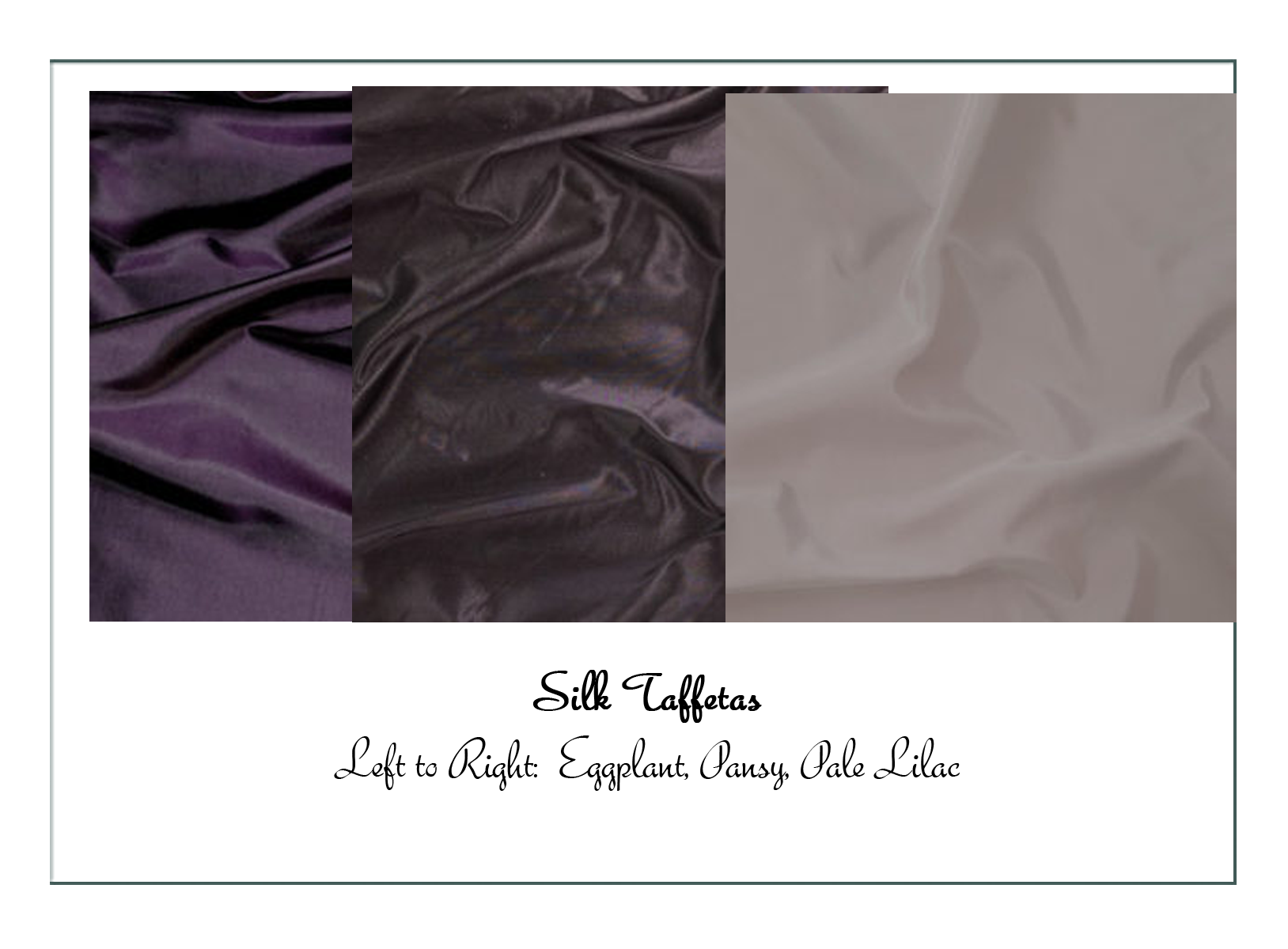
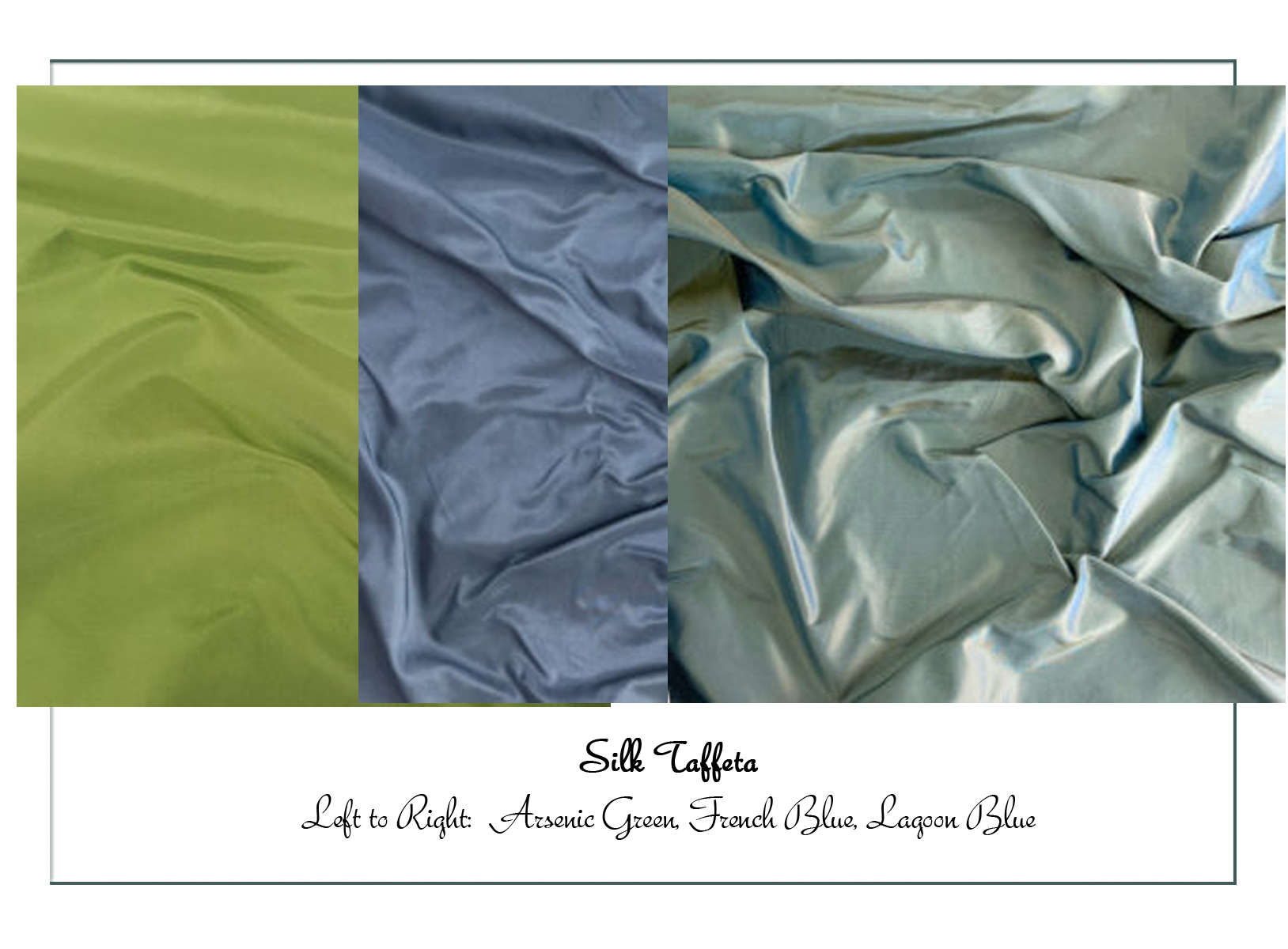
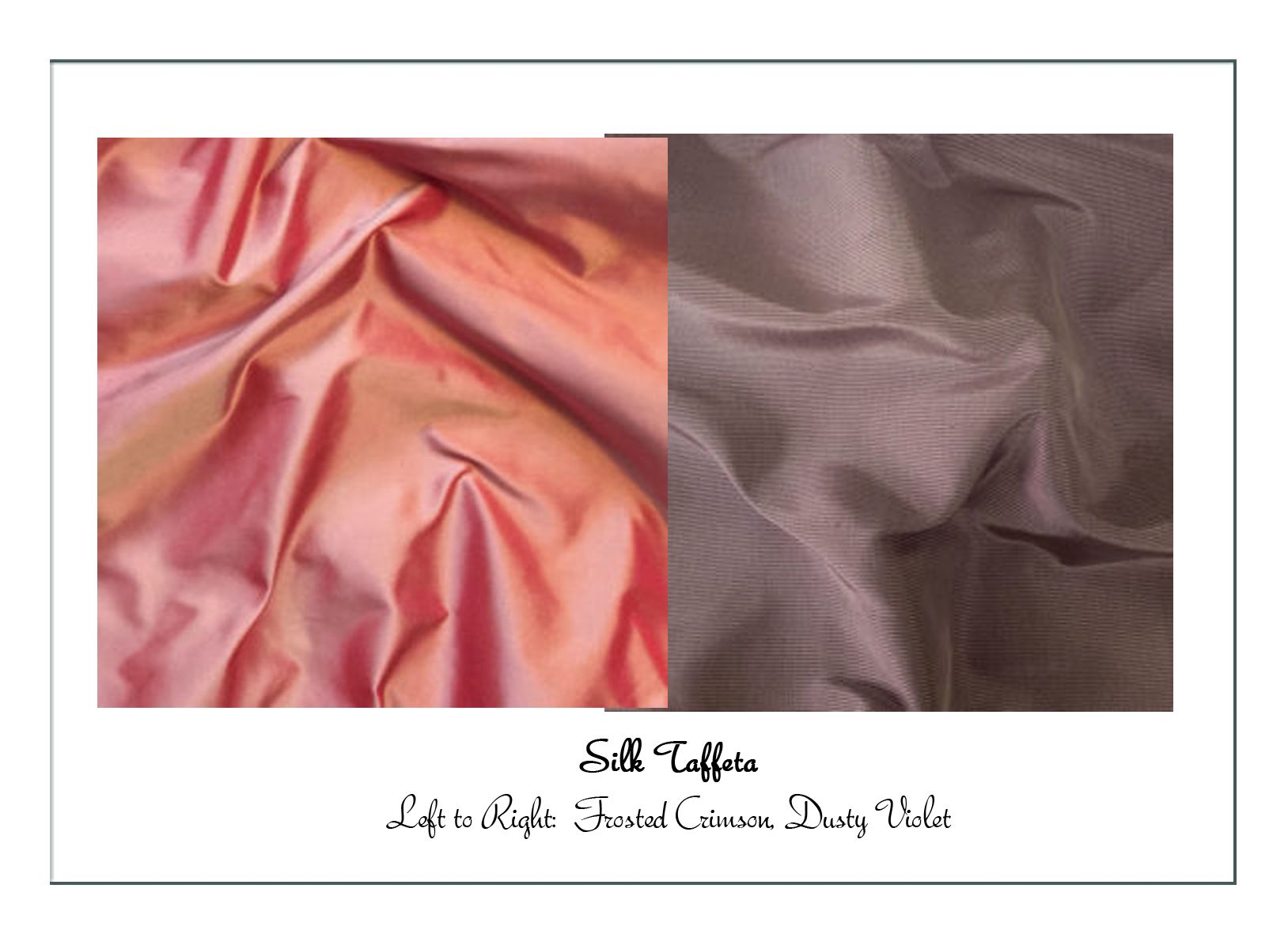
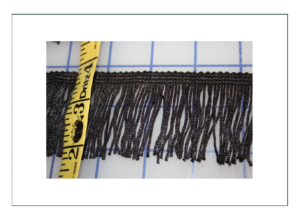

After discussing with Dr. Anderson, she has selected the following as guidelines for design. Next will be design sketches and recommendations for undergarments, structures, and accessories.

Note: We build from these sketches; will put together the final selections along with undergarments and structures onto one page for reference and pricing next.
Ballgowns
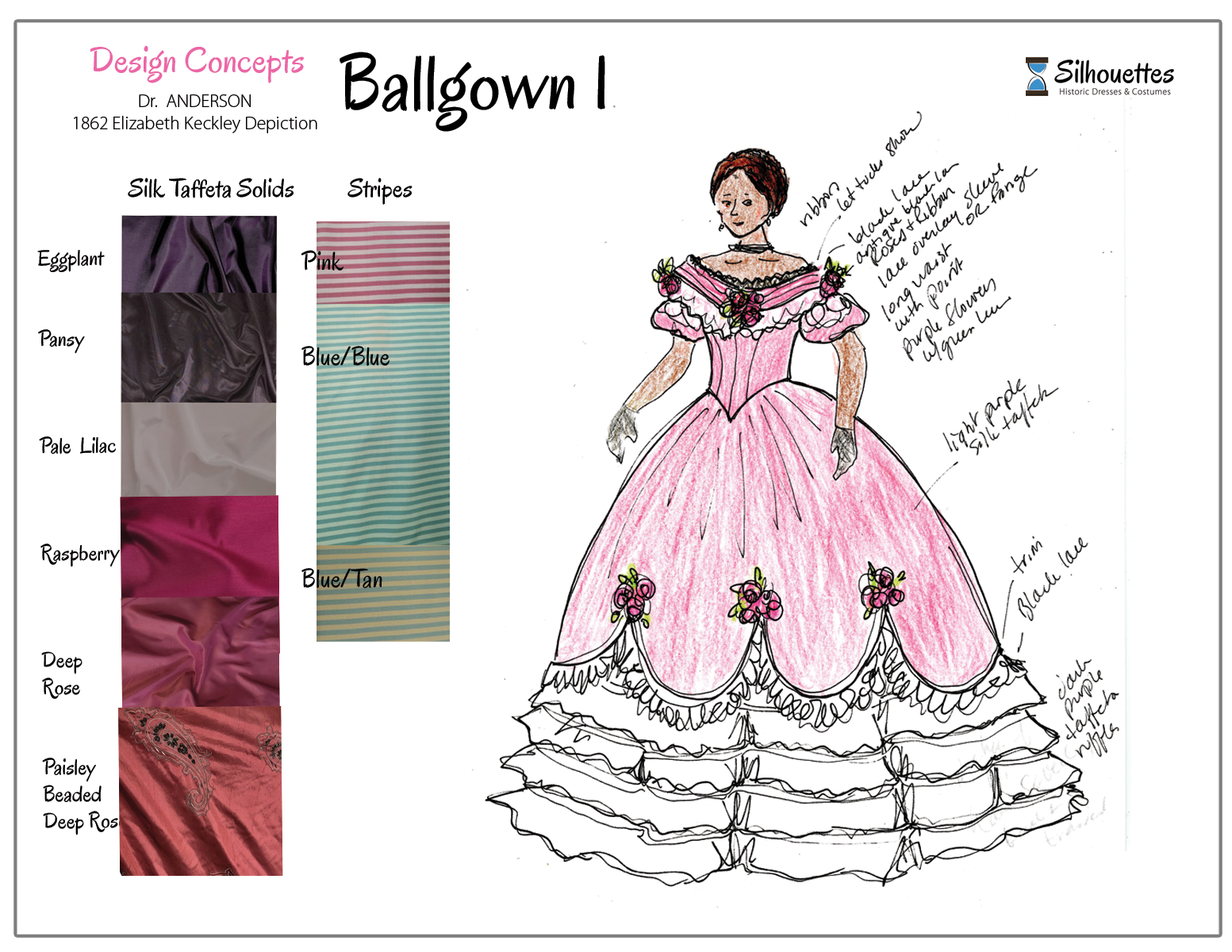
Replications of Keckley’s Own Work
Based on the analysis above of Keckley’s work, tastes, and the only 2 photos from the 1860’s we have of her, here are two possible REPLICATIONS (meaning will look exactly like hers) and available fabric options:
Based on her Portrait:
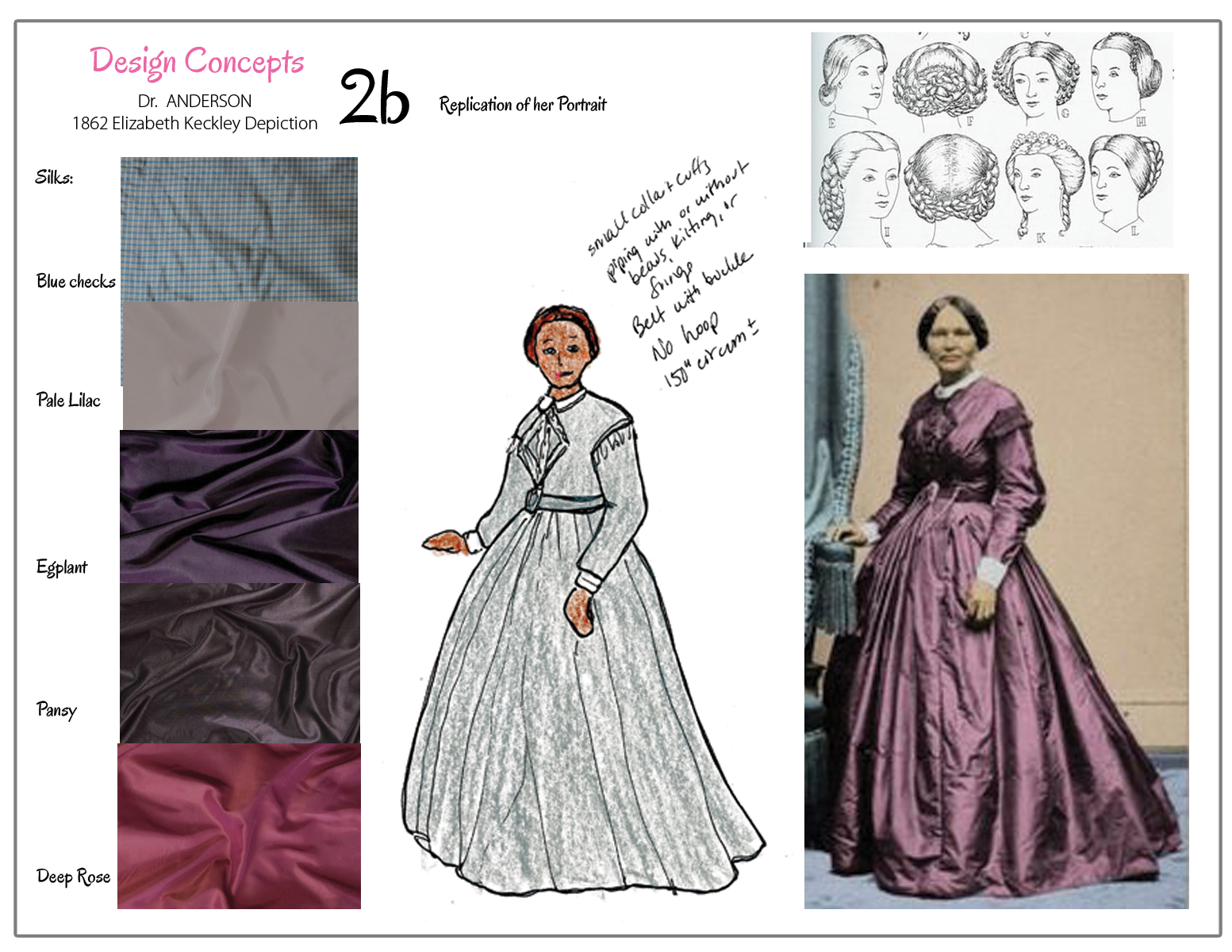
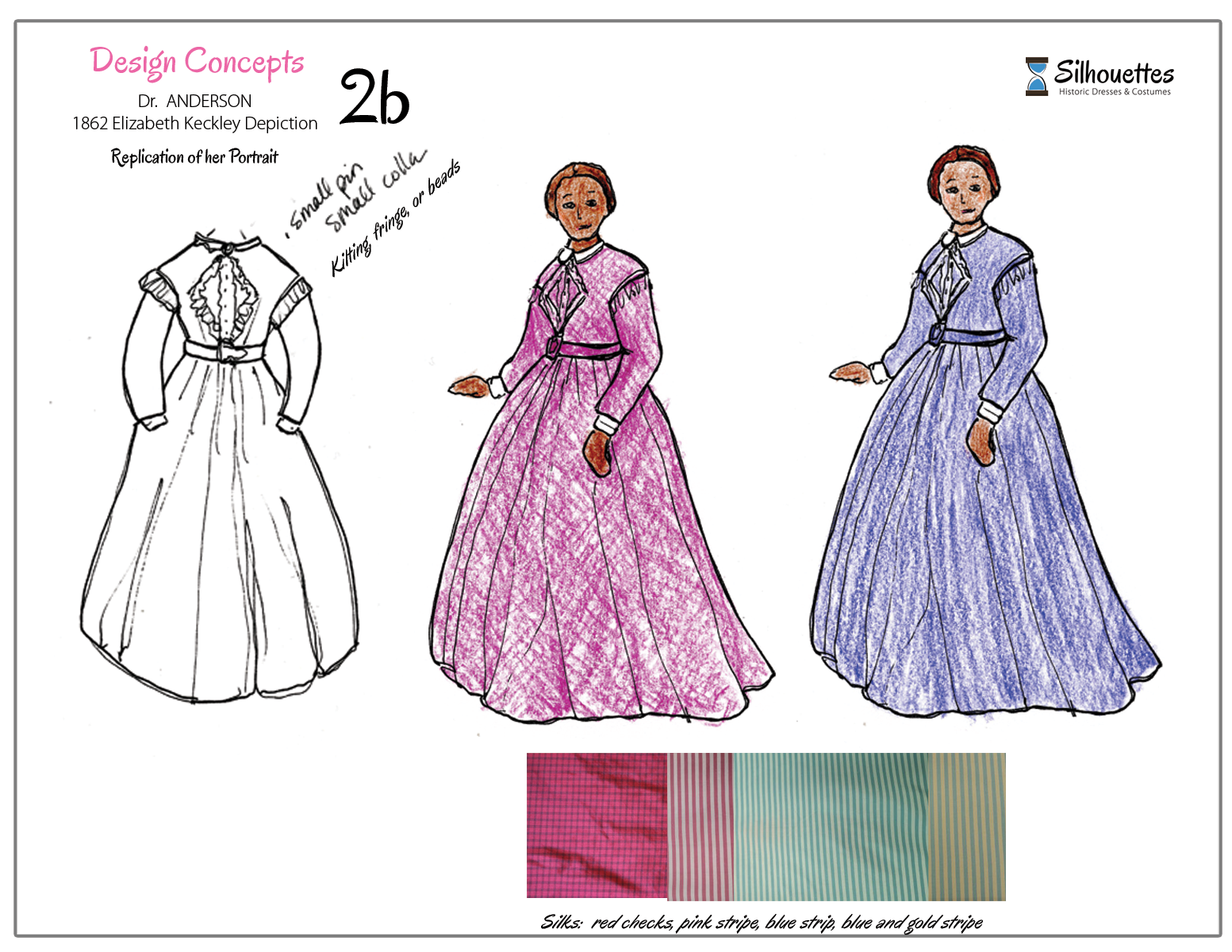
Based on her sculpture in the Lincoln Museum in Springfield:
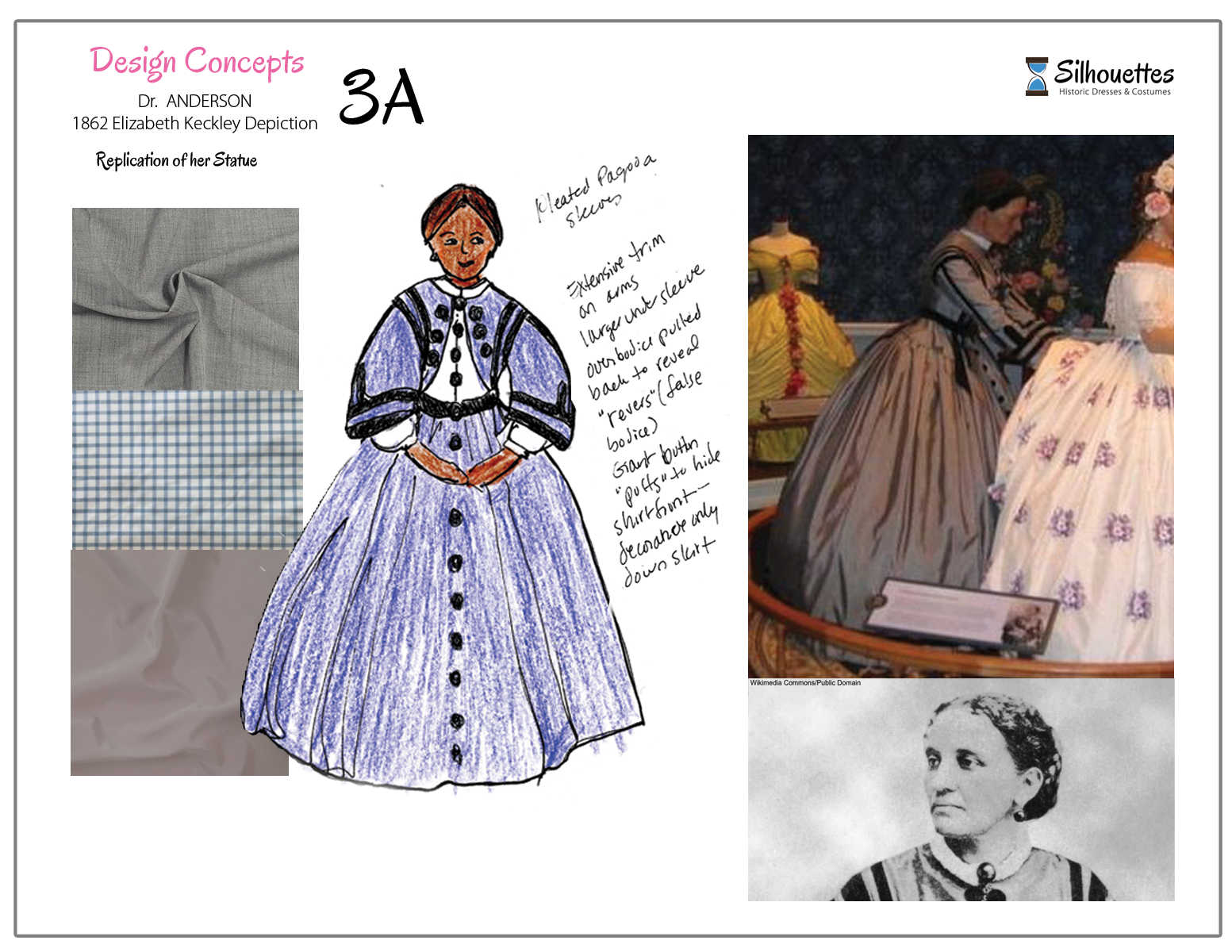
Silhouettes’ New Designs based on Keckley’s
Simplified for Modern Interpretations, pus a new Work Dress too
1A – closest visual representation:
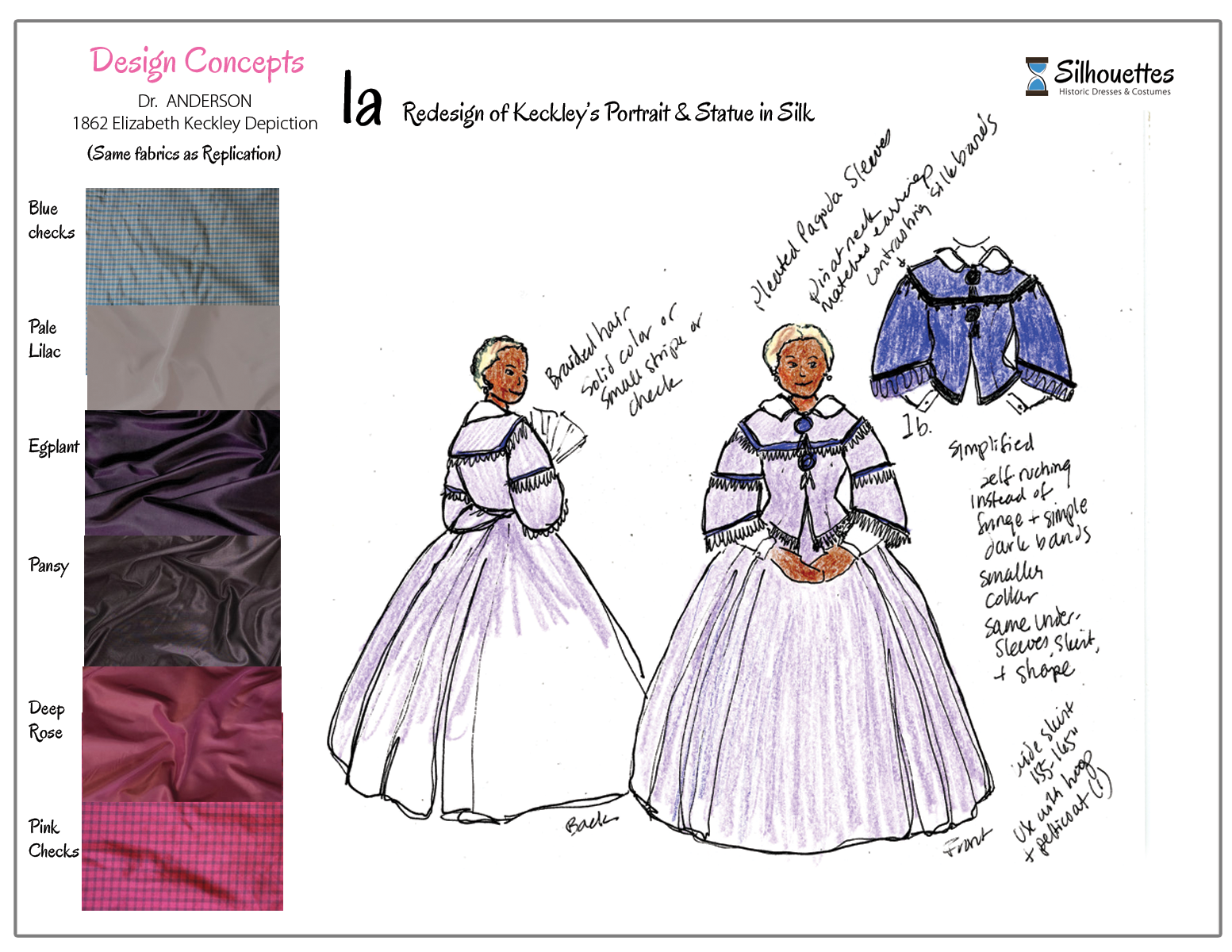
1B – close representation but in fabrics other than silk: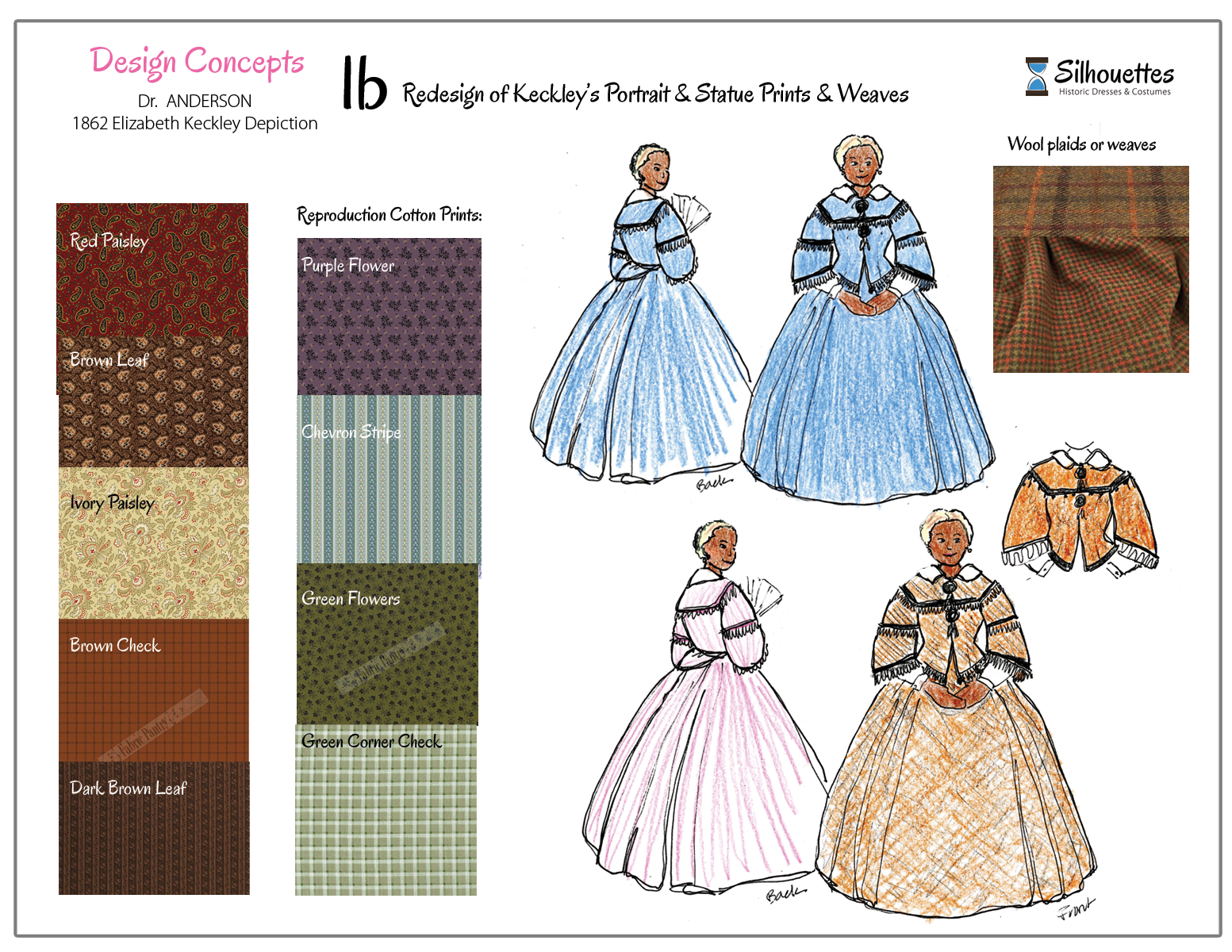
2A – straying from replication, this is typical of what Keckley would have worn daily and not at the White House: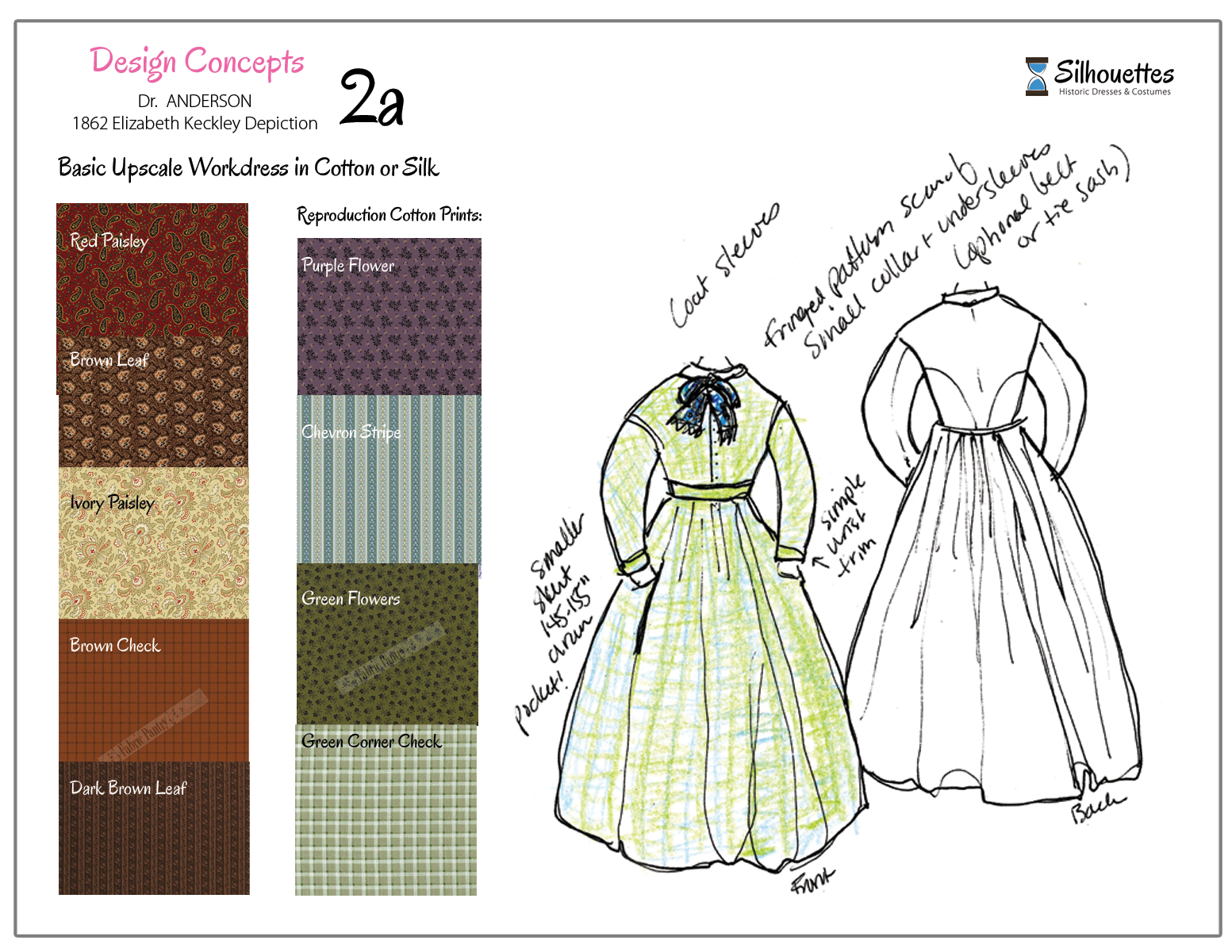
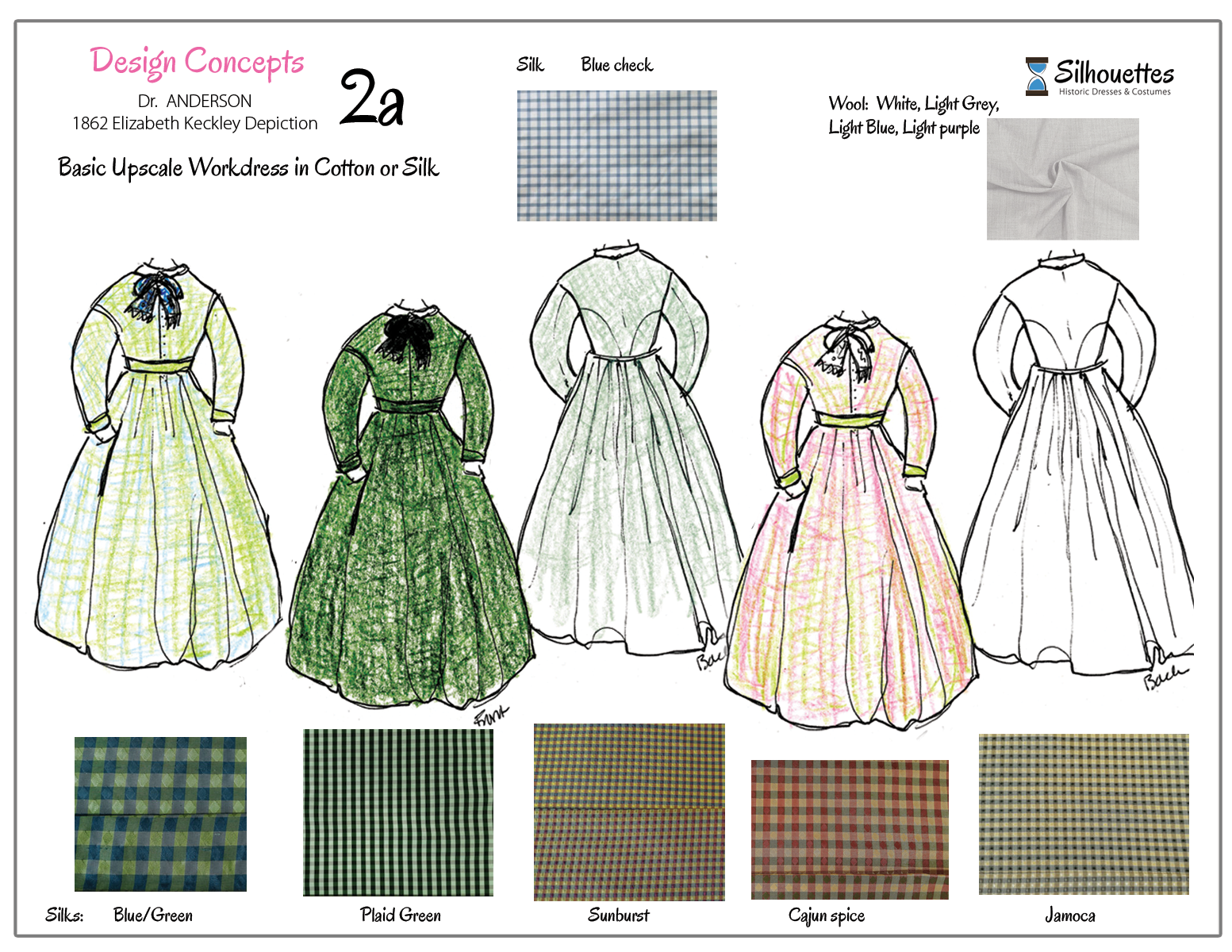
4A, 4B – We put together the accurate replication with features we liked, brought it “down” to a working dress that can be made in ANY desired fabric nicely, so it is actually a compilation of all the designs above for a daydress: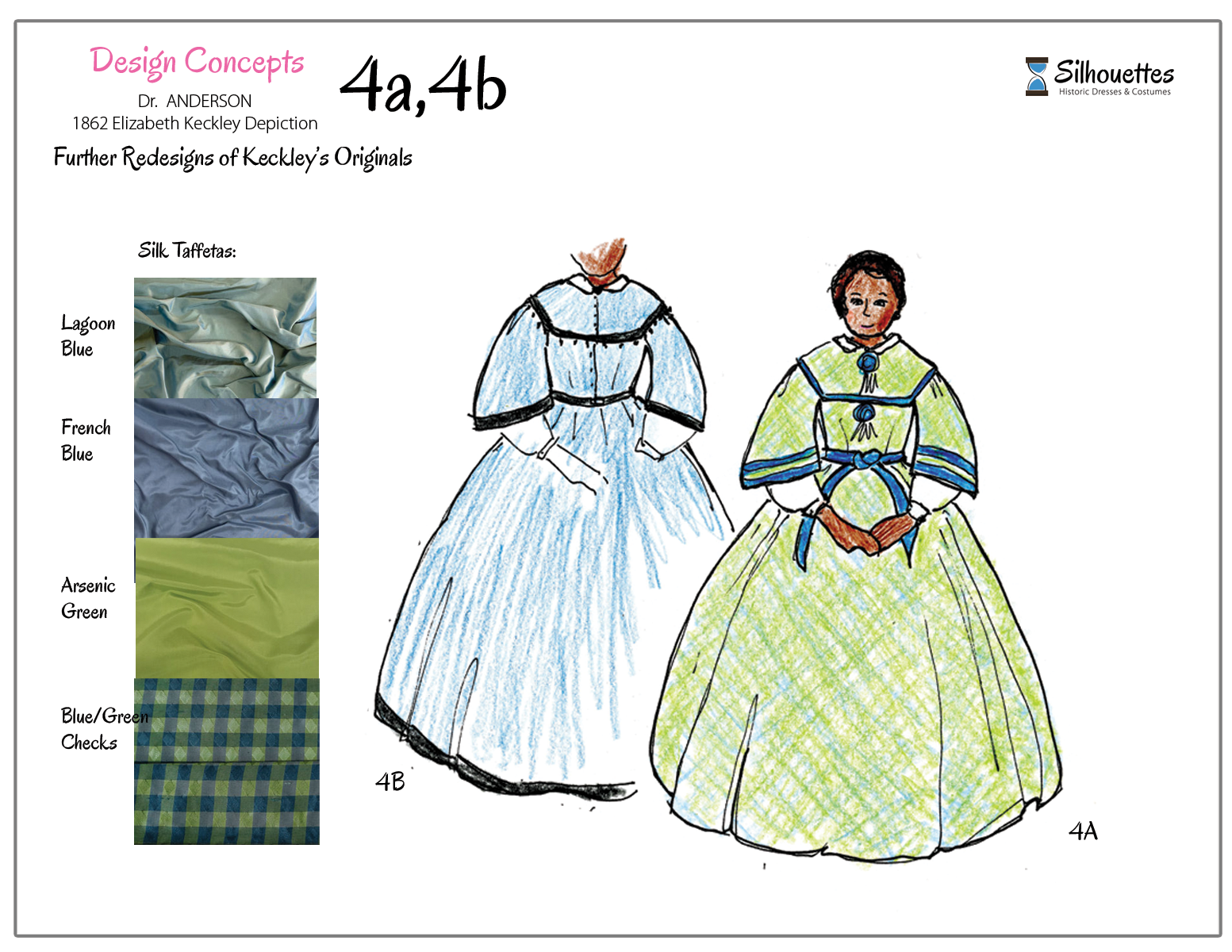
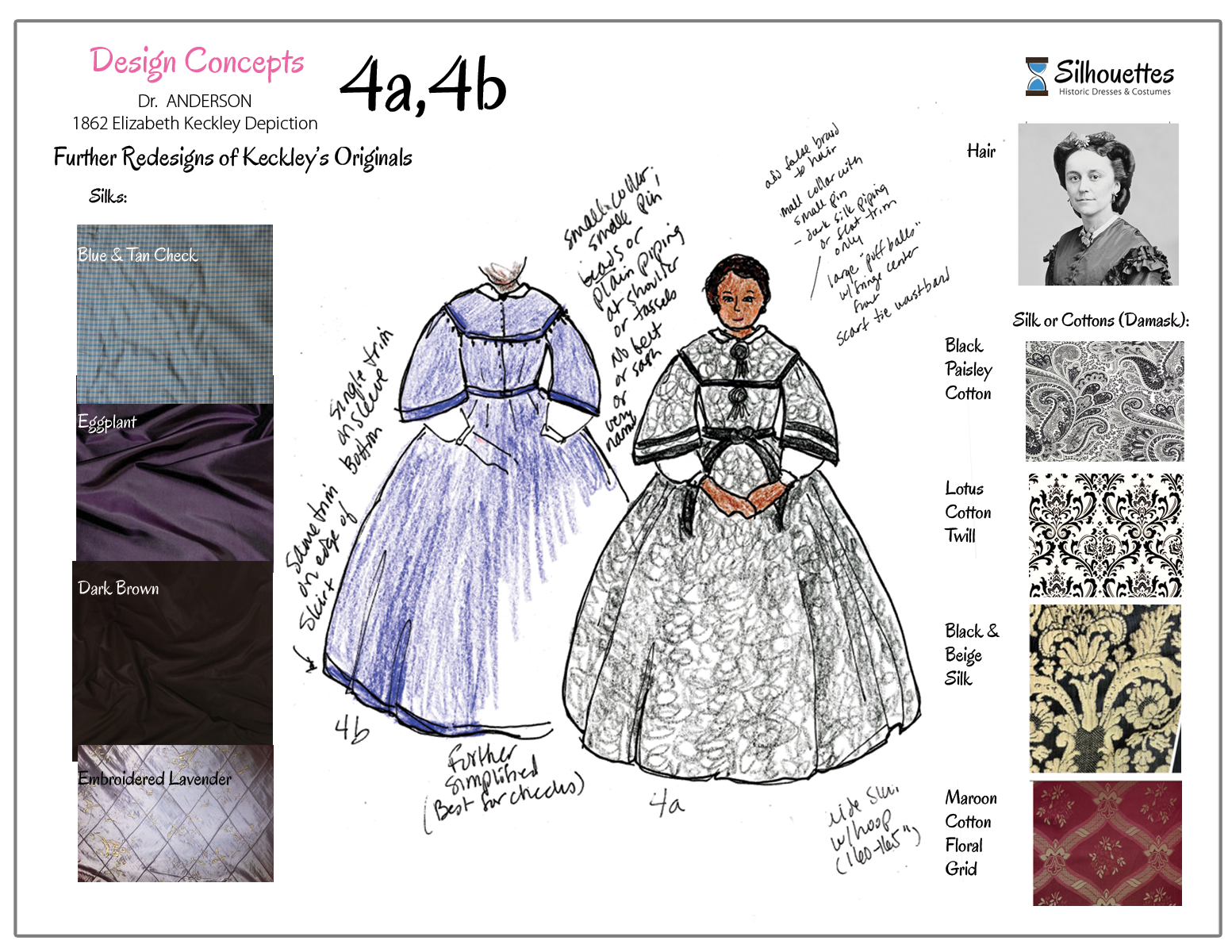

Undergarment & Accessory Selections
Go with any of above designs




Hair
We recommend a braid hair piece wrapped around the head to give it more fullness and period correct shape, but not a wig nor a full hair piece. Wrap like any of these. We can provide a wig though.



From our regular supplier, the first is a full head wig (in any color!), and the others are clip on braids and curls which are inexpensive and probably all we need for this project (available in select colors):
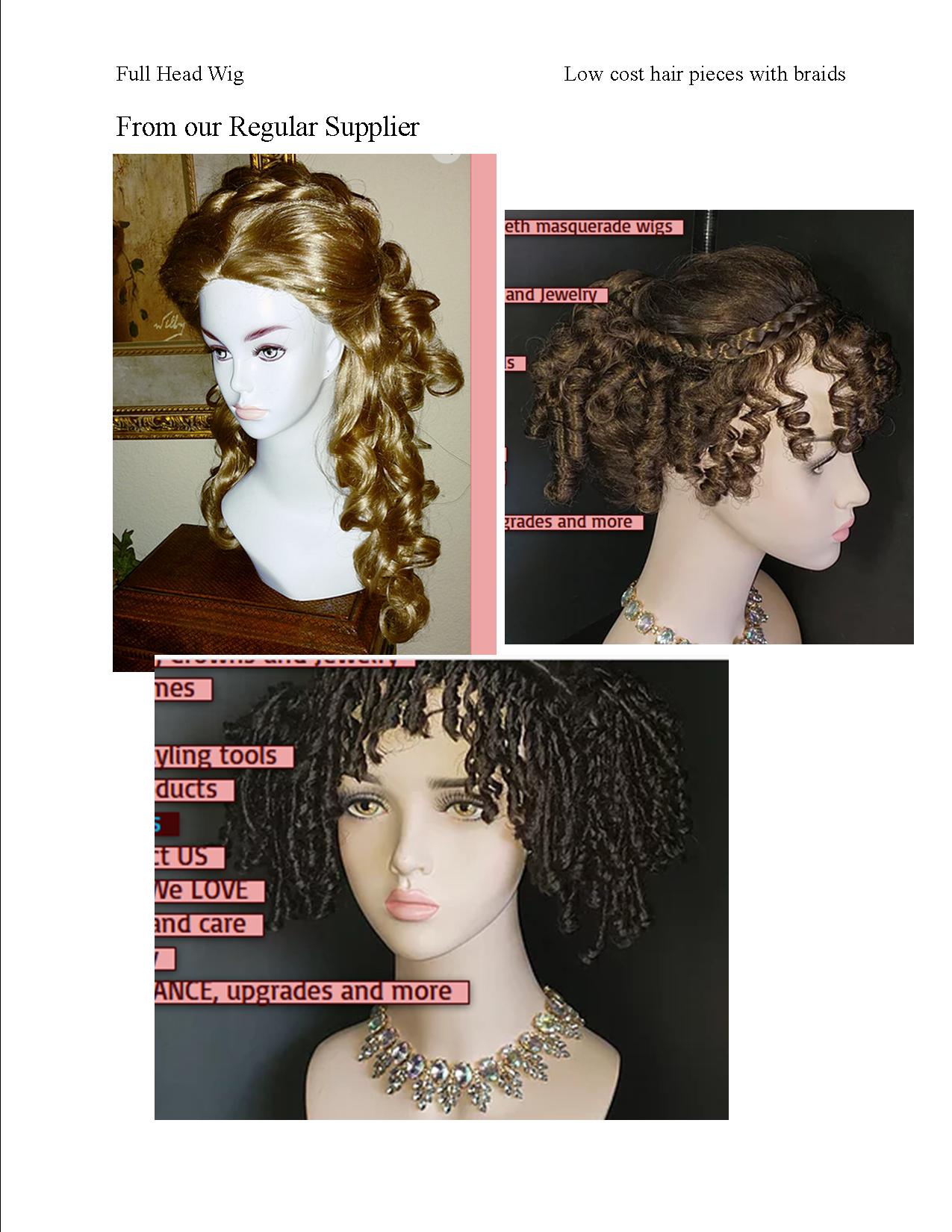

After talking about it, Dr. Anderson likes this if we make a daydress:
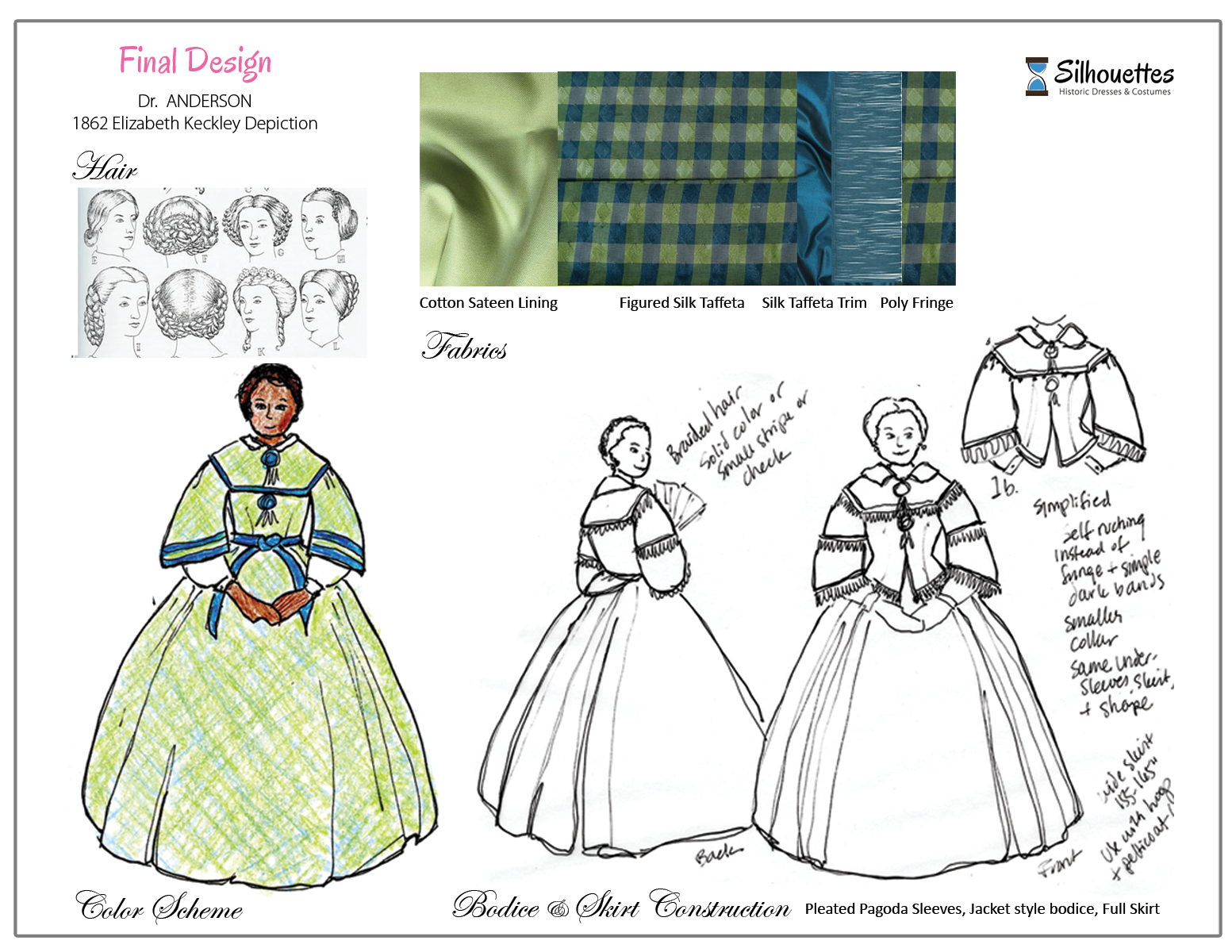
(she has been forewarned it looks a lot like “Arsenic Green”, although today’s green dyes are very safe!)
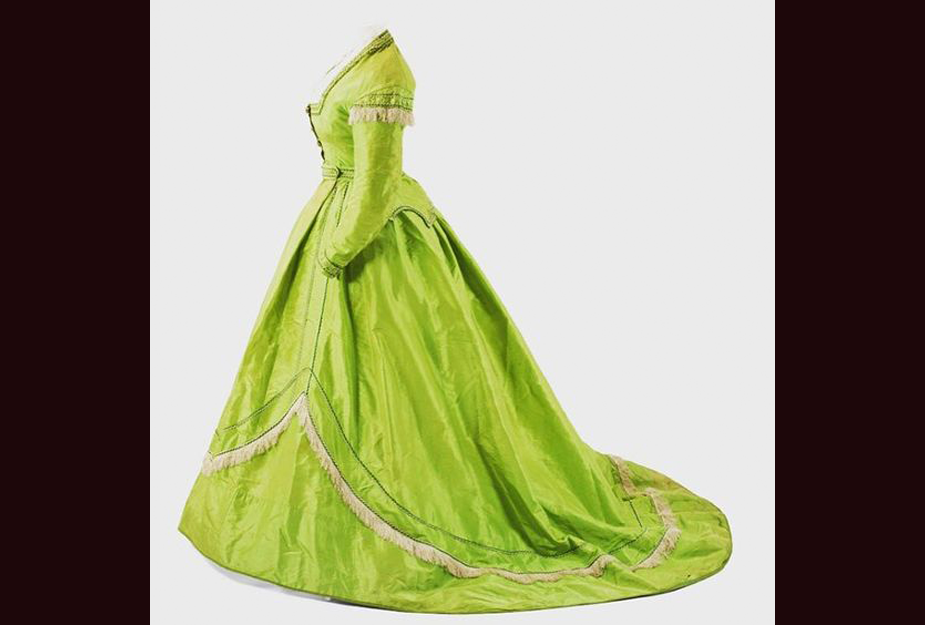
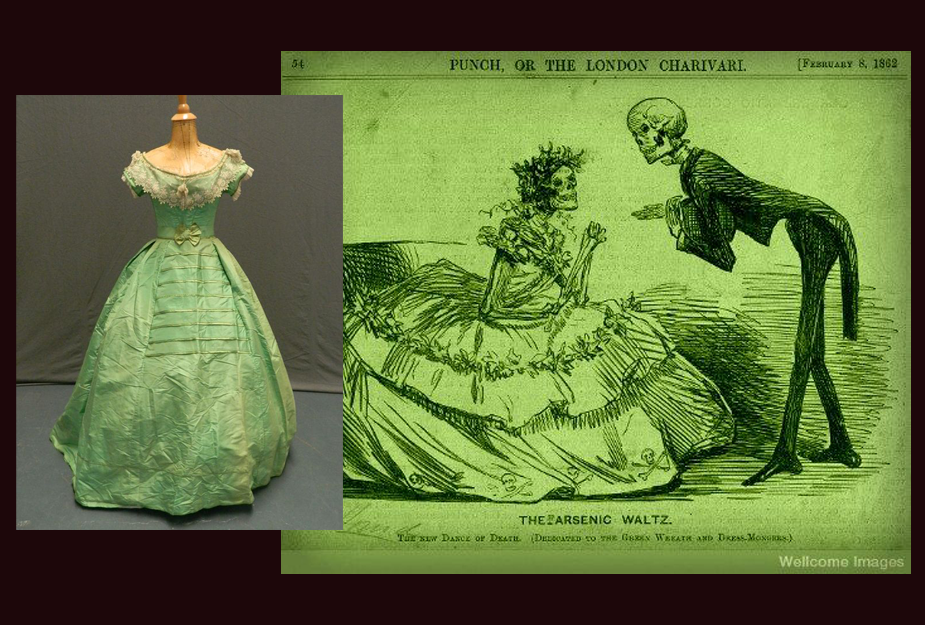
These extant gowns do make us think we might use a neutral or light colored fringe instead of all coordinated. They liked their high color contrasts in the early 1860’s, especially designer Elizabeth Keckley.
BallGown Final Development
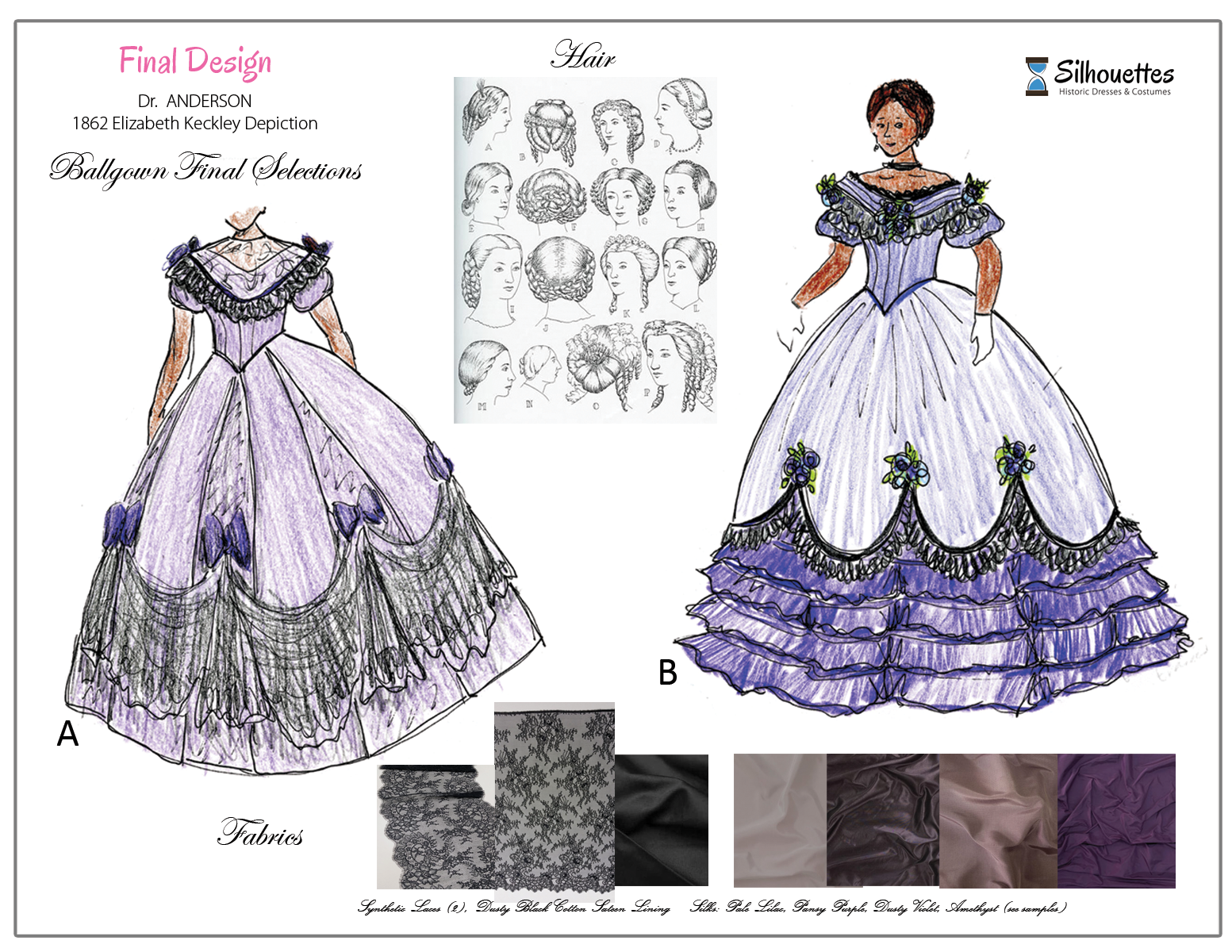

After discussion of the above, and after Dr. Anderson had real fabric samples in her hands to look at, we made some decisions on the type of ensemble this should be. We studied all of the books including Mrs. Keckley’s autobiography, watched all the movies where she is depicted, and made the following decision: it must be a day dress. It must be a day dress that’s so beautifully tailored to fit, with detail to trim, and high fashion of the exact date, that it might as well be a ballgown.
Cost factors also came into the decision. A ballgown uses over 16 yards of silk taffeta and 12 yards of 28″ lace plus more! A day dress uses “only” 9 yards of fabric and no lace, with trims that can be more easily found today.
A few other decisions:
- Pale lavender silk with black or dark purple trim
OR
- Purple and purple or green and blue checked silk with coordinating trim to be decided
- 140-50″ hem circumference (for large hoop, but less fabric than ballgown)
- Possible unique trim configuration as per examples
- Short bodice with tapered center point (not long like some of our designs above)
Here are the extant gowns from which we draw inspiration; some for trim detail, some for fabric, and some for the overall “look”:

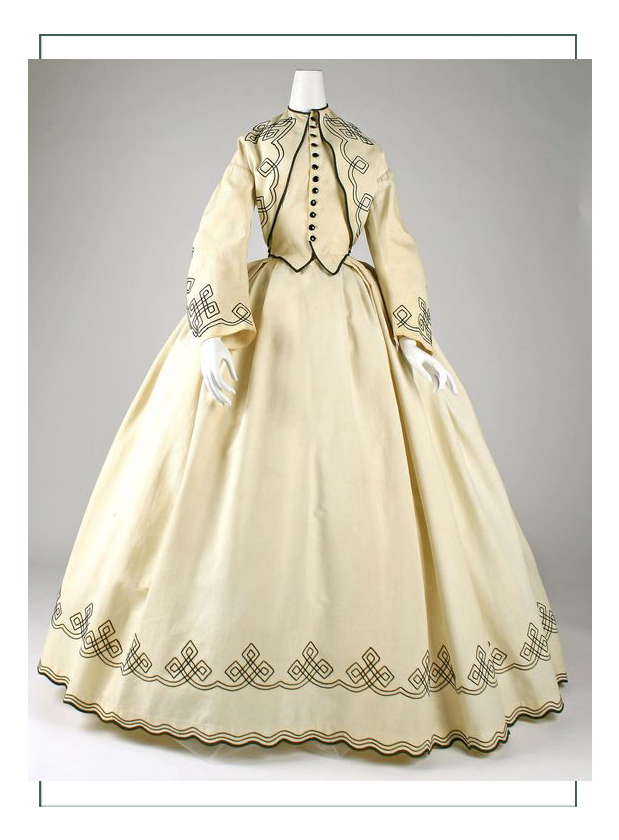
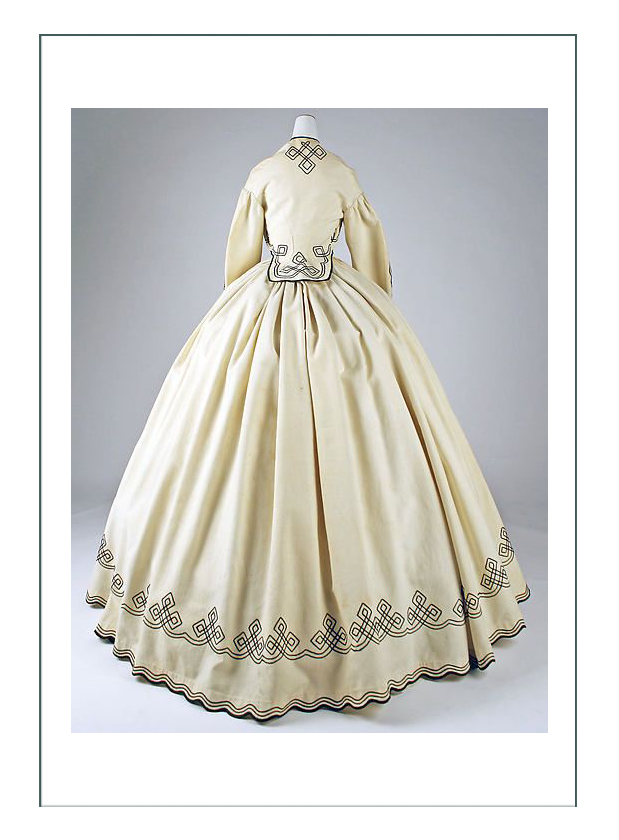
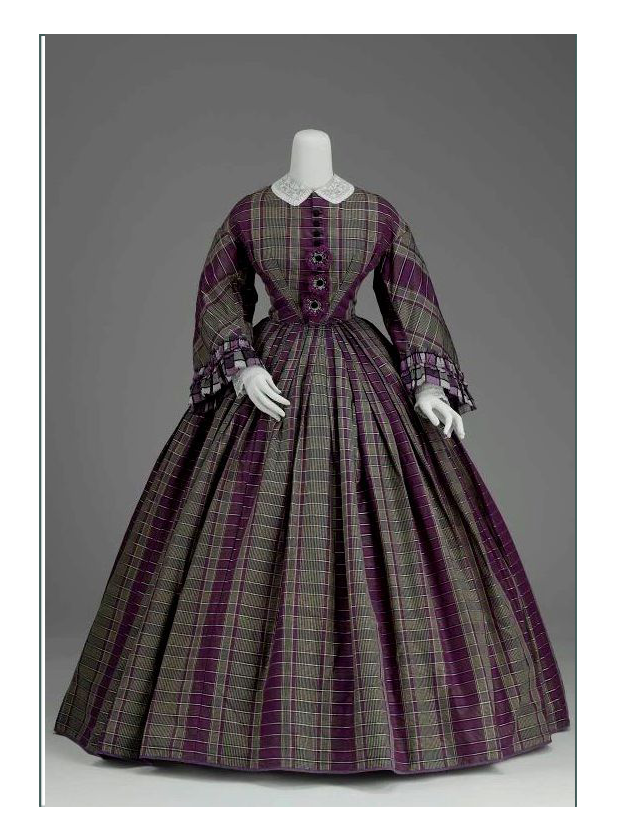
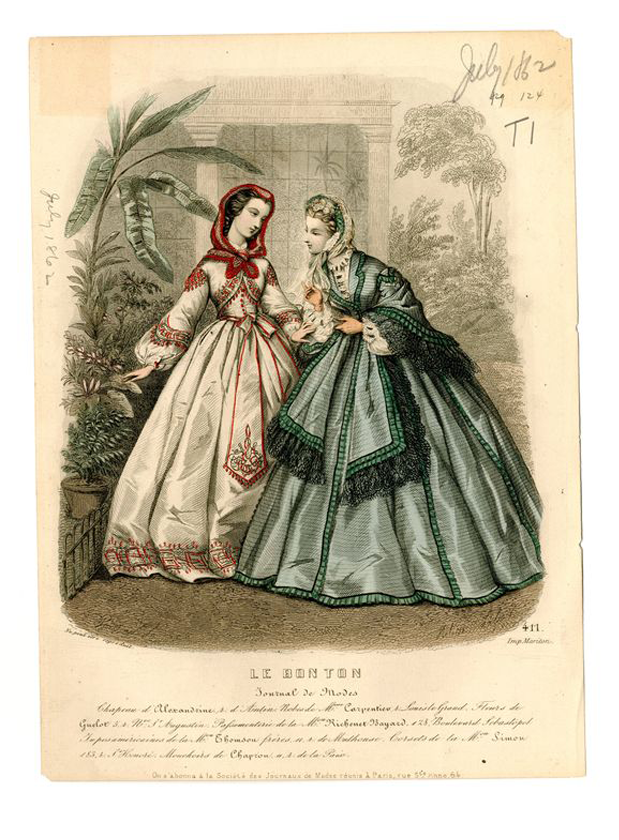
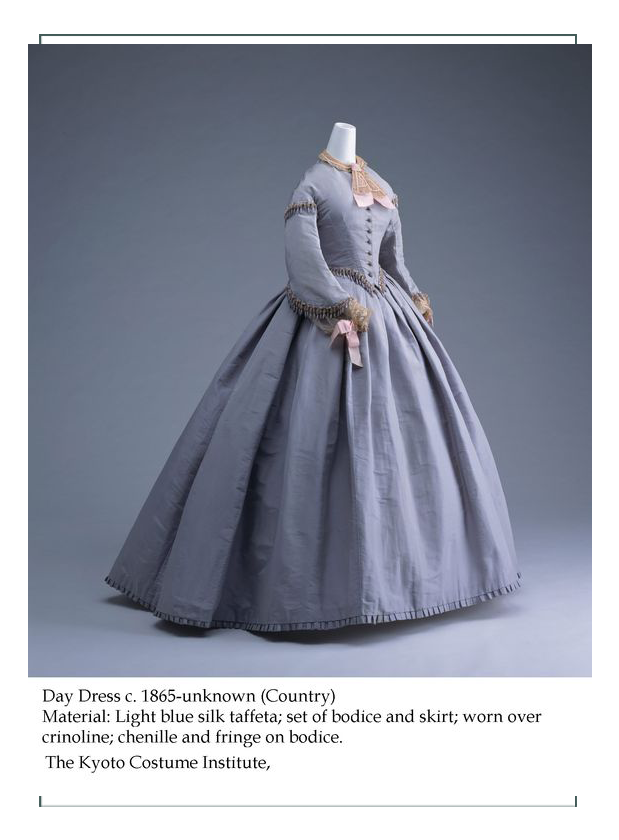
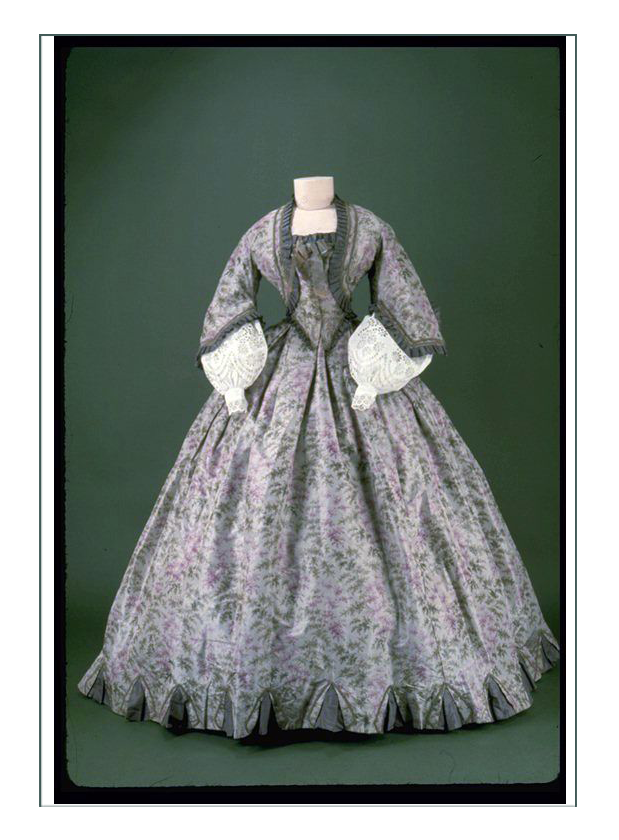
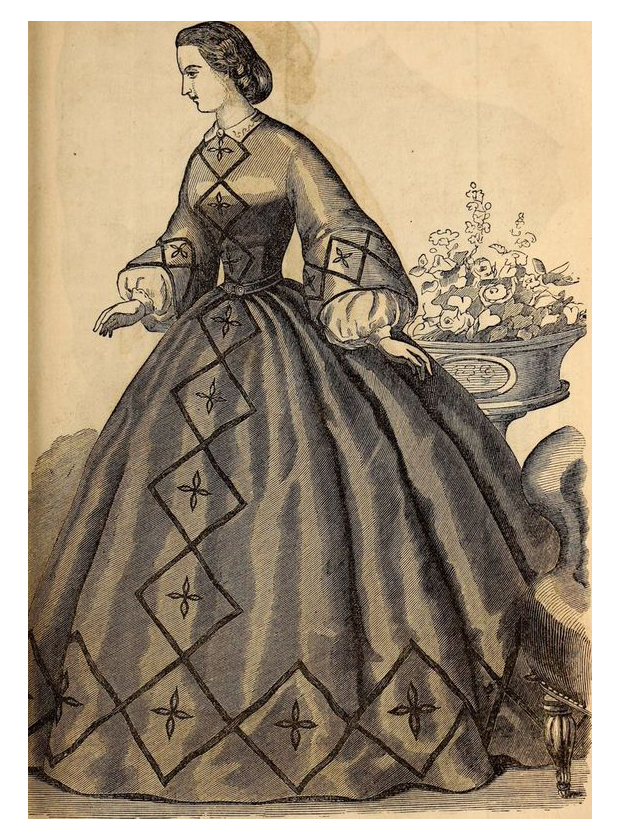
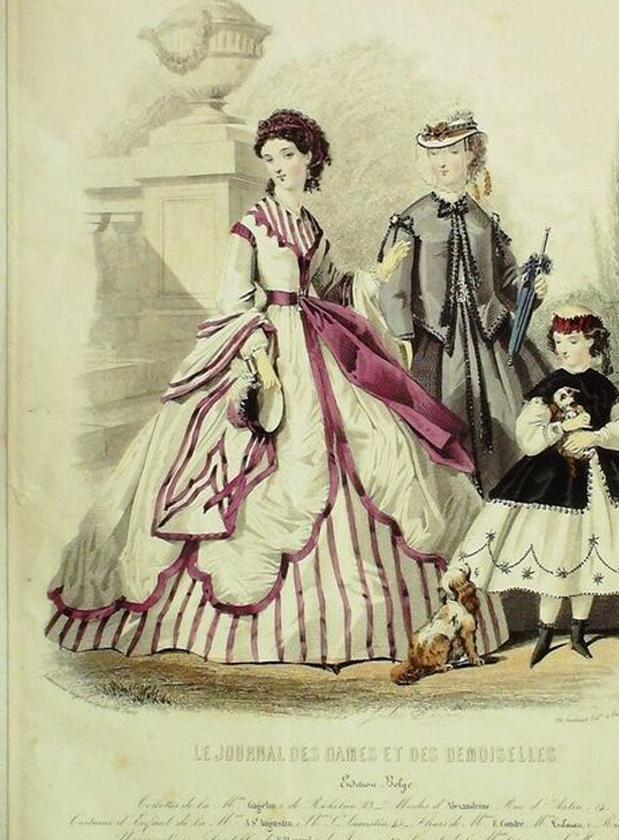
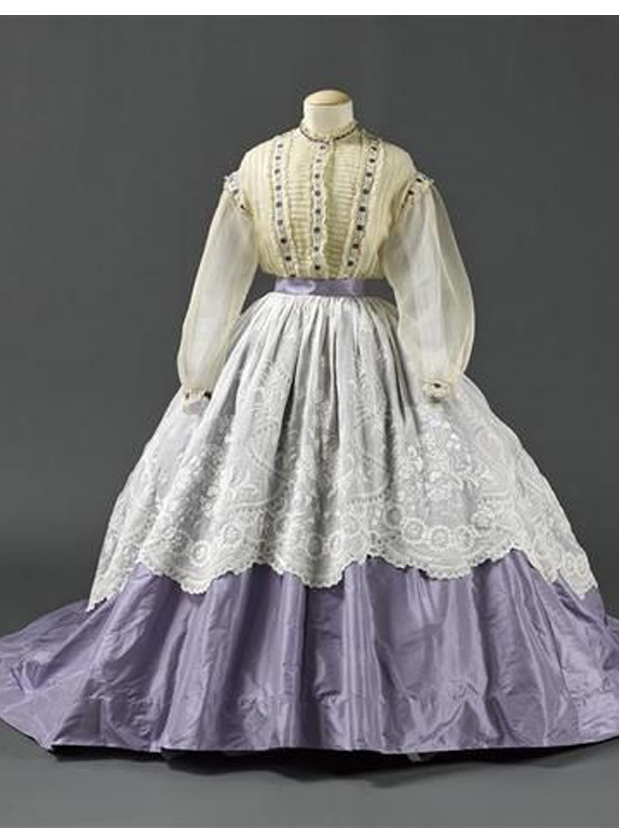
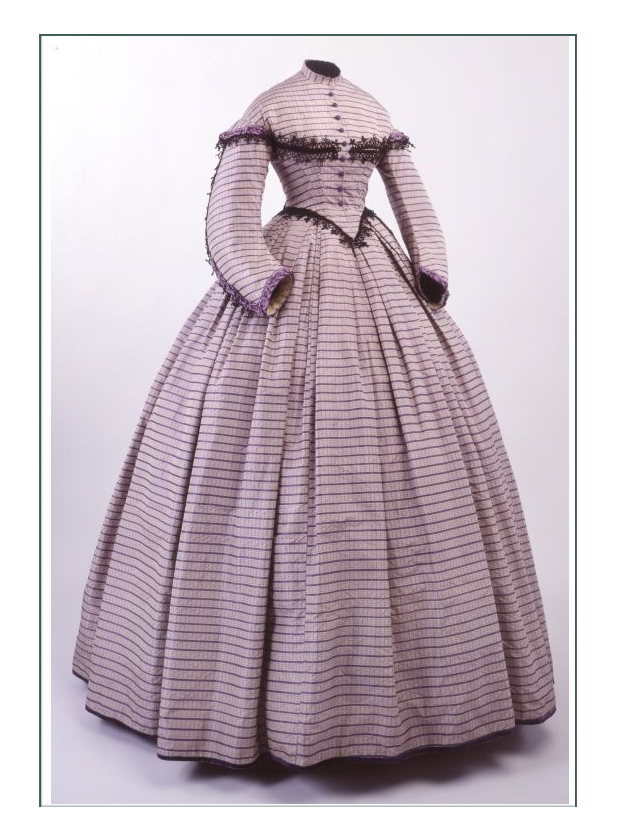

The final project will include:
- Bodice
- Skirt
- Fanchon Bonnet
- Hoop
- Petticoat
- Chemise
- Split Drawers
- Crocheted Gloves
- White Collar
(She already has corset, stockings, boots/shoes. Hair is too short for hairnet. Engageantes possibly if option of pagoda sleeves selected)
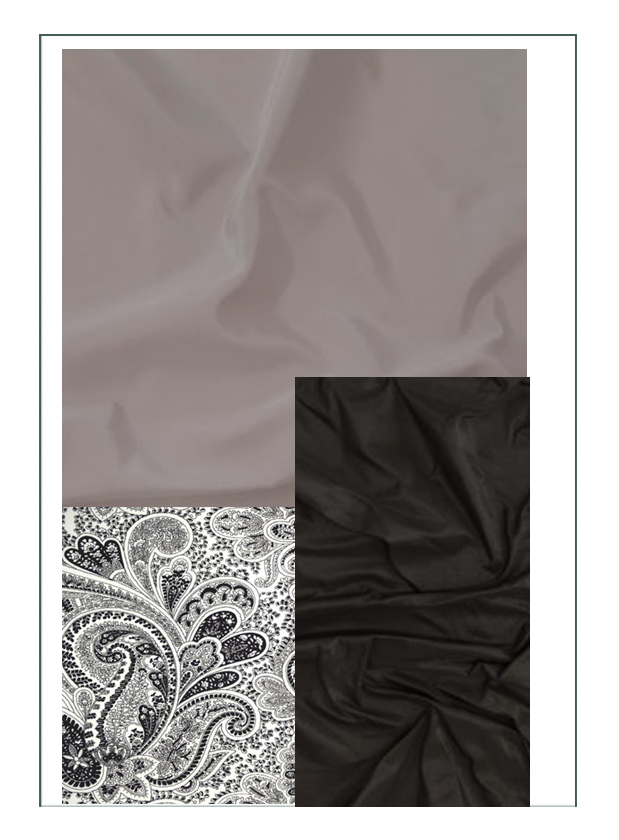
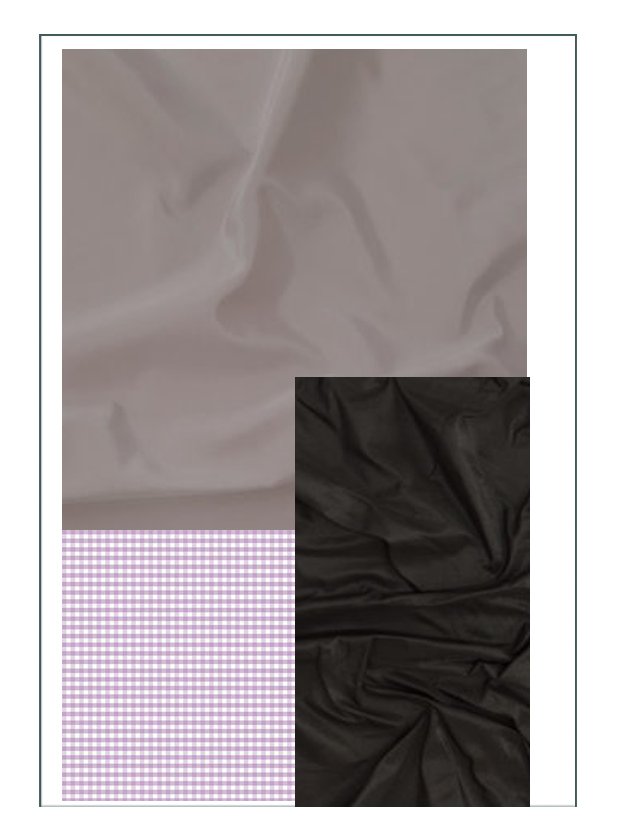
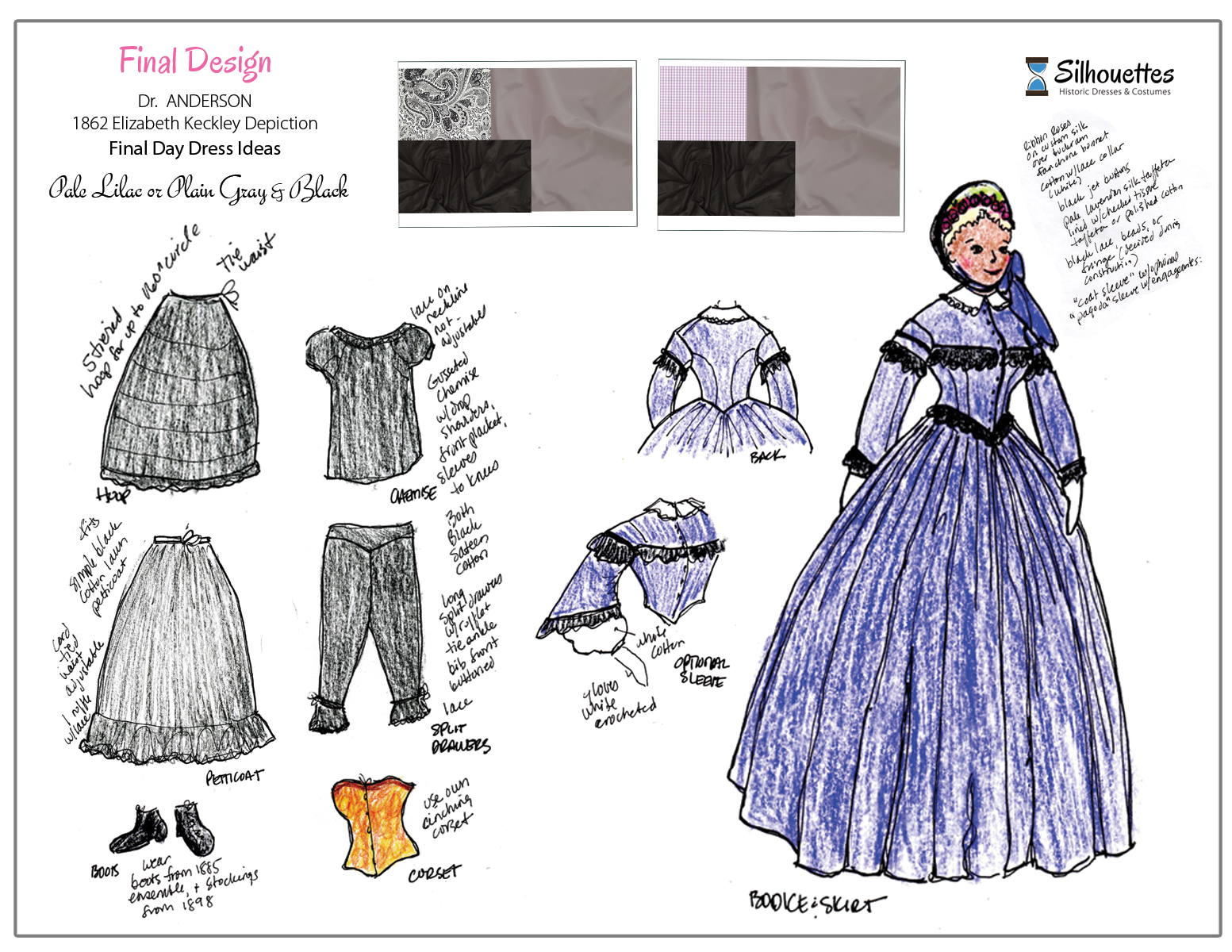
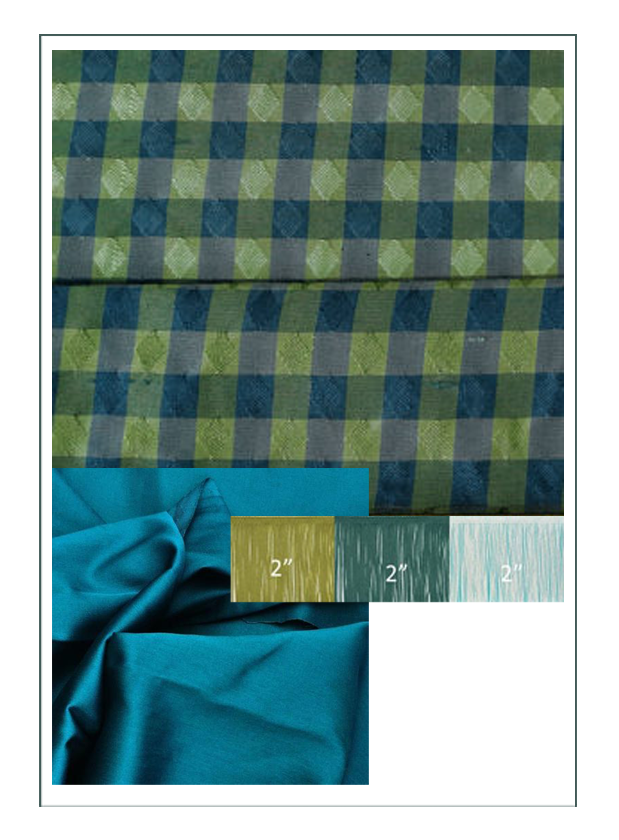
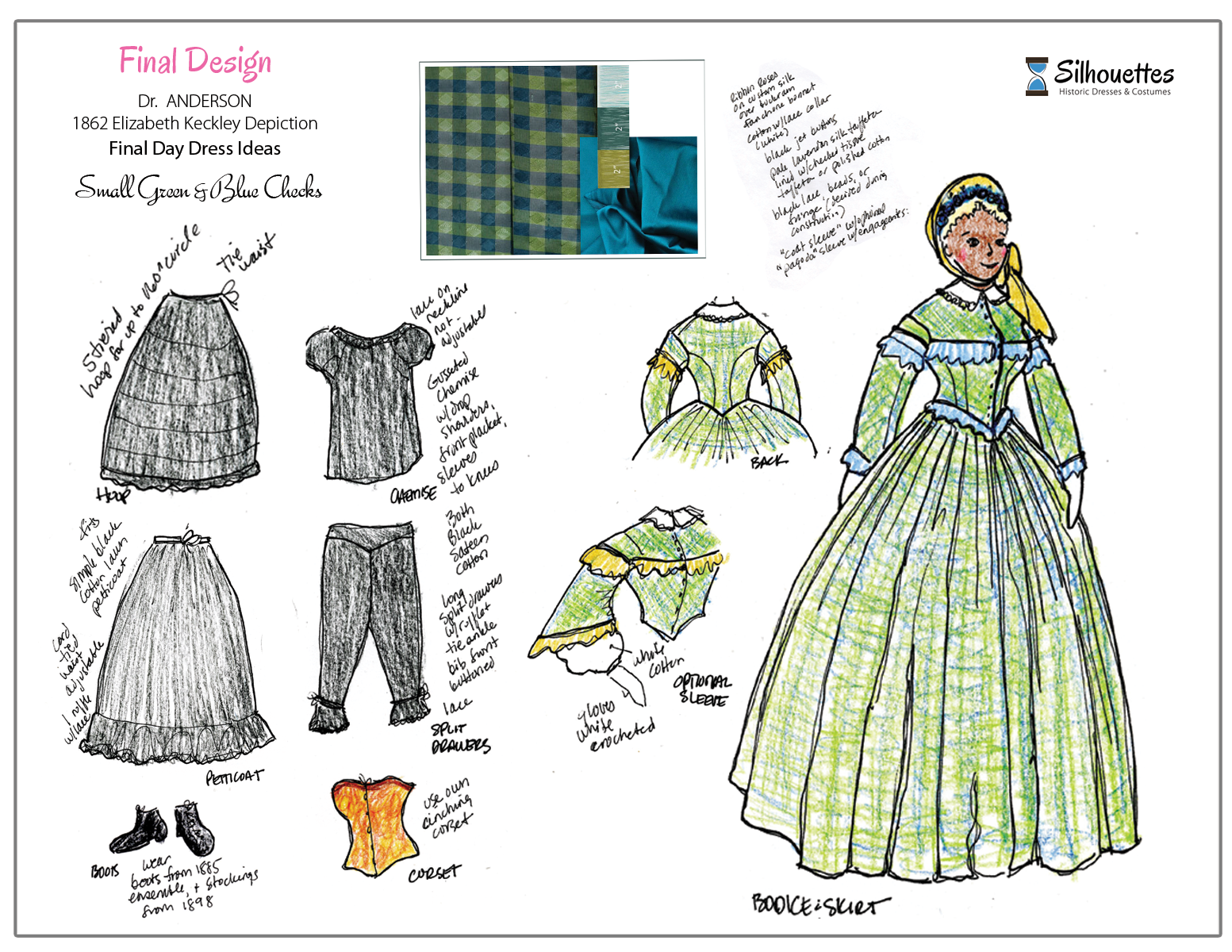
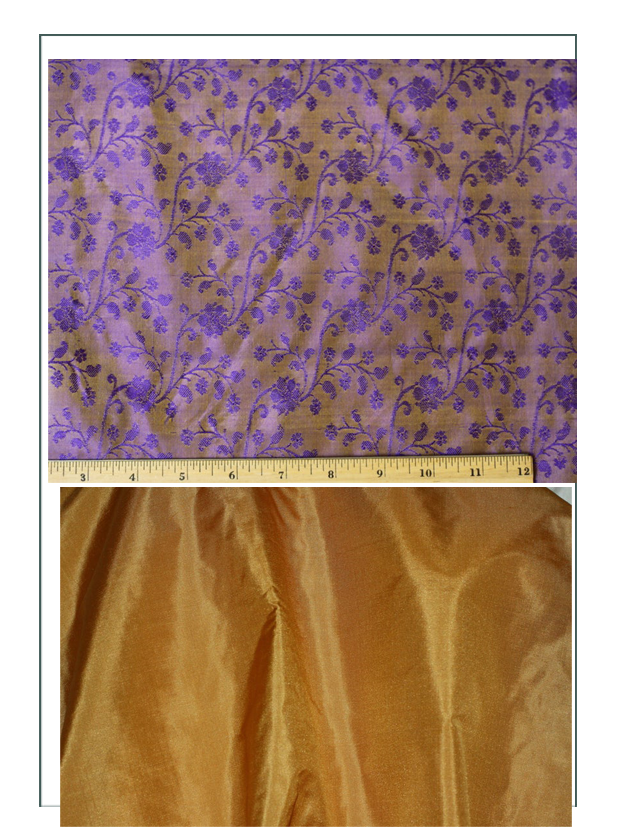
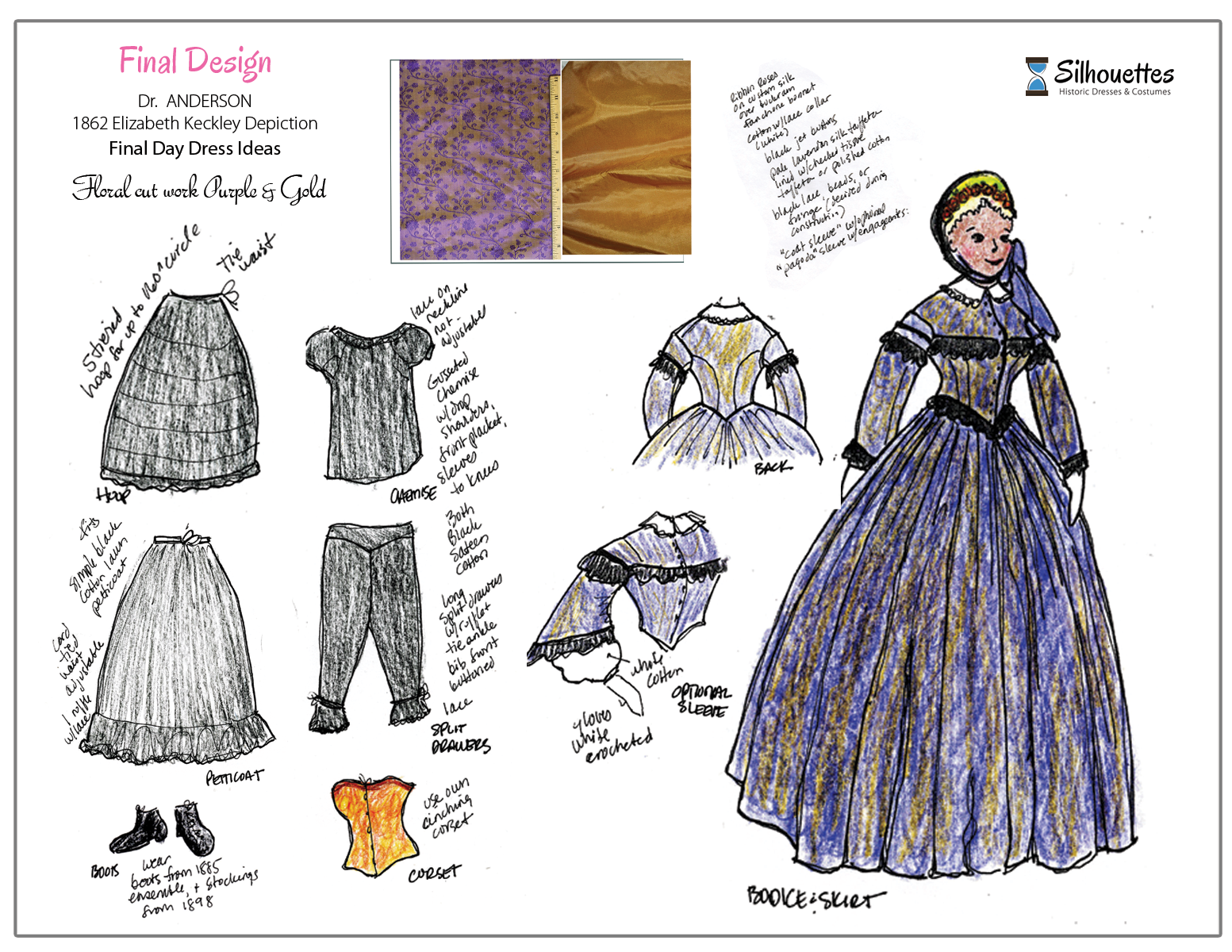
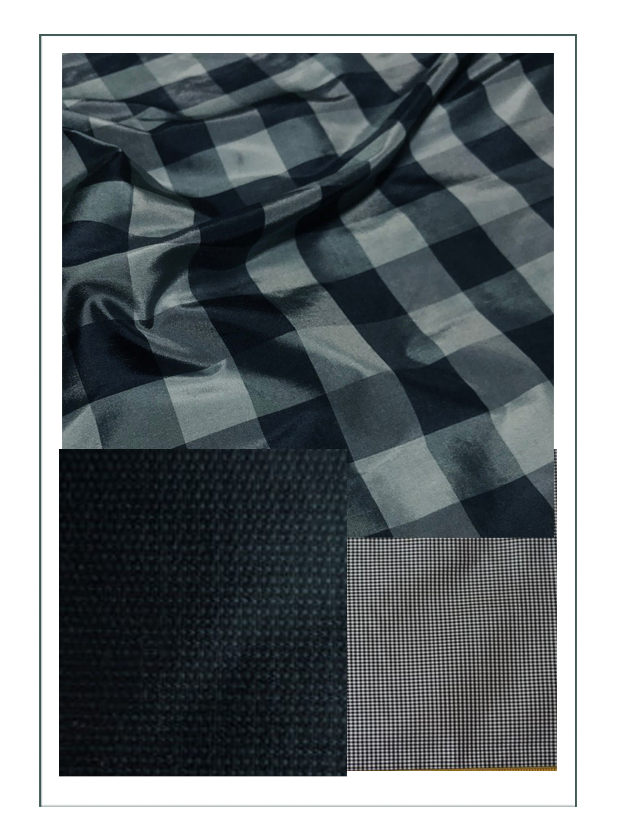
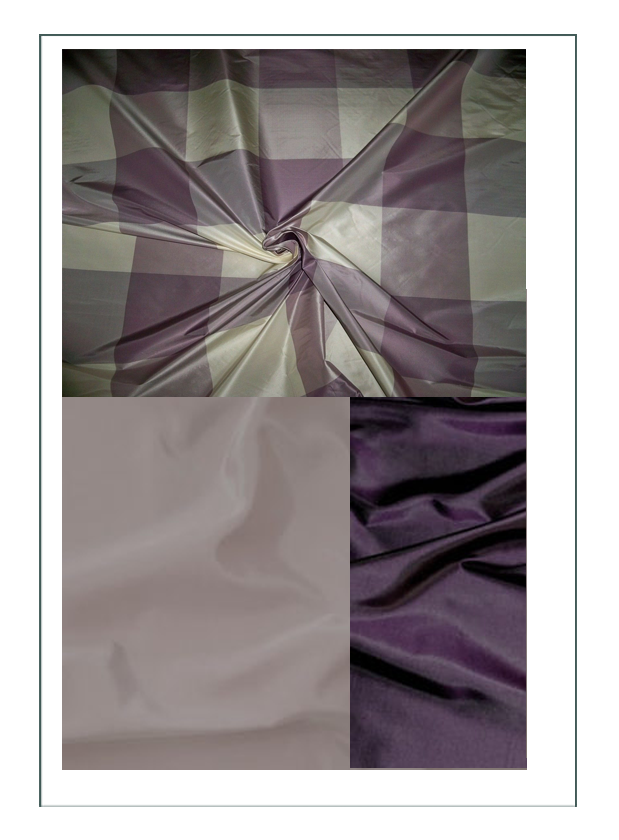
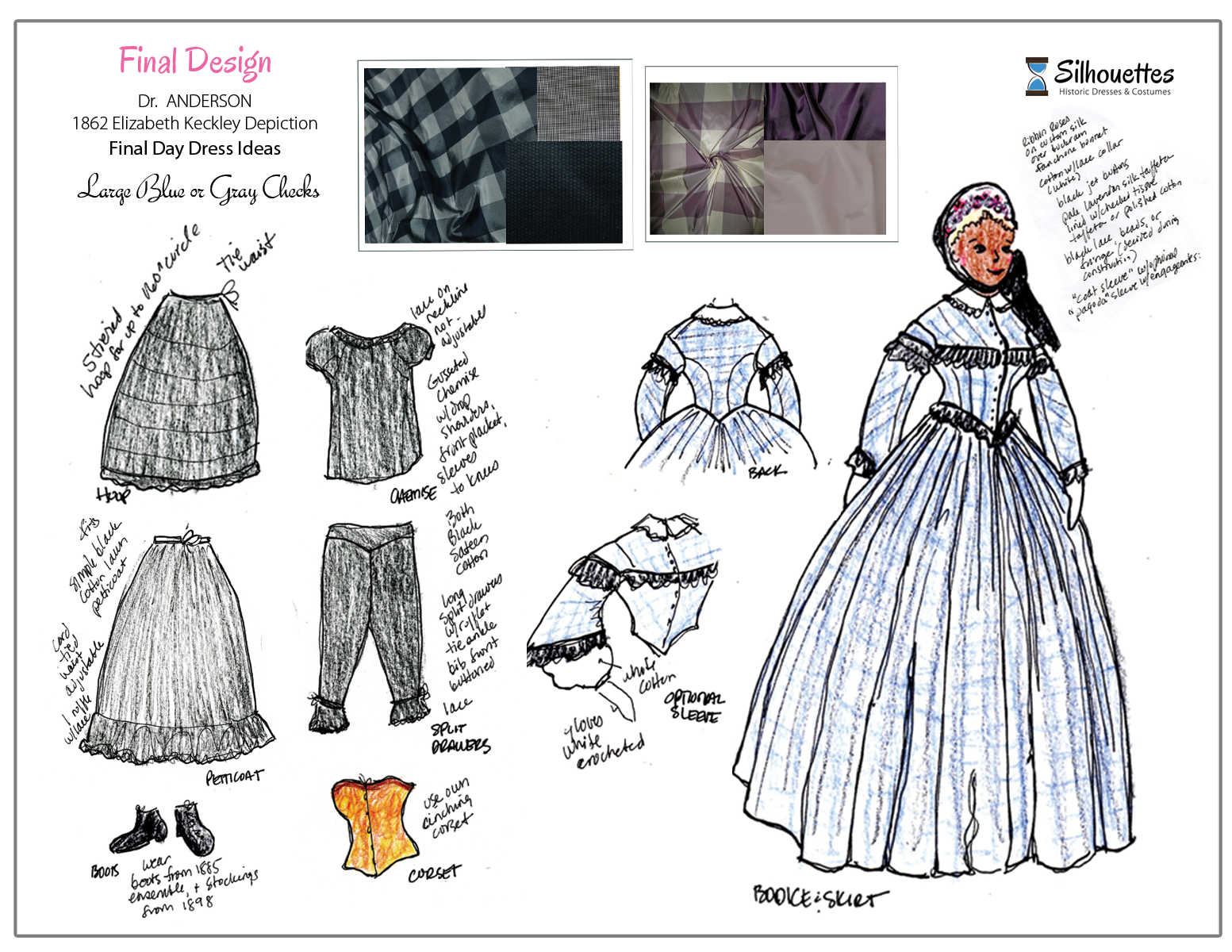
And the Decision is..!!!

(With small checked lining, ribbed silk taffeta, abalone shell authentic cameo, midnight blue (almost black) silk taffeta for the linear trim, and beads on a ribbon). We will build the larger sleeve with a lace over cotton engageante with matching lace and cotton removeable collar. (not shown here)
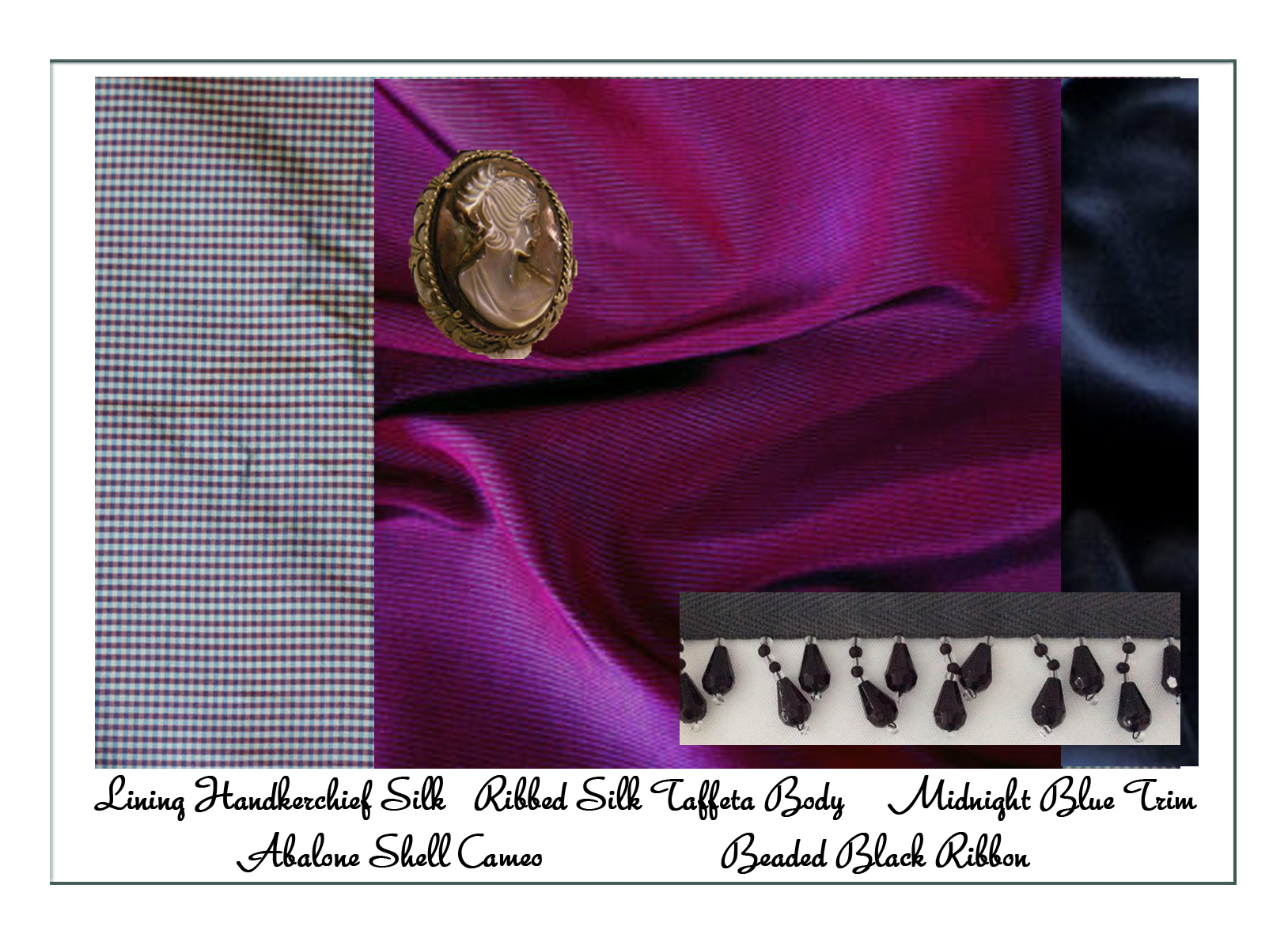
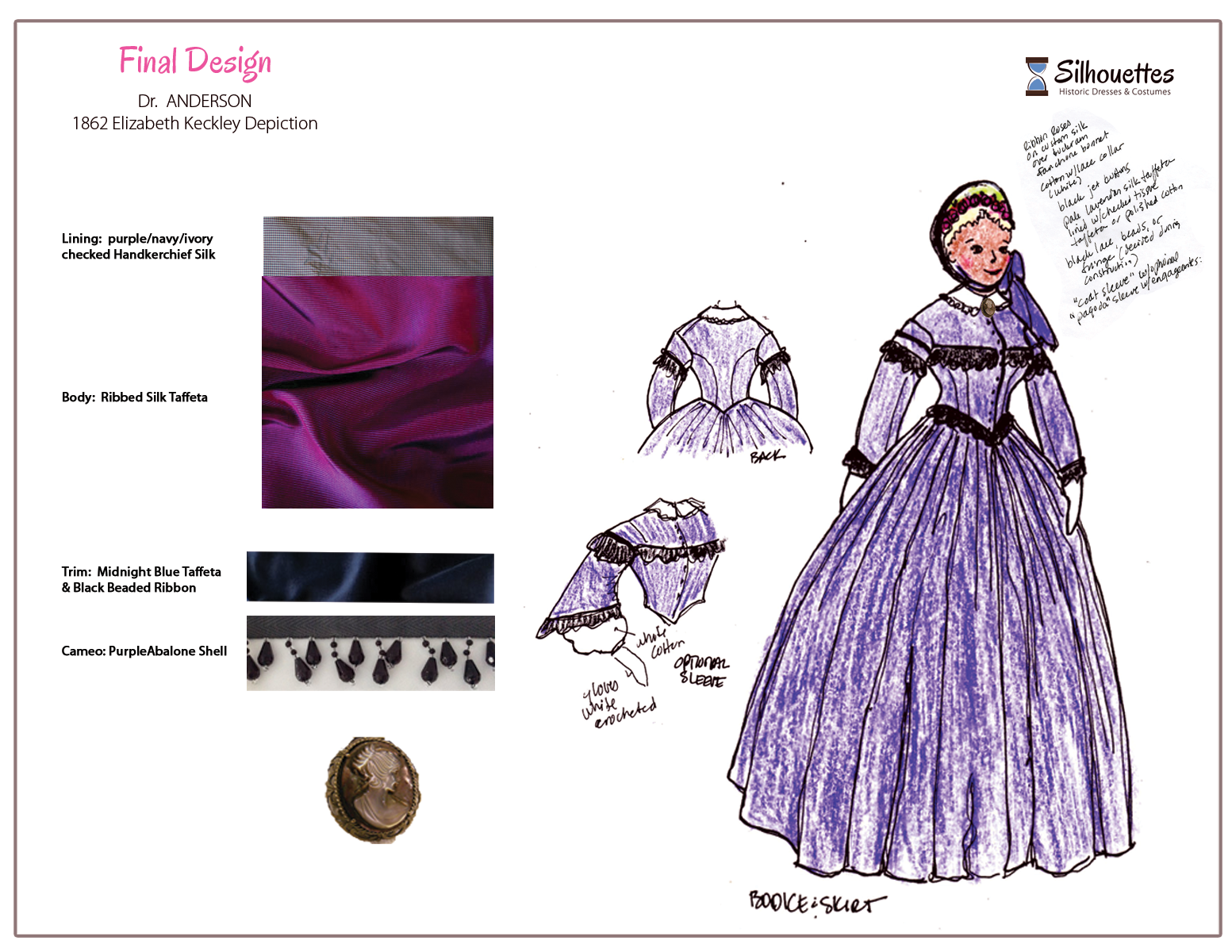
Click here to go to the main page with the finished project (next)
Click here to go to the historical context page

